The Interview I Art Collector Zaphodok
The interview with the art collector Zaphodok
In the shifting tides of both contemporary and digital art, one constant remains: the crucial influence of collectors. They are the architects of the ecosystem, molding and guiding its evolution with every acquisition. Their passion, foresight, and unwavering dedication don't just sustain artists—they actively propel the cultural trend. In a series of interviews, Kate Vass seeks to peel back the layers and get to the heart of what drives a new wave of collectors—their connections with artists and the deeper motivations behind their digital art collections.
In this discussion, we had the distinct pleasure of speaking with zaphodok, a passionate art collector who has been pushing the boundaries of art at the intersection of internet culture since the beginning. His collection, a treasure trove of generative and AI-driven works, offers a rare glimpse into the future of art.
We hope you find as much inspiration in this interview as we did in bringing it to you.
KV: Can you recall your first encounter with art and describe what motivated you to start collecting?
ZP: I'm afraid I cannot; the creative industries have been my natural habitat since a young age, and I am grateful to have been able to turn my innate passions into a career. The motivation to start collecting digital art specifically, stems from the fascination with the revolutionary underlying technology that allows us to do so in a native way.
KV: You began collecting digital art relatively early, starting in 2018. What inspired you to start collecting digital pieces?
ZP: The first non-fungible digital collectible I can think of was a documentation of one of my own analog works, minted on Bitcoin via Ascribe in mid-2015. Having been familiar with the concept of Colored Coins, I was drawn to Ascribe's innovative approach to authenticating creative works of any kind. It ultimately remained a one-time experiment.
Fast forward two years and a few months after going astray in the Cryptokitties craze, I dabbled into SuperRare. A publication platform and marketplace for digital art powered by Ethereum smart contracts with a simple and compelling value proposition for artists and collectors alike. Peer-to-peer trades between artist and collector, permissionless transfer of ownership, instant payments with magic internet money, and baked-in royalties on secondary sales, among other features were, an inspiring vision of a sustainable autonomous zone for art in the digital age.
KV: Do you have any formal education in technology, finance or art? Do you collect items other than digital art?
ZP:I am an architect, artist, and educator with over two decades of work experience. In 2020, I left my tenured academic position to prioritize family matters and my newfound passion for art on the blockchain. I do not collect items other than digital art except a few analog companion pieces, oddly labeled as “phygital”.
KV: How did you acquire the very first piece in your collection, and what was this work?
ZP: It was on April 28th, 2018, at 4:50 PM UTC (had to look this up on the blockchain), that I was determined to buy a tokenized artwork on SuperRare. Browsing through the nearly one hundred highly diverse pieces available felt like taking a walk on the wild side. Eventually, I left-click-bought a digital painting entitled 'Ship' showing a tanker sinking or cruising in the desert, created by an anonymous internet artist. For a brief moment the surreal subject matter brought to mind 'Aircraft Carrier City in Landscape', a provocative project by Austrian architect Hans Hollein from the early 1960s. But I didn't bother with any further research or classification whatsoever; I was simply relieved that the wallet successfully processed the transaction and that the piece appeared in my wallet address on Etherscan. To be honest, even with a decent understanding of the underlying tech, the notion of spending 0.1 ETH (around $68 at the time) on a JPEG from the internet was quite intimidating.
Aircraft Carrier City in Landscape project, Exterior perspective by Hans Hollein , 1964, copyright @MoMA
KV: What defines your collecting style? Is there a common theme or element that unites your collection?
ZP: I embarked on this journey with an open mind, and no expectations, and allowed myself to be drawn into this new realm of digital collecting. When I approach artworks, I don’t typically experience a strong emotional response or get caught up in introspective contemplation. For the most part, I view them as critical, thought-provoking vessels of encoded knowledge, brought to life through the most radical form of human expression. As Florian Schneider, a former member of the electronic band Kraftwerk, remarked, "If I wasn't making music, I could just say it" highlighting the unique property of artistic practice to convey what ought to be said in a way that language alone cannot. I am currently exploring various thematic avenues, including medium nativity, EVM art, renitent systems, and historical digital art. However, I believe the unifying theme of my collection is the pursuit of art as a catalyst for creating new perceptual and conceptual categories in the digital age.
KV: How do you see your role as a collector in the space and how did your collecting style evolve over the last 6-7 years?
ZP: As an advocate of cypherpunk values and ideals, I prefer to maintain a low public profile. If cypherpunks are touted to write code, then collecting art is my humble contribution to timestamp the associated ideals on the blockchain. I do not define myself by any specific role. Every now and then, people approach me and credit me with integrity and good instincts, which is more of a compliment than I could wish for.
Just as no man ever steps in the same river twice, collecting is a dynamic and iterative process. It’s a journey that demands curiosity and the courage to evolve and grow. As I encounter new artists, curators, and collectors, I find myself drawn to their unique perspectives and experiences. Throughout this ongoing journey, I strive to keep a balance between open-mindedness, experimentation, and a commitment to the core values of the Cryptoart movement.
KV: If you had to highlight one or two artists or an artwork from your collection, who would they be and why?
ZP: Rhea Myers’ “Is Art” (2014). A piece that represents the epitome of blockchain sculpture, a minimalist test install of Cryptoart, on the test fabric of Ethereum, anticipating the main properties of smart contracts and digital ownership on an open permissionless world computer. All of Rhea's works are, first and foremost, a delight for the synapses.
Anna Ridler’s “Bloemeveiling”(2019). There is nothing to be seen here, nothing to look at or listen to. A series of tokenized, tantalizing AI-generated tulips that wither and die the moment you gaze upon them is just a poor digest of the critical depth, the historical references, and the overall brilliant execution. A masterpiece that I was fortunate enough to witness at the time it took place.
(After watching the Tulip for one week, the smart contract automatically burned the token from the owner's wallet - Burn transaction)
KV: Could you share a memorable story from your collecting experience, perhaps a funny/sad story, or a near miss?
ZP: A memorable story happened during the 2018 Christie's Art+Tech Summit in London. After announcing it on Twitter some weeks prior and twice earlier on the day of the event, Jason Bailey informed the audience during the concluding panel that the gift cards containing the tokenized artworks by Robbie Barrat could be found in the giveaway bags at the entrance—one bag for each participant. As an admirer and early collector of Robbies’ work on SuperRare I looked around the room, but there was zero reaction from the audience. I got up, quietly left the conference room, grabbed my belongings, and hurried down the stairs. The bags were lined up on the counter, with no one else around. I politely asked the receptionist if I could possibly have four of them. She agreed with a smile. I quickly disposed of the unnecessary inserts in a nearby park and rushed back to my hotel room to redeem four frames of “AI Generated Nude Portrait #7” which later became the lore of “The Lost Robbies”.
It wasn't until weeks later, after the initial excitement had faded, that I realized I had claimed more pieces than I should have. To truly preserve the value of an artwork in a decentralized network, its stewardship must also be distributed—one bag, one participant, and one pair of shoulders. With this idealistic conviction, I set out to divest the excess pieces. I donated one to XCOPY's 2019 charity auction through his XERO Gallery and later sold two others for a modest sum to well-known collectors. However, the remaining piece is a permanent fixture in my collection, never to be parted with.
KV: Have you ever collaborated with artists or other collectors in the NFT space? Can you share a particularly meaningful experience?
ZP: Since 2019, I have been involved in various blockchain art projects, both as a member of multidisciplinary teams and as an advisor to curators and institutions. I've also commissioned several pieces from artists. However, I have yet to collaborate with fellow collectors in a way that feels truly meaningful and productive. I plan to prioritize this in the months and years ahead. Nevertheless, the most enduring experiences will always be those in-person occasions when people from the space come together and share a good time.
KV: Where do you see the future of the digital art market heading?
ZP: Industry reports indicate that, compared to the traditional art market dominated by analog art forms, media arts remain still niche and insular. How can one expect that the 2021 NFT hype would make any difference in this dynamic? However, the growing awareness of digital assets, demographics, efforts in financial and digital literacy, and innovations in showcasing technologies i.e. are likely to contribute to a broader acceptance of born-digital art forms. It is reasonable to expect the current active web3 user base to increase substantially over the next decade. The writing is on the wall of the Vienna Secession Building "To each age its art, to art its freedom", a reminder of the inevitable evolution of artistic expression alongside human progress.
'CENTS' by Rutherford Chang, 2024
KV: They suggest that the traditional art world's reluctance to embrace digital culture stems from the challenges of integrating digital aspects into everyday life. How do you exhibit your collection? Are there any pieces that are always on display in your home, and if so, how do you present them?
ZP: There is arguably a need for suitable display solutions for native digital art, to evolve beyond its tech-savvy niche status and appeal to a broader audience. The current state of the market, with start-ups experimenting with subpar technology, established screen providers lacking cultural understanding, and high-end products with short lifespans, fails to meet the needs of this space.
In my personal IRL environment, I use a couple of NFT art screens for curated playlists, along with some self-assembled devices for real-time screen-based works, complemented by a few prints and analog collectibles. However, the vast majority of pieces have not had the chance to adequately see the light of day in my home.
***
*The responses provided in this interview have been preserved in their original form, with no alterations to the interviewee's stylistic choices or grammar. - Kate Vass
zaphodok on X: @zaphodok
Website: https://zaphodok.art
Collection link: https://gallery.so/zaphodok
The Interview I Art Collector TaCyTurn
The interview with the art collector TaCyTurn
Cover: payaso, 2021 by Manoloide
Collecting art isn't just about acquiring objects; it's about curating stories that enrich our cultural tapestry. Collectors are the custodians of creativity, preserving and promoting the voices of artists who shape our understanding of the world. Their passion fuels a dynamic exchange where art transcends mere decoration to become a reflection of our shared human experience.
Through a series of interviews, Kate Vass seeks to understand the perspectives of a new generation of collectors, the relationships they build with artists, and what drives the formation of their collections.
In this conversation, Kate Vass had the pleasure of speaking with the art collector, aka, TaCyTurn, the degenerative Maths Lover, creator, and member of @fingerprintsDAO.
payaso, 2021 by Manoloide on hicetnunc
KV: What initially sparked your interest in art collecting?
TT: As a young kid in the 80’s, I’ve been fascinated by computers, programming, and graphics.
I started to play around with BASIC language and was triggered by graphics and animation created by demo scene creators, especially on Amiga or Atari…
But for 30 years I built my career and family and although I grew up with the internet, I didn’t pursue that much this path.
Then in 2017, I discovered Bitcoin and blockchains and honestly, I took a slap in my face!
How was it possible I didn’t find out about this earlier!!!
I spent some time in this rabbit hole, fascinated both by the technology but also the opportunity of making big money. sometimes I came across digital Art during this period: Money Alotta, Rare Pepes, Cryptopunks … but didn’t pay attention.
Then in early 2021, Beeple’s infamous sales ignited the NFT mania and then I discovered generative Art ...and took a second slap! I got back the tech, maths, and computer graphics vibes I loved 30 years ago and I happily dived into the so-called “NFT space”, on Ethereum and on Tezos with HicetNunc ( fun fact, I minted myself an artwork before collecting my first … hen #365 ).
KV: How do you decide which pieces to add to your collection?
TT: As a mathematics lover, I’m very attracted by pieces that play, and highlight the beauty of maths, whether the form: geometric, conceptual, or algorithmic, …
But my main interests are experimentation, technology, roughness, and weirdness … and of course my guts!
KV: What role does personal taste play versus investment potential when acquiring art?
TT: Way too much, lol !!!
I mean I collected a lot of pieces only because they are appealing to me, without overthinking.
I rarely buy pieces just for investment potential, although I’m convinced a lot of pieces and artists will become valuable in the long term.
KV: Can you share a story behind one of your most cherished pieces?
TT: In March 2021, I discovered DEAFBEEF’s art @_deafbeef. He was just beginning at the time and not much was known.
I jumped into his discord, and then he organized a giveaway for a SYNTHPOEM. I will always remember that morning when I woke up and saw a discord notification and a new Direct message from Tyler: « Hey you won, pls send me your ETH add » !!! This SYNTHPOEM allowed me a few times later to collect a GLITCHBOX, which is one of my favorite artworks and I became very involved in DEAFBEEF’s community, using his artworks to make experiments like “the Glitchbox Orchestra”. The story could end there but …
In 2021, I also discovered Mitchell F Chan's Digital Zone of pictorial. Reading the blue essay was a blast and triggered me so much that I translated it into French.
In November 2022, Mitch announced the release of a gorgeous physical Blue Book for each token holder … Then my goal of acquiring a Digital Zone became an obsession. For 2 years, I asked several owners if they would agree to swap their Digital Zone for my Deafbeef SYNTHPOEM. I was surprised a handful were interested but according to the price gap were asking me to add some ETH …
Finally, in May 2024, another collector agreed to swap 1 vs 1 and with the help of Mitchell himself we processed the deal, and I am finally the proud owner of IKB 54.
I find it very telling and ironic that 2 of my most valuable pieces were gifted to me for free.
Glitchbox 205, 2021 by Deafbeef
KV: How has your collection evolved?
TT: My collecting volume has slowed down in 2023/2024, but I’m happy still to be able to acquire great artworks and opportunities when they appear.
fx(hash) and objkt.com are goldmines and allow me to discover and collect amazing pieces with a low budget. Verse is also a major platform for me.
I’m also more patient and can wait months, or years to collect a piece I’m eyeing. So in a word, I would say I'm more selective.
KV: What trends do you see currently shaping the art market?
TT: AI art, early or recent is a major trend right now, as it accompanies a ground-breaking emerging technology …
Generative Art hype is down from the @artblocks_io 2021 craze, and I feel a lot of collectors feel bored and worn, they believe everything has been made and there are no more surprises or innovations left… I’m convinced that artists will prove them wrong.
Last, I consider « net Art » ( Art that plays with the Internet ) and « blockchain Art » ( Art that plays with blockchains ) are for the moment very sharp niches with few artists and way few collectors but will gain traction and importance over the years.
KV: How do you balance supporting emerging artists with acquiring established works?
TT: As a very early bird on Hicetnunc, supporting anonymous/emerging artists has always been part of my collecting habits.
Now, I’m still trying to balance my collection in volume, but the ratio in value is almost established by artists.
KV: How does the digital art world, including Crypto Art, influence your collecting habits?
TT: The main influence on my collecting behavior comes from friends, some artists I love, and a few institutions like LeRandomart, Verse.works, Feral File, Kate Vass Galerie …
In all that abundance of information and noise, they’re lighthouses that help me to keep track of what really cares for me and learn.
Anticyclone #470 by William Mapan (Seedphrase Collection)
KV: What challenges have you faced as an art collector?
TT: Funding is a major challenge as my pockets aren’t that deep and I rarely play the speculation game …
But for me, the main challenge now is to organize, curate, and build a beautiful and meaningful gallery where others could enjoy and appreciate the 20-30% pieces of my collection I want to display.
I know and have tried a lot of platforms: DECA gallery, oncyber, …
But it is really a hard and very time-consuming task to do …
A very good example of a perfectly displayed and organized gallery is @lemonde2d DECA gallery.
I hope I will soon find time and inspiration to pursue my own.
KV: What advice would you give to someone just starting their art collection? Can you recall your first encounter with art and describe what motivated you to start collecting?
TT: I think Artnome's infamous quote perfectly sums it all:
‘BUY ART YOU LOVE, from artists that you want to see succeed, for prices you can afford, with the assumption that you'll never be able to resell it again, and you will always be happy’ - Artnome
Also, I would add to find your thesis, your guiding line (whether it’s a theme, a technology, etc …) that will drive you and help you to grow your collection and stay focused in this ocean of digital art pieces …
For example, I would label mine as «an experimentation in technologies »
KV: What matters most to you as a collector? Is it a curated program or clear provenance? Or perhaps the work needs to be on-chain and on a specific blockchain like Ethereum or Tezos?
TT: I value a lot of experiments in the artwork or artist’s process, and for sure the fact that the artwork is on-chain is a major plus for me.
I’d say I'm chain agnostic in theory, but, in reality, it’s so hard and time-consuming to keep track of all platforms and wallets so I‘m mostly collecting only on Ethereum, Tezos, and Bitcoin/Ordinals …
Finally, I would like to mention that a side effect of collecting digital art is that I started to create myself with maths, code and lately code+AI.
I'm very happy and proud to be able to express myself with these artworks.
Also, to experience the joy of being collected by others.
And last, releasing a long-form generative series made me realize even more the difficulty and beauty of such collections: finding, and tweaking the good set of parameters to find the sweet spot where there are consistent outputs but diversity and variance are so too!
***
*The responses provided in this interview have been preserved in their original form, with no alterations to the interviewee's stylistic choices or grammar. - Kate Vass
TaCyTurn on X: @TacyTurnh
The Interview I Art Collector Jediwolf
Interview with art collector Jediwolf
Truly great collectors don't just aim to make money; they strive to live with major masterpieces, discover the work, and integrate it into their life experiences. The role of the art collector has always been crucial; without them, the art world wouldn't function, and artists wouldn't survive. Even the most impressive art museums owe much of their grandeur to donations from individual collectors.
Through a series of interviews, Kate Vass seeks to understand the perspectives of a new generation of collectors, the relationships they build with artists, and what drives the formation of their collections.
In this discussion, Kate Vass had the privilege to interview Jediwolf, a collector with a vision and dedication to collecting digital art on-chain. Jediwolf has significantly contributed to the provenance of early GANs creations. In a relatively short period, he has built an impressive UnderTheGAN collection, which focuses on early AI artworks verified by their tokenized nature. His influence in the digital art space is notable, particularly for his passion for the artist XCopy and his role in the formation of one of the most successful DAOs, The Doomed DAO.
We are fortunate to be the first to interview Jediwolf, who typically prefers to remain anonymous. Jediwolf describes his early love for art and his journey into collecting digital pieces, as his collection aims to honor the pioneers of AI art, emphasizing the critical need to understand and preserve the origins and evolution of this art form within the digital and blockchain realms. We hope you enjoy the conversation as much as we did.
KV: What's your earliest memory of art, and what led you to start collecting?
JW: I've been a collector since an early age. As a teenager, I acquired my first oil paintings online. They weren't expensive, but I adored them. Marine art resonated with me the most, and paintings by artists such as J.M.W. Turner and Ivan Aivazovsky were, and still are, breathtaking to me. Although I couldn't afford to buy their works, they were my first true love in the world of art.
Ivan Aivazovsky, The Sea. Koktebel, 1853
KV: What constitutes “art”? What makes a work of art – “art” from your perspective?
JW: You know, art and its perception is totally a personal thing. It's like... imagine you've got this secret, beautiful tune playing in your head when you look at something. The louder that song plays, the more the art hits home. It's tough to put into words, but I think it just clicks on a subconscious level. Everyone has their own 'song', I believe.
KV: How did you acquire the very first piece in your collection?
JW: My collection mainly consists of @XCOPYART art (overeXposed collection) and early AI art (UnderTheGAN collection). The first XCOPY piece in my collection was 'Taxmen' 2019, 20/20 KO edition, acquired in May 2022.
KV: How would you describe yourself as an art collector?
JW: I see myself as a curator-collector and researcher. I'm learning to trust my intuition, especially when it comes to collecting, and not just following the crowd. It's fine to follow others when it helps you discover new things and learn, but if you're doing it just for speculation, there's a good chance it won't work out. After all, the art market is incredibly tough to speculate in.
KV: What defines your collecting style?
JW: I would describe my collecting style as 'counter-intuitive’. Generally, I prefer to buy works that resonate with me but aren't yet in the spotlight. For example, I started collecting XCopy early editions in 2022 (after the NFT bubble burst, and I was the only 'big' buyer for quite a long time) and early AI art in 2023 (probably spending the largest amount of funds in this genre as an individual collector), both of which weren't obvious choices for most participants in the blockchain-based art space.
KV: Have your reasons for collecting art evolved over time?
JW: Again, this motivation is hard to explain as, for me, it works on a subconscious level. When I see a piece that resonates with me and fits my collection, it becomes a bit of an obsession. It's something built into me, and I don't think it will ever change. However, curating my own collections, improving them, and supporting others gives me a lot of joy, and it's a somewhat new experience. The Doomed DAO is also a cool example of a mutual initiative where we collect XCOPY art as a group of over 120 people. I was one of the founding members.
KV: Describe your collection in three words.
Built with love.
KV: Is there a common theme or element that unites all the works in your collection?
JW: For my UnderTheGAN collection, I've focused specifically on 'early' AI art, created a few years before Midjourney and Stable Diffusion were released and before this 'genre' exploded beyond imagination. There are absolutely fantastic artists and pioneers who were training their own advanced AI models (2014-2019), putting lots of heart and soul into the process when no one really knew 'AI art' was even possible. I can see and feel it in each of these works.
KV: Do you have relevant education in tech or art? Do you pursue other hobbies or collect other things, and if so, why?
JW: For all my professional life, I've been in tech, and it probably made it a bit easier for me to understand tokenized/blockchain-based art faster than many other trad art collectors out there. I believe that eventually, we will reach a mass adoption where digital / blockchain-based art will be as 'normal' as trad art in the average person's perception. I would even say that youth will enter the art world through digital art, so I expect a major shift here. The reasons are quite obvious, I believe.
KV: What aspect of collecting do you enjoy the most?
JW: Probably the chasing aspect. Once I discover a work I really like, I do the research and conclude that it's something I really want to possess. The chasing part that comes next is definitely the most exciting. The acquisition journey (which can be very long, if it happens at all) brings emotions that will stay with me forever
KV: Can you share a funny/sad story or a “the one that almost got away” story from your collecting experience?
JW: One of the most emotional moments for me was acquiring 'Last Selfie' in 2022. I had been pursuing it for months (with no success), as it was the most coveted XCOPY artwork in my eyes and resonated with me deeply. Then, out of the blue, it was listed at an unimaginable price for a 10/10 edition: 200 ETH (around $700k today). My hands were shaking as I prepared and transferred the funds. An hour later, I discovered it was the very first minted edition of 'Last Selfie' (#1). The joy I felt was indescribable, and even now, that joy remains.
KV: Could you tell us more about your UnderTheGAN collection? Do you plan something additional with your collection?
JW: UnderTheGAN isn't just a collection; it's my personal AI art research project, recently brought to life within the early AI art timeline on Ethereum.
Today, AI art has surpassed all our predictions and continues to evolve at a breathtaking pace. But for me, what's truly crucial is understanding its origins - tracing back to where it all began. A small group of AI art pioneers, including Robbie Barrat, Mario Klingemann, David Young, Gene Kogan, Bard Ionson, Pindar Van Arman, Memo Akten, Mike Tyka, Alexander Mordvintsev (and others) were the true godfathers of the AI art revolution we're witnessing today. My mission is to share the knowledge I've accumulated through my research, shining a light on these foundational figures and their groundbreaking work.
The Definitive Timeline of Early AI Art on ETH V1, courtesy of Jediwolf (https://x.com/randomcdog/status/1798340316967116897)
KV: What is the most recent piece of art you added to your collection and why?
JW: My most recent acquisition is 'Cats' by Alex Mordvintsev, the creator of DeepDream. This piece was generated in May 2015, predating the July 2015 open-source release of DeepDream's code. It took nine years to secure Google's permission for Alex to 'release' this artwork, and I'm immensely proud to be its owner.
'Cats' is unique in my collection as a "retroactive mint" - generated in 2015 but only minted in 2024. I typically avoid retroactively minted artworks unless they meet two crucial criteria: historical significance (such as being among the first DeepDream works ever generated) and strong provenance. In this case, both boxes are checked.
KV: Has digitalization/blockchain changed the way you collect? Can you imagine collecting AI art without blockchain or NFTs?
JW: Yes, I must say I became very spoiled as a collector. The fact that you can trace the artwork from its inception, have 100% guaranteed authenticity, and can trade globally (and instantly) without any third-party risks takes a lot of burden off collectors' shoulders. It's hard to keep buying art IRL when blockchain is an alternative. So, I'd rather avoid it at this point, with some exceptions, of course. IYKYK
Robbie Barrat & Ronan Barrot, Infinite Skulls, 2019 ( Jediwolf’s the UnderTheGAN Collection )
KV: What or who has influenced you as a collector? Are there any collectors you admire or watch out for?
JW: Yes, there are many wonderful collectors whom I admire. If one is interested in early AI art, I recommend Zaphodok, Batsoupyum, WangXiang, Hackatao, 6529, TokenAngels, Coldie, Artonymousartifakt, Colborn and MOCA collections. For XCOPY - Liquid (@l1qu1d_), ModeratsArt, Cozomo, Krybharat and many others. What I appreciate most is their ability not only to appreciate art but also to have the conviction and guts to hold onto it through both good and bad times. All the individuals I've mentioned are remarkable collectors, and some of them are artists as well, which I find absolutely amazing.
KV: What has been your experience with the elitism associated with the art market, particularly in the realm of digital art? Do you believe the market for ‘grails’ is already well-developed?
JW: I must say it's quite well-developed. Many think NFTs are 'dead'. However, when you want to acquire a truly desired work such as a 'Lost Robbie' or one of XCOPY's top editions or 1/1s, you will have to pay Substantially, and there is no chance someone will 'dump it'. Also, the 'grail' buzzword is heavily overused. The number of artworks I personally perceive as grails is tiny and limited to only a few 'names' in the blockchain-based art space today.
KV: Where do you see the future of the digital art market heading?
JW: I believe the digital art market will eventually dwarf the traditional art market. However, this transformation won't happen overnight - it could take years, perhaps even more… The digital art space has its own masters and pioneers, figures who are pushing boundaries and redefining artistic expression. It's perfectly natural that it will take time for the broader world to recognize and appreciate their contributions.
KV: What are your top three pieces of advice for new collectors?
JW: Develop your own opinions. Aim to acquire pieces that are so rare and desirable that once you sell them, the opportunity to repurchase them is almost nonexistent. Acquire what you love and what is truly hard to obtain.
KV: What are your top three pieces of advice for artists?
JW: Sell only what you are proud of. Treat collectors as your ambassadors - there is a great power beneath each artwork held by an engaged collector. Be a collector of your own works.
***
Jediwolf on X: @randomcdog
Collection on Superrare: https://superrare.com/jediwolf
UnderTheGAN Collection: https://opensea.io/UnderTheGAN
The Art and Science of Alexander Mordvintsev
Alexander Mordvintsev is a researcher and artist based in Zurich, Switzerland. He is best known for creating the DeepDream algorithm, which was introduced in 2015 and marks a major milestone in AI image generation. DeepDream demonstrates how machines can assist in creating images that abstract reality in ways humans might not conceive on their own, offering a new way of seeing. It has since inspired a new wave of artists experimenting with AI. Apart from his significant contributions to this technology, Mordvintsev is also an active artist. In our article, we delve into both his invention and the beginning of his artistic journey. As we mark the 5th anniversary of our iconic “Automat und Mensch” exhibition, where we first showcased his creations, we are pleased to present a selection of his early pieces created before DeepDream was open-sourced (2015 July). These works, initially not offered for sale, are now available, providing collectors a rare chance to engage with an important moment in art and technology.
When Alexander was about six years old, father brought home an amazing thing: a computer and a bunch of books full of tiny programs that one could type in. Many of these programs displayed interesting geometric patterns on an old black-and-white TV that served as a monitor. That’s how Alex fell in love with computers and generative art. This was the beginning of an exciting journey full of meeting and learning about great people, discovering great ideas from the past, and observing recent developments. Simulations of emergent phenomena, when simple rules lead to complex and unpredictable behavior, were particularly exciting. Demoscene was another source of inspiration for Alexander and this interest culminated in the display of own work “The Flow” at an Assembly demo party in Helsinki in 2009. Soon after graduation from Saint Petersburg State University of Information Technologies, Mechanics, and Optics Mordvintsev got heavily interested in Computer Vision. The challenge of teaching computers a skill that is so easy for us and so difficult for them was very deeply fascinating. After joining Google in 2014 Alexander got introduced to a modern generation of neural networks, and they certainly exceeded his expectations on what computers are capable of. This opened a new chapter for Alexander, in which he spent several years trying to figure out what’s going on inside. DeepDream happened to be one of the experiments trying to answer that question that got world attention.
At the time, Google led the field in neural network research with figures like Geoffrey Hinton and Jeff Dean, who headed the teams behind the Google Brain in Mountain View. In Mordvintsev’s initial years at Google, he studied key research papers and experimented with pre-trained recognition systems. He took advantage of Google's policy, which encourages employees to dedicate twenty percent of their work time to personally inspired projects, to delve into reverse-engineering image-trained neural networks. His goal was to unravel and visualize the inner workings of these technologies.
By early 2015, he had achieved some visually interesting results, but the true breakthrough came unexpectedly late on the night of May 18. Awakened from a nightmare at 2:00 am, he was inspired to start an experiment. When the experiment finally succeeded, he immediately shared the results on a company social network and then returned to sleep. The following morning, he received numerous comments from his colleagues at Google who quickly recognized the significance of his work. This initial interest in DeepDream was just the beginning of what would soon become a viral phenomenon.
Alexander Mordvintsev, DeepDream is like looking at the clouds, 2015/05 (Not for sale)
Mordvintsev's innovation allowed the computer some autonomy to "dream", thus revealing the complex and often surreal workings of its data processing. His experiment reversed the standard image recognition process in convolutional neural networks (ConvNets), primarily used for vision. These networks usually process images layer by layer, each interpreting and refining the data to construct a final image from basic shapes to detailed recognitions. Mordvintsev interrupted this forward processing to manipulate the mid-layers, coaxing the network to enhance and generate features from partial data, resulting in bizarre, hybrid creations. This exploration of neural networks' "hidden layers" provided valuable insights into their operation. Mordvintsev's work suggested a parallel between the function of these neural networks and human perception, both capable of identifying shapes and patterns where none explicitly exist.
The final images that emerge from DeepDream are often characterized by intricate, hallucinogenic patterns and a dreamy, surreal aesthetic. Common visuals include enhanced textures and repetitive patterns, such as eyes or architectural forms, which emerge organically within the image. At the beginning, the system often created images that combined elements of dogs and cats into a fantastical creature. Mordvintsev utilized a pretrained neural network known as ImageNet, which has been a benchmark for image classification since its establishment around 2010. ImageNet is particularly noted for including 120 categories of dog breeds to demonstrate its capability for "fine-grained classification”. Due to this focus, there's a strong bias towards dog breeds in the dataset, which influences the results significantly. For one of his first experiments, he fed ImageNet a digital wallpaper image featuring a beagle and a kitten, each perched on tree stumps in a meadow. Interestingly, the output image was predominantly influenced by the dog category—despite the presence of the kitten in the image. This led to fragments of dog faces appearing in unexpected places throughout the image. The outcome was surreal, resembling something out of a hallucination, though its origins were not psychiatric or psychotropic but purely algorithmic.
Later, Mordvintsev published his work on DeepDream on Google’s public research blog, alongside his colleagues Christopher Olah, a software engineering intern, and Mike Tyka, a software engineer. The publication quickly captured the internet's attention. Within just a few days, the images were featured in over 100 articles, and spread across countless tweets and Facebook posts. The technology was made accessible to the public through a variety of apps and APIs, allowing anyone interested to create their own DeepDream images. This accessibility helped foster a thriving DeepDream community, significantly influencing public engagement with machine learning and computer vision. The impact of DeepDream extended beyond casual interest, inspiring some individuals to pursue PhDs in related fields and leading notable artists like Mario Klingemann to explore this technology and neural networks more broadly.
At that time, Mordvintsev didn’t view himself as an artist and considered these images to be merely byproducts of his research. However, in 2017, encouraged by his wife, he began to produce more art using DeepDream and eventually embraced the title of “artist” alongside his role as a research scientist. Since then, his art has been showcased worldwide in prestigious venues such as the Barbican Centre in London, Art Fair Zurich, and Gray Area in San Francisco, CA.
We are proud to have been among the first to exhibit his artworks in 2019 at our "Automat und Mensch" show, which highlighted the evolution of generative art from the 1960s to the present, featuring both pioneering and contemporary artists. At this exhibition, we displayed “Cats”, one of the first pieces he created using DeepDream in 2015. Initially, his works were not for sale. Now, as we celebrate the five-year anniversary of our landmark show, we are excited to present exclusive early works, giving collectors the opportunity to enrich their collections with these historically significant pieces.
Automat & Mensch 2.0 - 5 years milestone
“The romance of art and science has a long history, albeit a mixed one. Leonardo da Vinci (1452-1519), the artist and polymath active in the Florence of the Renaissance, still serves as the prominent example for the enormous creative potential flowing from the interactions of art and science.”
- Andreas J. Hirsch, The Practice of Art and Science – Experiences and Lessons from the European Digital Art and Science Network
As we walk into Kate Vass Galerie on this nostalgic May 29th, 2024, we feel like we're stepping back in time. It's been five years since the "Automat und Mensch" group exhibition fascinated everyone with its wide retrospective highlighting the history of AI and generative art in its attempt to cover 70 years of history in one location. Now, as we look back on this important milestone, we're taking a journey through how AI and generative art have changed since 2019, with both old favorites as our guides.
The exhibition, titled "Automat und Mensch", was curated with precision and foresight, showcasing a captivating mix of artworks by pioneering artists such as Nicolas Schöffer, Herbert W. Franke (still alive at the age of 91), Frieder Nake, Vera Molnar (still alive at the age of 95), Roman Verostko, Manfred Mohr, Gottfried Jäger, Harold Cohen, Benjamin Heidersberger, Cornelia Sollfrank, and Gottfried Honegger.
The show featured several generative works from the early 1990s by John Maeda, Casey Reas, and Jared S. Tarbell. Works by Matt Hall and John Watkinson, Harm van den Dorpel, Primavera de Filippi and Manoloide were also on display to represent the contemporary scene.
While the show’s focus was on the historical works, taking the name from the eponymous book by K. Steinbuch “Automat und Mensch” that inspired many generative art pioneers from the 60s, the shows also highlighted the wide range of important works by living AI artists like Robbie Barrat, Mario Klingemann, Alex Mordvintsev, Tom White, Helena Sarin, David Young, Kevin Abosch, Sofia Crespo, Memo Akten and Anna Ridler, whose groundbreaking practice has influenced many emerging artists since 2019.
As we journey five years back in time to revisit the show, our aim is to reflect upon the trajectory of AI in art and the evolution of generative art over the past half-decade. We explore the transformative impact of technological advancements, paying homage to pioneering artists who laid the groundwork, while also highlighting new artworks.
The Evolution of AI and Generative Art in a Historical Context.
From the intricate patterns of Manoloide's "Mantel Blue" to the surreal visions of Alex Mordvintsev's "DeepDream" experiments, the generative art scene has been defined by visionary artists expanding the limits of computational creativity for decades. While the fluid, organic imagery marks a shift from geometric abstraction, AI art is a subset of generative art, despite some disagreement that we have heard in recent months. Therefore, knowing the history of evolution is so important.
The commonly told story of AI art history often begins with Harold Cohen's pioneering work and then moves through the development of GANs and DeepDream, but this narrative overlooks several important early chapters. The “Automat und Mensch” exhibition aimed to highlight some parts of generative art history, showcasing the work of mid-20th century artists like Frieder Nake, Vera Molnár, Herbert W. Franke, Georg Nees, Gottfried Jäger, and others, who experimented with algorithmic art long before AI techniques became prominent.
Nicolas Schöffer, a pioneering figure, significantly impacted these developments with his works in cybernetic and kinetic art during the 1950s. Drawing inspiration from Norbert Wiener's cybernetic theories of control and feedback, Schöffer conceptualized an artistic process rich with feedback loops, circular causality, and a fundamental emphasis on movement. He created moving, illuminating sculptures and installations that emitted sounds in collaboration with engineers, architects, composers, and dancers. In his “Chronos” series, he designed these sculptures to be characterized by their responsiveness to external stimuli such as light, traffic noise, and ambient sounds, which actively influenced the movement and behavior of the works. Schöffer’s unique approach melded art, technology, and science. His work embodied the foundational principles of generative art by engaging dynamic systems to produce art, and his mechanical systems in artworks forecasted the later use of autonomous systems in art creation.
The 1960s were characterized by a fascination with technology and instant communication, prompting artists to experiment with electronic feedback using new video gear. Pioneers like Steina and Woody Vasulka played with different sounds and visuals. They were joined by others, like Edward Ihnatowicz, Wen Ying-Tsai, Gordon Pask, Robert Breer, and Jean Tinguely, who mixed biology with technology in their art. At the same time, cyborg art became popular, exploring the relationship between humans and machines. Writers like Jonathan Benthall, Gene Youngblood, and William Gibson introduced the term "Cyberpunk”. British artist Roy Ascott and American critic Jack Burnham also developed significant theories on the integration of art and life.
“In conceptual art, the idea is not only starting point and motivation for the material work, it is often considered the work itself. In algorithmic art, thinking the process of generating the image as one instance of an entire class of images becomes the decisive kernel of the creative work.” - Frieder Nake
With the rapid advancement of computer technology and the influence of Max Bense's information theory artists began leveraging autonomous systems such as computer programs and algorithms for artistic expression. During this period, artists often collaborated with scientists due to the limited availability of computers, which were primarily located in universities, research institutions, or large corporations. Pioneers of this movement, including Frieder Nake, Georg Nees, Vera Molnár, and Manfred Mohr, utilized computational processes to explore new aesthetic territories, each demonstrating the potential for machines to contribute to the creative process. Parallel to the rise of generative art, generative photography emerged, drawing from the experimental photography of the 1920s and concrete photography of the 1950s. This technique involves the systematic creation of visual aesthetics through predefined programs that perform photochemical, photo-optical, or photo-technical operations, merging traditional photographic methods with mathematical algorithms. The first exhibition to showcase these works took place at Kunsthalle Bielefeld in 1968, featuring artists like Hein Gravenhorst and Gottfried Jäger.
While these artists laid the foundation for computer-generated art, Harold Cohen was the first artist to introduce AI into art with AARON, a software considered one of the first AI art systems, which he began developing in the early 1970s. AARON used a series of rules defined by Cohen to autonomously generate images. This allowed the program to independently make decisions about composition. Cohen's software evolved from producing abstract monochrome line drawings, which he initially colored by hand, to creating more complex, colorful, and even representational forms with drawing and painting devices that he engineered.
The development of AI experienced notable fluctuations in progress, leading to periods known as AI winters. The first significant AI winter occurred in the 1970s, prompted by disillusionment due to overhyped expectations and resulting in substantial cuts in funding and critique of the technology. A similar downturn happened again in the late 1980s, marking another AI winter. This second period of stagnation was primarily due to the limitations of the AI technologies of the time and the constraints imposed by the available hardware. Despite these setbacks, interest in AI did not completely vanish. Instead, it veered in new directions as academic researchers and artists found alternative applications and methodologies for the technology.
Nancy Burson, a pioneering artist from the early 1980s, is often overlooked despite her significant contributions to the intersection of art and technology. She is best known for her innovative work in computer morphing technology and is considered the first artist to apply digital technology to the genre of photographic portraiture. Burson’s creations are widely recognizable, even by those unfamiliar with her name. Some of her most notable works include the digitally morphed “Trump/Putin” cover for Time magazine. Burson developed her morphing software in 1981, known as “The Method and Apparatus for Producing an Image of a Person’s Face at a Different Age”, while she was at MIT. This technology was used in her interactive installation, the “Age machine”, which simulates the aging process and offers viewers a glimpse of their future appearance. Through her cutting-edge work, Nancy Burson explores questions about identity and aging, highlighting social, political, and cultural issues, and focusing on societal biases and injustices. Her works will be exhibited at LACMA this year, continuing to underscore her role in shaping how technology is used in artistic practices.
We must also highlight Roman Verostko, another pioneering generative artist from the 1980s. In 1982, he developed "The Hand of Chance", an interactive generative art program that executed his art ideas on a large PC monitor. Later, Verostko's interest shifted toward printed versions of his works. By the late 1980s, he had developed a program that controlled the drawing arm of a pen plotter, enabling it to create intricate and complex drawings that were unprecedented at the time. Using this drawing arm, Verostko was one of the first artists to incorporate brushwork in his computer-generated drawings. He named his software Hodos, which means "path" in Greek, a reference to the methodical way the strokes follow paths determined by the underlying chaotic system. Using this tool, he created several series, such as "Pathway", an exploration of abstract forms plotted by a multi-pen plotter driven by his software. We are excited to feature a few of his early works from the 1980s in this article.
By the 1990s, cybernetics had become firmly entrenched in the industrial landscape of the Western world. Advancements in technology brought about new terminology and interpretations, rendering some fundamental cybernetic concepts outdated. Nonetheless, it would have been beneficial for the “Automat und Mensch” exhibition to showcase artworks and narratives that acknowledge the broader societal and cultural contexts in which AI art has developed. For instance, consider the early pioneer of AI art, Lynn Hershman Leeson, whose interactive installation "Shadow Stalker" (2018–21) employs algorithms, performance, and projections to highlight the biases inherent in private systems like predictive policing, increasingly utilized by law enforcement or “Agent Ruby”, a female chatbot whose mood could be influenced by Web traffic day.
From the conceptual reflections of early AI pioneers to the practical applications of machine learning algorithms, the relationship between AI and art has undergone a remarkable evolution. It started in a lively and experimental environment, where artists and technologists went on a journey to discover the hidden possibilities of computer creativity which led to a mass adaption of open-source AI models, Chats, and generative art by 2024.
“The shift from a mechanical to an information society demands new communication processes, new visual and verbal languages, and new relationships of education, practice, and production.” – Muriel Cooper, Director MIT Press, Founder MIT’s Visual Language Workshop from 1975 (MIT LAB later from 1985).
Casey Reas, Ben Fry, Jared S. Tarbell & Manoloide.
What all the above names have in common?
“I have ideas about how software tools can be improved for myself and communities of other creators. I want to be a part of creating a future that I have experienced only in fits and starts in the recent past and present. I have seen independent creators build local and networked communities to share intellectual resources and tools.” - Casey Reas
The rapid development of computer technology in the late 20th century provided artists with new tools and capabilities to explore complex systems and patterns, creating artworks that reflected intricate interactions between programmed logic and random elements. The introduction of Processing in the early 2000s marked a pivotal moment, revolutionizing the production and proliferation of generative art.
Founded by Ben Fry and Casey Reas in the spring of 2001, Processing democratized the creation of generative art, making it accessible to anyone with a computer. In 2012, they, along with Dan Shiffman, established the Processing Foundation. This platform eliminated the need for expensive hardware and extensive programming knowledge, enabling more people to create art through code. Processing is an example of a free, open, and modular software system with a focus on collaboration and community. Processing's influence on an entire generation of artists and programmers is immense, transforming data visualization and generative art. In 2003, Jared S. Tarbell began using Processing to create engaging generative artworks that stood out both conceptually and visually. One of his most iconic works, "Substrate", showcases the brilliance of a simple algorithm: lines grow in a specific direction until they reach the domain's boundary or collide with another line.
When a line stops, it spawns at least one new line perpendicular to it at an arbitrary position. Recreating the city-like structures of "Substrate" is a fascinating exercise. From Tarbell, we can learn three key things: the value of the algorithms he shared, an artistic and exploratory approach to uncovering possibilities in code, and that profound and unexpected results can emerge from following simple rules. We are excited to showcase Substrate Subcenter2024 by Jared S. Tarbell at Kate Vass Galerie.
“A line is a do that goes for a walk” - Autoglyths by John Watkinson & Matt Hall, kleee02 by Johannes Gees & Kelian Maissen.
The introduction of blockchain technology and the founding of Ethereum in 2017 marked another revolutionary shift, impacting not only generative and AI art but also transforming the traditional art market, unleashing the power of community to drive creativity in unprecedented ways.
One of the most iconic projects, “Autoglyphs” by John Watkinson and Matt Hall, debuted at the “Automat und Mensch” show in 2019. As fine art works, “Autoglyphs” are now celebrated as the first on-chain generative art on the Ethereum blockchain. This collection of 512 unique outputs has become a highly coveted set for generative art collectors. Matt and John, enthusiasts of early generative art, have drawn inspiration from the 1960s aesthetic and experimented with the computing and storage challenges faced by pioneers like Michael Noll and Ken Knowlton. Their work reflects a deep respect for the origins of generative art while pushing its boundaries.
Ken Knowlton, from the pages of Design Quarterly 66/67, Bell Telephone Labs computer graphics research
Another lesser-known project, “kleee02”, was launched around the same time in Switzerland. It was an unfortunate oversight not to include it in our show. “kleee02”, an art piece by Kelian Maissen and Johannes Gees, had its smart contract verified in April 2019, the same week as “Autoglyphs”. This work offers a contemporary, blockchain-inspired take on conceptual art, inspired by Swiss artist Paul Klee’s famous quote, “A line is a dot that goes for a walk”. The "walk of the dot" is detailed in the “kleee02” smart contract, with each of the 360 non-fungible tokens (NFTs) being unique in shape and color. Uploaded to the Ethereum blockchain on April 10, 2019, “kleee02” emerged as a pioneering project that could have been featured in the "Automat und Mensch" show in May 2019. The project was officially launched on June 3, 2019, with a public laser projection of the first minted NFTs at Johannes’s studio in a park near Zurich, Switzerland.
Since then, the adoption of blockchain, the launch of ArtBlocks in November 2020, and the foundation of so-called “long-form generative” art have transformed the entire landscape of ownership and value. These innovations have enabled the community to better understand and collect generative art as NFTs, fostering a new era of digital creativity for the next five years.
Alex Mordvintsev, Robbie Barrat, Mario Klingemann, and Helena Sarin.
The past five years have witnessed a dramatic leap in AI capabilities, ushering in an era of unprecedented innovation in artistic expression. Deep learning algorithms, Mid Journey, Stable Diffusion, Dall-E, ChatGPT and other open-source models have revolutionized the creative process, enabling artists to transcend traditional boundaries and explore new frontiers of imagination. Nevertheless, we see a set of trends that after the spike of newer tools, the attention of collectors returns to the earlier AI generation, predominantly GANs (generative adversarial networks) artworks, concept based on neural networks that computer scientist Ian Goodfellow introduced in 2014. The greatest attention is also given to contemporary early AI creators such as Mario Klingemann, Robbie Barrat, David Young, Gene Kogan, Memo Akten, Helena Sarin and more, who have been working with AI for decades.
Alexander Mordvintsev, Custard Apple, 2015
Alexander Mordvintsev, Whatever you see there, make more of it!, 2015
One of the earliest and most influential works in this field was created by Alexander Mordvintsev, the inventor of Google DeepDream. Released as open source only in July 2015, DeepDream mesmerized audiences with its psychedelic and surreal imagery. Nearly all contemporary AI artists attribute Mordvintsev's DeepDream as a major source of inspiration for their exploration of machine learning in art. While one of the initial images generated by DeepDream was showcased at the 2019 “Automat und Mensch” exhibition, it was not offered for sale and was displayed as a small physical print.
After DeepDream, many artists began experimenting with incorporating AI technologies, particularly machine learning and neural networks, into their art. One such artist, Robbie Barrat, created works like “Correction after Peter Paul Rubens, Saturn Devouring his Son” (2019), which have gained increased significance from a historical perspective. Robbie Barrat, who was just 19 in 2019, displayed various artworks at “Automat und Mensch”. This piece exemplifies how technology can be harnessed for creative exploration, showcasing the potential of AI in art. Since 2018, Robbie has been collaborating with French painter Ronan Barrot, exploring AI as an artistic tool. "Correction after Peter Paul Rubens, Saturn Devouring his Son" is influenced by Ronan's technique of covering and repainting unsatisfactory parts of his work. Robbie applied this concept to AI by teaching a neural network to repeatedly obscure and reconstruct areas of nude portraits. This process, known as inpainting, aligns the painting with the AI's internal representation, often resulting in a completely transformed image. The term "correction" here reveals the AI's interpretation of the nude body, not an attempt to improve the original works.
In another notable project, "Neural Network Balenciaga”, Robbie Barrat used fashion images to train his AI model. In a 2019 interview with Jason Bailey, Barrat explained that he combined Pix2Pix technology with DensePose to map the new AI-generated outfits onto models, crediting another established artist, Mario Klingemann, for developing the DensePose + Pix2Pix method.
Mario Klingemann, who won the Lumen Prize in 2018 and had his work auctioned at Sotheby’s in 2019, was one of the known artists featured in the show for his work “Butcher's Son”. Mario continues to produce visually fresh and refined art, experimenting with different technologies, whether using GANs or other tools. His unique artistic style is consistent, recognizable, conceptual, and experimental.
As AI technology becomes more widely accessible, the distinction between exceptional AI artists and those who merely repurpose old work or simplify image creation by pushing the button relies increasingly on vision, fresh ideas, and later innovation. Helena Sarin, for instance, one of the key figures in the AI scene, has maintained her unique style and tools over the last five years, creating art, books and pottery that stand out stylistically among the rest. Her practice underscores the significance of artistry and dedication to the original creativity. Helena Sarin's ethereal compositions, infused with a sense of wonder and mystery, continue to captivate audiences with their poetic resonance. “They don’t do GANs like this anymore” captures the essence of today’s AI art scene.
Conclusion
While there is a current upswing in interest in AI art, it's difficult to predict whether this trend will continue or if a correction is on the horizon. Nonetheless, digital art undeniably holds a significant and dynamic position in the contemporary art landscape.
Debates about whether AI will dominate the world or if human creativity will diminish in the coming decades are pressing questions of our time. Since the term "artificial intelligence" was coined in the 1950s at the Dartmouth conference, the pursuit of creating artificial general intelligence has been ongoing. Despite this, the concept of "intelligence" remains elusive. Algorithms, while capable of operating independently, do not match the general intelligence of the human mind.
AI saw significant progress with early systems like ELIZA up until the late 1970s. However, by the early 1980s, interest and funding began to wane, contributing to periods commonly referred to as the AI winters. AI winter reflects a general decline in enthusiasm that paralleled cultural milestones like the release of the original “Blade Runner” in 1982.
Could another AI winter follow the current surge of interest, since we have similar trends in 2020s with multiple wars, economic distress, and world political instability? Initially, technology was intended to support and extend liberal democracy after the Cold War. However, recent developments suggest it might be on the brink of instigating a new era of conflict.
The relationship between human and artificial intelligence might cool for various reasons. If the clash between human and artificial intellect collapses into neglect, another AI winter could ensue. Alternatively, the substantial financial and human investment in AI thus far could lead to a prolonged struggle, potentially triggering a "cold war" with intelligent algorithms too, couldn’t it?
Art, however, has proven to endure and evolve over the past 80 years. We believe that in the next 80 years, some current pioneers will be recognized as cultural icons in the history of generative and AI art. As life progresses, we innovate, trends change, and artists continue to create. Despite these advancements, we have yet to develop “general superintelligence” capable of creating independently from human influence and input.
Le Random has released an exclusive interview with Jason Bailey, Georg Bak, and Kate Vass to highlight the show on its 5th anniversary. Read the full article by clicking the button below.
Op-Ed: We Must Decode the Past to See the Future of Digital Art
Cryptopunk #795, 2018 by Larva Labs, John Watkinson & Matt Hall
In the ever-evolving landscape of the art industry, looking to history can often provide valuable insights into contemporary trends and future trajectories. Much like the familiar headlines of the 1980s, our current era resonates with economic and political instability, technological innovations, and shifting market dynamics.
While society faces with uncertainties of past decades, the art market undergoes its own metamorphosis, driven by innovation and adaptation. Like the trailblazing figures of the past, young collectors challenge traditional paradigms and spearhead new trends, reshaping the dynamics of art acquisition and appreciation. We shift more towards a digital culture, AI post-reality, and social media’s influence in gathering global investments.
The emergence of NFTs and memecoin culture serves as a testament to this ongoing evolution, representing social changes and the democratization of art. This shift parallels the advent of web3 digital culture and the rise of AI to mass adoption, which have democratized creativity and transformed how we engage with art, collecting, and value in general.
We can gain valuable insights into the societal, cultural, and economic forces that have shaped significant art movements throughout history. From the Middle Ages and the Renaissance to the digital era, the trajectory of art reflects broader societal shifts and showcases the democratization of art.
Duccio di Buoninsegna, Maestà, 1308–1311, Source: wga.hu
Bronzino, Portrait of Cosimo I de' Medici, 1545, Source: museothyssen.org
In ancient times, art was primarily commissioned by rulers and religious institutions for personal enjoyment, ceremonial purposes, or as a symbol of power. During the Middle Ages, the Christian Church emerged as the principal patron, financing artworks that communicated spiritual themes and teachings. The Renaissance introduced a significant shift as wealthy merchants began to compete with the aristocracy in commissioning secular art. Notable patrons like the Medici family directly supported artists, transforming art collection into an emblem of wealth, education, and refined taste.
From the 19th century, the wealth generated by industrialization introduced a new class of art collectors, democratizing access to art by moving beyond the traditional aristocracy. Collectors like Gertrude Stein, Paul Durand-Ruel, and Peggy Guggenheim played pivotal roles in supporting and legitimizing new artists and movements. Their efforts helped broaden the art market and elevate the significance of private collectors in promoting genres. The post-war period further democratized art through the establishment of fairs and biennales, making art more accessible to a wider audience. During this time, Leo Castelli’s innovative gallery model offered financial and creative support to artists, allowing them to pursue their work free from immediate market pressures, thereby contributing to a more inclusive and diverse industry.
Throughout history, the evolution of art has not only mirrored the democratization of our society but also reflected societal changes, with art acting as a barometer for prevailing ideologies and cultural shifts. Art has transitioned from primarily serving religious and royal propaganda to embodying the humanistic and individualistic spirit of the Renaissance and, later, the social dynamics of the Industrial Revolution. Entering the second half of the 20th century, in the 1980s, the art world favored “bold, cheeky, tough” works influenced by societal trends. However, events like the 1987 stock market crash and the AIDS crisis profoundly impacted the art scene. By the late ’90s and 2000s, with increasing global wealth, there was a surge in demand for artworks symbolizing success.
Interior of Gertrude Stein’s Studio in Paris, Source: tatler.com
Peggy Guggenheim, Source: vogue.com
The rise of NFTs in 2020 was driven by COVID-19, political and economic turbulences, the volatility of stock markets, and a drop in negative oil prices and bitcoin appreciation. These events have culminated in the current landscape of meme coin culture in 2024. However, the recent social reaction to the memes brought a lot of criticism.
Consider the staggering performance of “street art” from the ’80s compared to ‘classical art’ over the past three decades. Interviews from the 80s reveal that neither auction houses nor prominent collectors showed much interest in collecting or selling this type of ‘contemporary’ art at that time when the ‘street artists’ had just begun. Street art was not taken seriously. It’s remarkable to observe how the industry’s focus shifted towards artists emerging from graffiti and vinyl toys. Leading top sellers like Banksy or Mr. Brainwash.
As you can see from the past, this transformative era challenges traditional notions of value and investment, potentially leading some to reflect on it from a different perspective, with varying senses of absurdity, including those within the legal system.
Like street art, memecoins and meme art should not be underestimated. The new generation represents the pivotal moment where digital art and meme cultures are interested in reshaping the financial and art landscape. In the future, meme coins have a great chance to stand as a culturally significant phenomenon, embodying the distinctive fusion of internet culture, financial speculation, and community-driven movements characteristic of the early 21st century. Over time, it will be recognized as a transformative period where humor and social media wielded power to disrupt traditional concepts of value and investment.
The present state of memecoins mirrors the evolving cultural landscape and underscores the impact of societal shifts, technological progress, and evolving consumer preferences on markets. Eventually, the legal system may adapt to regulate both traditional art markets and NFTs, with meme culture potentially serving as a catalyst for such changes.
Banksy Love is in the Air, Source: sothebys.com
Mr Brainwash, Beautiful Girl, Source: clarendonfineart.com
Nevertheless, as an audience and consumer base, we should take responsibility for our interests and behaviors that drive the demand for such digital assets. This phenomenon underscores the interconnectedness of culture, technology, and economics, highlighting our collective actions and preferences’ significant role in shaping market dynamics over time.
In the current moment, it’s crucial to acknowledge life’s inherent unpredictability and the evolution of taste. Instead of solely critiquing, we should embrace emerging tendencies and take action either to change or play along. The fortunate individuals are not those who merely recognize and foresee potential but those who actively engage and act.
CYBERFEMINISM
VNS Matrix, Cyberfeminist Manifesto for the 21st Century, 1991. Source: vnsmatrix.net
Cyberfeminism emerged in the early 1990s, right after the arrival of the internet. The concept isn’t easy to describe with a single definition. It represents an international group of female thinkers, coders and media artists who are all interested in theorizing, critiquing, exploring and re-making the Internet, cyberspace and new-media technologies, which are free from social constructs.
The approach grew from the roots of third-wave feminism, which itself built on the foundation of earlier feminist movements. These earlier movements focused on issues like fighting for women's suffrage and equal rights. Cyberfeminism takes this fight into the digital age. Before the term, feminist analyses of technology often highlighted its social and cultural construction, noting its categorization as a masculine field. Despite women's significant contributions to technology, such as in computing, their roles were frequently marginalized or overlooked. Cyberfeminism emerged to challenge these narratives, questioning if technology could be a tool to hack patriarchy.
Lynn Hershman Leeson, CyberRoberta, 1996, Source: altmansiegel.com
The inspiration behind the movement is an essay published in 1985 by Donna Haraway, a post-humanist scholar and feminist theorist, “A Cyborg Manifesto”. The work explores the concept of the cyborg—a hybrid of machine and organism—as a figure that transcends traditional boundaries of gender, race, and even the distinction between natural and artificial. Haraway suggests that cyborgs, by existing outside of these dichotomies, can challenge established norms and hierarchies, including gender. The essay envisions a future that offers possibilities for overcoming biological determinism and promoting androgyny as an ideal.
In the 90s the term, cyberfeminism was independently coined in two different places by British cultural theorist Sadie Plant and the Australian artist group VNS Matrix. VNS Matrix, a collective of four women from South Australia, began their work in 1991. Their projects combined art with French feminist theory to address the male-dominated early internet. Inspired by Haraway’s writing, they published their "Cyberfeminist Manifesto for the 21st Century" which was an aggressive statement against traditional norms, displayed as an 18-foot billboard with 3D images and provocative text. They also created "All New Gen", an arcade game that criticized sexism in pornography and video games by depicting a group of 'cybersluts' attacking patriarchal power in a virtual world.
Faith Wilding, Recombinants, 1992-96, Source: faithwilding.refugia.net
Linda Dement, Cyberflesh Girlmonster, 1995, Source: v2.nl
Parallel to VNS Matrix, Sadie Plant from the UK was exploring how technology could influence feminist theory. She first used the term cyberfeminism in 1991 to describe a new approach to feminism that leverages the internet and digital technology. She elaborated on her vision of cyberfeminism as an approach to understanding the internet as a fundamentally feminine space. She argued that both women and the internet are non-linear, self-replicating systems naturally suited to making connections. Her influential book "Zeros and Ones" further explored these ideas and paid homage to historical figures like Ada Lovelace, highlighting the overlooked contributions of women in technology.
Building on the foundations laid by pioneers like VNS Matrix and Sadie Plant, cyberfeminism gained momentum throughout the 1990s. It attracted a diverse group of artists and theorists from around the globe, including regions such as North America, Australia, Germany, and the UK. Australian artist Linda Dement utilized computer games as a medium to construct alternative female identities, challenging conventional perceptions of gender roles. In the United States, Lynn Hershman Leeson was developing her alter ego, Roberta Breitmore, and by using hired actors and fabricated documents, she brought Breitmore's character to life. Another significant figure in the US was Faith Wilding, who initiated her "Recombinants" collage series which featured amalgamations of machine, plant, human, and animal imagery, exploring the interconnectedness of these various life forms with technology.
Old Boys Network, First Cyberfeminist International, 1998, Source: monoskop.org
Old Boys Network, 100 Anti-Theses of Cyberfeminism, 1997, Source: monoskop.org
One of the most important moments in cyberfeminism’s history came in 1997 with the “First Cyberfeminist International”, organized by the Berlin-based collective Old Boys Network. The collective’s five women, including Susanne Ackers, Julianne Pierce, Valentina Djordjevic, Ellen Nonnenmacher and Cornelia Sollfrank, brought together 38 women from 12 different countries at Documenta X in Kassel, Germany. The gathering was notable not only for its global scale but also for the creation of a provocative anti-manifesto titled "100 Anti-Theses of Cyberfeminism". By the end of the decade, several critical issues within cyberfeminism began to surface. Despite its growing influence, the movement struggled with a lack of a clear definition, presenting various and sometimes conflicting ideas about its core principles and objectives. The early optimism that the internet would serve as a universally liberated space was viewed as overly idealistic. Additionally, there was growing criticism that cyberfeminist writings predominantly catered to an educated, white, upper-middle-class, English-speaking, culturally sophisticated audience, thereby excluding a significant portion of potential global contributors and beneficiaries.
Cornelia Sollfrank, Female Extension, 1997, Source: medienkunstnetz.de
This criticism highlights the perception that cyberfeminism might have lost momentum as a movement or indicated a need for a slightly different approach. In response, the 2000s saw the emergence of Technofeminism, which is often viewed as an extension or evolution of cyberfeminism, but with a broader scope. Technofeminism integrates insights from science and technology studies (STS) and feminist theory to critically examine the gendered aspects of technology, extending beyond the digital or cyber realms. It explores how gender and technology are mutually shaping each other and promotes feminist approaches to technology development, policy, and usage. The aim is to uncover and address gender biases in the design, development, and implementation of technology across various societal aspects. Judy Wajcman, a pivotal figure in this field, provides an analyses in her 2004 book “TechnoFeminism”, discussing how technology and society are interdependent, with examples from the history of feminist movements related to reproductive technologies and automation to illustrate her points.
In the 2010s, building upon Cyberfeminism and Technofeminism, Xenofeminism emerged as a distinctive strand within the feminist critique of technology. Established by the feminist collective Laboria Cuboniks, this movement views technology as a radical force for dismantling prevailing hierarchies and addressing deep-seated inequalities. Their manifesto, “Xenofeminism: A Politics for Alienation”, challenges the notion of nature as fixed and inherently desirable, proposing instead a future where traditional categories of gender are decoupled from societal power structures. This approach, embracing a global perspective and rationalist materialism, advocates using digital and biological technologies to challenge social norms. It is particularly attuned to the needs and perspectives of the queer and transgender communities, pushing beyond traditional cyberfeminist boundaries to include more comprehensive and transformative agendas.
These movements reflect the dynamic and evolving nature of feminist engagement with technology. Each strand contributes uniquely to the broader feminist discourse, advocating for more inclusive and equitable technological futures.
Judy Wajcman, TechnoFeminism, 2004, Source: monoskop.org
Laboria Cuboniks, Xenofeminism: A Politics for Alienation, 2018, Source: laboriacuboniks.net
anonymous_warhol-flowers by Cornelia Sollfrank
The “anonymous_warhol-flowers”, an integral part of the ongoing artistic research project “This Is Not By Me”, was initiated in 2004 by Cornelia Sollfrank. This project represents Sollfrank’s exploration into themes such as digital authorship, originality, copyright, and ownership. By employing the net.art generator with a focus on the iconic Warhol flowers as a case study, she examines these concepts. In this article, we delve into the creation process and background of this work, offering insights into the complexities and legal nuances of artistic expression in the digital age.
Cornelia Sollfrank, based in Berlin, Germany, is an artist, researcher, and author. In the 1990s, she emerged as a pioneer of net art and a key figure in cyberfeminism. Her work explores new models of authorship and the deconstruction of myths surrounding originality. At the core of her work is the net.art generator, a computer program that recombines and collages material from the internet, which has significantly impacted her research into intellectual property.
One of her works that investigates these themes using this program is the “anonymous_warhol-flowers” project. It exists in two different forms: as digital collages stored in an online database, and selected works from this database have been chosen for production as physical prints. The latter are produced using various techniques, including inkjet and laser print on photo paper, as well as on canvas and aluminum, and silkscreen prints on paper. This project has been showcased in many different contexts across Germany, Netherlands, Sweden, Spain, UK, Philippines, and Hongkong, including our iconic "Automat und Mensch" exhibition in 2019 in Zürich.
net.art generator
The net.art generator (nag) is a computer program (Perl script) that has been around for more than 25 years, making it a well-known piece of internet art. The first net.art generator, nag_01, was developed in 1997 in collaboration with Ryan Johnston from the Banff Media Center, Canada. Since then, a number of other versions have been created over the years. In 2003, Cornelia Sollfrank developed the concept for nag_05 in close collaboration with programmer Panos Galanis from the Hamburg-based company IAP. This version of the program interacts with the internet to gather image materials and assemble them into new collages. It creates images that reflect both the machine's workings and their origin environment—the Internet.
The creation process begins when a title is entered. The title acts as a search term for Google, initiating a query. The search results then undergo a transformation by the server-side program ImageMagick, culminating in the production of a new collage. It generates unique images every day, presenting how the online source material is changing over time.
Among the projects generated by nag is the anonymous_warhol-flowers, which uses "warhol flowers" as the search term. Each artwork's title embodies its technical origin with three elements: the author's name (displaying as anonymous if no name is entered), the search term used for material selection, and the exact time and date of creation according to the server location, thus providing a unique timestamp and context for each piece.
Andy Warhol's Flower Paintings at Leo Castelli Gallery, 1964. Image: Creative Commons
Flowers by Warhol
The search term "warhol flowers" directly connects to Andy Warhol's series, a portfolio of prints showcased at the artist's highly successful solo exhibition at the Leo Castelli Gallery in New York in 1964. This exhibition marked a sell-out success and also represented a significant moment in his career.
The Flowers prints stood out from traditional still life floral paintings. For Warhol's approach to creating flowers, where he focused on a single subject and replicated it across multiple canvases, mirrored the mechanical and commercial reproduction techniques seen in advertising and mass media. Warhol said, “The reason I'm painting this way is that I want to be a machine, and I feel that whatever I do and do machine-like is what I want to do.” This methodology, representing a unique moment in art history where production emulated machine processes with a singular subject, drew Cornelia Sollfrank's attention as it echoed the fundamentals of generative art.
Andy Warhol, Flowers, 1964, Offset lithograph, Image: MOMA
Andy Warhol, Flowers, 1964, Acrylic on Canvas, Image: Peggy Guggenheim Collection
In addition to this, there was another aspect that piqued Sollfrank's interest in utilizing the pop artist’s flowers as motifs. For the Flowers series, Warhol used a photograph of hibiscus flowers taken by Patricia Caulfield, a nature photographer, which appeared in a 1964 issue of Modern Photography. Caulfield later sued Warhol for using her photograph without permission, challenging long-standing definitions of “fine art” that prioritize originality and authorship. This aspect of utilizing pre-existing images also intrigued Sollfrank, particularly in the context of the digital age. She discovered Warhol's flower motif in 2003, and began to work with it in her own project, further exploring themes of reproduction and originality in art.
Legal aspects
Andy Warhol's approach is significantly relevant for its adoption of pre-produced materials and innovative use of reproduction techniques. By extending Warhol’s work, Sollfrank's flowers project broadens the discussion of issues in digital art related to originality, authorship, copyright, and open-source. It delves, for example, into the question who might be considered the author and owner of an image created by the net.art generator. The potential authors could be the computer program, the programmer, the user operating the program, the original work's author, or the artist conceptualizing the project. Interestingly, current law suggest that the conceptual artist might be the only one definitively excluded as the owner, as elaborated in the work copyright © cornelia sollfrank 2004.
The project also challenges the concept of copyright and authorship, especially when the digital images are treated as independent artworks—printed, exhibited, and sold. To exhibit the work, authorship is typically attributed to the person who made it, in this case, the artist, “Cornelia Sollfrank”. This legal dilemma was highlighted in 2004 when an exhibition in Basel was canceled due to concerns over the printed version of the “anonymous_warhol-flowers” potentially causing legal issues. The artist sought the opinions of four copyright law experts, each offering a different conclusion, thus presenting the large legal grey area in the use of protected images. The lawyers’ discussion of the case has been captured in the video installation “Legal Perspective”.
The flower motif, with its rich history of artistic appropriations, serves as an ideal subject for this investigation, offering a multi-layered perspective on authorship. The selection of this motif not only seeks to extend Warhol's experimentation into the digital age but also to contribute to the ongoing narrative of the motif itself. The act of reworking the flower motif, previously central to one of the early legal battles over artistic copyright infringement, presents a fresh opportunity to challenge and examine the legal frameworks in the context of internet conditions.
OG Flowers
The net.art generator has the capacity to continually connect with new discourses. On May 22, 2010, a significant date in the history of crypto currencies, Sollfrank revisited the project, creating 100 “anonymous_warhol-flowers”, the “OG Flowers” using the net.art generator.
Later, these flowers were minted as NFTs to continue the discourse, offering a fresh perspective on the concepts of authorship and ownership in the digital age. These NFTs introduce a level of uniqueness that was previously unattainable in digital reproductions. Although questions about the authorship of processed images still persist in the gray areas of copyright law, blockchain technology provides a definitive answer to ownership and ensures that each piece is recognized as an original. The net.art generator reaches a new level: that of speculation in a new type of commodity generated by the discourse on NFTs.
Beyond Perception: The Art of David Young
Exclusive interview with Kate Vass Galerie. In this article, we focus on david young’s early ai art from 2017 to the present and feature a new series ‘Hallucinations’.
David Young, an artist and designer based in New York, explores the interplay between art, and cutting-edge technologies such as artificial intelligence and quantum computing. His work is an exploration of technology and an inquiry into how these tools can reshape our understanding of beauty and offer insights into their workings. In this article, we will focus on his art from 2017 to the present and feature an exclusive interview with David Young himself. He shares the creative process behind his work, as well as discusses his past and his latest series, such as “Hallucinations”, which debuted this January at NOISE Media Art Fair at Kate Vass Galerie’s booth.
David Young's work highlights the complexities and common misconceptions associated with artificial intelligence and machine learning. Recognizing the need for a deeper understanding of AI, he seeks to demystify its potential applications, striving to develop a fresh interpretation of its capabilities and methods. He believes that beauty and aesthetic experiences can bridge the gap to a more open-minded understanding, helping individuals to reevaluate and deepen their insights into AI's learning mechanisms.
At the core of his practice and a central element in his artwork is the theme of perception. By examining the outputs generated by neural networks, he aims to provide insight into the machine’s learning process, how it learns and behaves, which is different from human perception. Through creating art, Young explores AI's unique 'way of seeing' the world, making the technology's complex processes more accessible and understandable. His work with quantum computing has followed a similar path, aiming to uncover new perspectives of the technology.
Young's journey into the intersection of art and tech began after completing his bachelor’s degree in computer science from the University of California and a master’s in visual studies from the Media Lab at the Massachusetts Institute of Technology. Initially focusing on design, he began to incorporate AI into his practice around 2016.
David Young: “Although I have been working with AI off and on since the 1980s, I seriously turned my attention to it in 2016. At that time advances in AI -- things like IBM's Watson and Google's DeepDream -- were capturing the public's imagination, and there was a general sense that AI was about to be the next big thing. But it was all still rather abstract, nobody really knew what AI might become, other than sense it was going to be disruptive.
I created a course called "Designing AI," at Parsons School of Design in New York, where I brought together non-technical students from a wide range of backgrounds to see if we could develop a more approachable way to talk about AI. I wanted to find a way to allow more diverse voices to think about what this new technology might be used for. The class was focused on bottom-up, or grassroots, change -- because I didn't have faith that tech companies were going to open themselves up, to bring outside voices in.
The course inspired a change in me, too. I realized that if I wanted to make my voice heard in what AI could become, it wasn't going to be by working inside a large company. Instead, I adopted a bottom-up philosophy and took the ideas from the class a step further -- instead of finding non-technical languages to make AI more approachable, I embraced the idea of beauty and aesthetic experiences. Something non-verbal that could make AI more approachable.”
FINDING BEAUTY
Between 2018 and 2020, he created a series of works where he emphasized beauty and aesthetics over the corporate values of optimization, efficiency, and consumption. In contrast to the vast sea of data, usually necessary for AI, Young contemplated the idea of beginning on a smaller, more personal level, directly engaging with the technology.
D.Y.: “Modern machine learning systems work because they're trained on vast quantities of data. But that size makes the technology unapproachable -- it's a scale that's hard to imagine. I thought that training the machine using small data sets, in my case sometimes just a handful of images, could give some insights into how the technology worked. I wanted to bring things back to a human-scale, so that we might develop intuitions for what was going on inside the code. And, in doing so, take some power back from the big tech companies.”
In his exploration, he produced many collections with a limited number of photos he personally took. These series include "Winter Woods" (2018-2020), depicting snowy woods; "Bovina, NY" (2018-2019), reflecting the tranquility of upstate New York; "Cloud Canyon" (2019), inspired by the hills of Griffith Park, Los Angeles; "Dandelions" (2020), where he captured the delicate beauty and fragility of the flower; and the well-known "Learning Nature", showcasing other type of flowers (exhibited at Kate Vass Galerie's historical show "Automat und Mensch", 2019). The common thread in each series is the utilization of subjects from nature.
To create the "Learning Nature" series, the artist employs GANs (Generative Adversarial Networks), a type of AI machine learning technology and he trains the model using his own photographs of flowers. By choosing to photograph subjects on his farm in upstate New York, in Bovina, he intentionally selects these themes to differentiate his work from conventional AI applications and to connect with the region's rich artistic heritage.
D.Y.: “I chose nature to emphasize the difference from mainstream AI, which prioritized business outcomes, and the optimization of scale, power, and greed.
I also chose nature because of where I live, in rural upstate New York. It's an area with a rich cultural history. Almost two hundred years ago the Hudson River School used painting to express man’s relationship to nature. I wanted to explore what would it mean for an AI, today, to understand and interpret that same nature.”
He was surprised to see how the AI's learning process mirrored human creativity when he used this data to train the model, experimenting through repetition and struggling at some points. However, the system lacks the capacity for the nuanced understanding needed to complete these fine details. What emerged wasn’t accurate but represented a machine's unique interpretation of the natural world.
The creation of art that does not strictly adhere to accuracy has a long history. Artists from the Dutch Masters to the Hudson River School incorporated elements from various scenes or included multiple natural elements to compose their final images. These images depict something that doesn't exist in the real world but capture their interpretation of the subject.
D.Y.: “As I worked I began to see a connection to 17th and 18th Dutch flower paintings. In those works, there were arrangements that could have never existed -- because the flowers shown would never have been in bloom at the same time. The images generated by my AI had a similarity impossibility, of merged and impossible flowers.”
BIASES OF AI
In 2019, with the "Tabula Rasa" series, Young explored further the learning mechanisms of machine learning systems and their inherent biases. Despite AI has been around since the 1950s, the artist questioned whether we can fully comprehend its behaviour.
The series, “Tabula Rasa” draws parallels to philosopher John Locke's idea that human knowledge comes through experience. Locke believed that the mind starts as a "tabula rasa" or blank slate, with knowledge and ideas coming from sensation and reflection. Similarly, Young thinks that AI systems begin with no inherent knowledge and learn through data input—their “sensation”—upon which they “reflect”. However, this data often consists of human biases, reflecting the preconceptions, irrationalities, and emotions of its collectors. This presents a question: if the foundational data is biased, can a machine's rationality be anything but an illusion?
To answer this question, he wanted to create works that minimize bias by using solid colors as the initial training material. He began with a single black image, allowing the machine to learn from this "blank" state. As he introduced a second color, the AI began to reveal its “emotions” and show more complex, almost stress-like behaviours, generating images with new textures, organic shapes, and overlapping grids.
D.Y.: “Tabula Rasa" began as a thought experiment, to see if approaching AI from a radically different perspective might give new insights into how it worked. When I started training the machine on two colors, for example, I thought that it would pretty quickly settle and just create images that were one or the other of the two colors. But instead, these strange patterns emerged. You could see the digital in them -- repeating elements, grid-like textures. But there was also something organic -- strange shapes, curves, blobs. And new colors would appear, colors that weren't in the training data. To me, I felt a tension in the machine as if it were struggling to make sense of what it had been shown. Of course this can be explained technically, but that wasn't what I was looking for. I wanted to find emotional, non-technical, ways to think about AI. I know that the AI is just code running on the machine, but there was a sadness to its struggle. It's very strange to attribute an emotion to something mechanical, but that's what art can do.”
The resulting works draw comparisons to abstract expressionism, especially to works created by artists such as Kenneth Noland, Mark Rothko, and Alberto Burri. This similarity was noted by Artnome, who connected the works to Carl Jung's psychology, specifically the idea of a "collective unconscious" filled with shared archetypes and visual symbols – the opposite interpretation of John Locke's concept. Artnome's observation raises the question of whether machine learning models might possess their own form of a collective unconscious, potentially including archetypes and symbols similar to those in the human psyche.
At the bottom: (b62g,5348), (b67m,1397,1), and (b67h2,2599,1) from Tabula Rasa series by David Young, At the top: Paintings by Kenneth Noland, Agnes Martin and Alberto Burri
D.Y.: “I was drawn to Locke's idea of the blank mind, the "tabula rasa," as that seemed most like what was happening as a neural network was trained. But the strange tensions that appeared in the resulting images had an emotional quality that recalled romanticism -- which itself was a reaction to the Industrial Revolution. Might modern AI somehow create work that is in reaction to its underlying technology, its own self?
The question about collective unconscious speaks to whether an AI system can ever achieve consciousness. And if so, what is "mind." If consciousness is emergent, meaning that it is a material trait or function of the brain, then I'd argue there can be no collective unconscious. Just like an AI, the brain starts as a tabula rasa.
However, if mind is something else, as in the case of mind-body dualism, where the mind exists separate from the body, then collective unconsciousness becomes a possibility. It's a topic that's becoming increasingly important as we talk about AI and AGI. And, interestingly, quantum physics suggests that this dualism might exist. In which case mind might be stranger than we can imagine.
Whatever the case, it's a rich area to explore -- computationally, philosophically, and artistically.”
DIGITAL THREADS
Young continued his investigations into machine learning in 2020. He began to further process the images generated by AI with his own coding to uncover patterns not immediately visible, aiming to understand their behaviour. His series "Manipulations" (2020) exposes what may be apparent to the learning mechanism but obscured to human observers. He questions what hidden patterns or "irrational logic" might exist within the AI's creations. During this exploration, his artworks began to show textile-like qualities, with strands finely rendered to mimic the look of densely packed fibers or threads. These qualities continued into his later series, such as the "Flag" (2022) series, where he employed the same machine learning techniques and output manipulations to explore themes of democracy, gun violence, and abortion.
Between 2020 and 2022, the artist started to experiment with training the model with actual images of textiles, building upon the textile-like features already evident in his previous series. In the work “Darns” (2020 – 2022), in collaboration with textile artist Susan Yelavich, he investigated the AI's interpretation of Yelavich’s textile works. By selecting and manipulating the learning process, Young examines the machine's partial understanding and highlights the system's imperfect “vision”. Based on these generative images, Yelavich then created physical textile works, stitching the manipulated images to reveal hidden elements and bridge gaps in the model’s learning.
EXPLORING QUANTUM COMPUTER
Young's artistic inquiry extended beyond AI and machine learning to explore the field of quantum computing in 2021, focusing on understanding how this technology works. His interest was piqued by the extraordinary nature of quantum mechanics, which defies the speed of light, potentially presenting a paradigm shift in computational thinking.
He began the project using quantum computers from IBM Quantum to produce outputs that were then processed through his custom code. After multiple iterations of his coding, Young began to find new ways of interpreting the data, aiming to grasp a sense of the underlying quantum phenomena.
D.Y.: “Like AI, quantum computing is an emerging technology that is said to be the next big thing -- the next inevitable technological progression. I started working with it around the time of the NFT boom because all of these things -- AI, NFTs, quantum -- to me, reflected a cultural obsession with the "new," and how these technologies will all eventually become obsolete. In particular, quantum had the potential to almost instantaneously crack the security that is the core of the blockchain and NFTs. So I thought it was an interesting contrast, or tension, between the two.
When I first started working with IBM quantum computers I used code that I found online -- just as I did with AI -- because, again, I wanted to emphasize that technical proficiency should not be a requirement for engaging with new tech. I also did that because quantum is weird. I mean, AI is weird, too. But quantum is a whole other level of weirdness.
And so, once I got some code to run, I took the output data and worked on ways to give it visual form. At first my "Quantum Drawings" were lines, tracing whether the quantum-bit values were correct computations or noise. But as I learned more about quantum -- not just quantum computing, but quantum physics -- I began to see in the data quantum themes such as how, when I examine the value of a quantum bit the universe splits, which is how we have the multiverse. And so the work shifted to a more expressive exploration of what a quantum universe means. It's moved the work from a technological critique to something more philosophical.”
HALLUCINATIONS
At the bottom: ‘People Are Begging to Be Disappointed’ and ‘Mitigating the Risk of Extinction’ from Hallucinations series by David Young. At the top: Paintings by Luigi Russolo and Giacomo Balla
In his latest series from 2023, “Hallucinations” the artist returned to experiment with AI and machine learning, using these technologies to explore the parallels between their promised potential and actual errors, known as "hallucinations". This body of work, which debuted at the Kate Vass Galerie booth at the NOISE Media Art Fair in Istanbul in 2024, reflects on the tech industry's hype and the reality of AI capabilities, drawing titles from quotes by tech leaders such as Sam Altman, the CEO of OpenAI.
Similar to his earlier works, he used GANs and trained them with limited training data, prompting the AI to generate less coherent visuals. The artworks feature grids of disconnected pixels manipulated by his custom software, revealing structures and patterns not originally visible.
From an art historical perspective, the lines and dynamism in his work share similarities with Futurism, an early 20th-century movement that celebrated the promises and dynamism of technology. The Futurists emphasized speed, movement, and industrial development, often depicted through bold lines and a sense of motion. However, while Futurism glorified the future and technology, Young's series presents a more critical narrative, questioning the compatibility of AI's actual functionalities with the industry's grand promises.
D.Y.: “There is so much hype around AI right now that we're distracted from the problems of this technology -- its perpetuation of bias and its optimization of existing inequalities. "Hallucinations" is a term -- what I'd call anthropomorphic mysticism -- that distracts us from the fact that the strange outputs from AI systems are nothing more than errors. They reveal the flaws inherent in the technology.
At the same time, the tech industry has outsized beliefs of self-importance, and that AI is going to change the course of humanity. They, too, are hallucinating -- caught up in their own hype. This is why the titles of these works are quotes from tech industry leaders talking about AI.
So my "Hallucination" works are an expression of my frustration with this state of things. I want to highlight that AI isn't perfect, or even, necessarily, inevitable.”
BIBLIOGRAPHY:
David Young, Designing AI, 2016: https://medium.com/designing-ai/designing-a-i-4d19bbd0c317
David Young, Little AI, 2018: https://medium.com/@dkyy/little-ai-298fcba0832d
David Young, Tabula Rasa, 2019: https://medium.com/@dkyy/tabula-rasa-b5f846e60859
Artnome, Tabula Rasa - Rethinking The Intelligence Of Machine Minds, 2019: https://www.artnome.com/news/2019/9/17/tabula-rasa-rethinking-the-intelligence-of-machine-minds
Lindsay Comstock, Pondering the Liminal Space of AI in Art, 2020: https://davidyoung.art/blog/liminal.html
Lindsay Comstock, Translations with Code and Thread, 2022: https://davidyoung.art/blog/echo-chambers.html
Exploring the Nicolas Schöffer Collection
This past weekend, we were privileged to visit the museum. In this article, we delve into his journey as represented by the museum’s permanent collection and explore how he fused space, light, time and technology.
In the heart of Kalocsa, Hungary, stands the Nicolas Schöffer Collection—a testament to Schöffer's pioneering contributions to kinetic and cybernetic art. This past weekend, we were privileged to visit the museum. In this article, we delve into his journey as represented by the museum’s permanent collection and explore how he fused space, light, time and technology.
The 20th century marked a technical-scientific revolution. This shift transformed the lives of millions and significantly influenced artists who sought innovative ways to respond to our rapidly evolving world. Nicolas Schöffer engaged with cutting-edge scientific advancements, aiming to illustrate the complexities of the modern world in which we now live.
Nicolas Schöffer Collection, Kalocsa, Hungary / Photo: Kate Vass Galerie
Born on September 6, 1912, in the scenic town of Kalocsa, Hungary, Nicolas Schöffer was exposed to diverse influences early on. His violinist mother encouraged his artistic interest, while his lawyer father gave him practical sensibilities. Despite his artistic tendencies, concerns about the sustainability of an art career led Schöffer to study law in Budapest. However, after his law studies, he followed his heart to the Academy of Fine Arts. By 1936, drawn by the attraction of a broader artistic landscape, he relocated to Paris. While his early works leaned towards expressionism and surrealism, the ‘International Exposition of Art and Technology’ in Paris impacted Schöffer, spurring his interest in melding scientific research with art. This experience reshaped his artistic style, pushing him towards the innovative approach that would define his entire career. From 1947, Schöffer's artistry began to flourish. He pioneered cybernetic sculptures, integrating light, movement, sound, and the progression of time. He was not only a painter but also a sculptor, architect, city planner, art theorist, and experimental artist who consistently pondered art's societal influence and its position therein.
After relocating to Paris, Schöffer frequently visited his hometown. As we learned during our visit, he generously donated a collection—consisting of 40 pieces that represent his oeuvre—to Kalocsa in 1979. Recognizing its significance, the town acquired and renovated the artist's family home, located on Kalocsa's main street, and transformed it into a museum. The museum opened its doors as the 'Schöffer Museum' in November 1980. Lajos Dargay, in collaboration with Schöffer's students and colleagues, curated the first permanent exhibit. Later Dargay assumed the role of overseeing the museum for the next three decades. Since 1994, the museum has undergone several expansions. In the 1990s, the artist's widow, Eléonore de Lavandeyra Schöffer, added a library to the institution, and the museum began hosting temporary exhibitions. In the 2010s, the museum underwent another renovation to meet contemporary museum standards and was renamed the ‘Nicolas Schöffer Collection’.
Nicolas Schöffer, Petit sec, 1970s at Nicolas Schöffer Collection / Photo: Kate Vass Galerie
As we wandered through the museum, the ground floor of the museum features a community space, information desk, museum shop, cafe, and areas for temporary exhibitions. On the upper floor, we found the permanent exhibition displays Schöffer's works, which are organized into three main thematic sections: early space-dynamic pieces, his light-dynamic works, and the time-dynamic artworks.
In the 1940s, Schöffer began creating constructivist spatial sculptures and reliefs, exploring the intricate relationship between space and motion. He conceptualized abstract forms in three-dimensional space. Inspired by the theories of constructivism and Mondrian’s Neoplasticism, he formulated his theory of ‘space-dynamism’ in 1948.
While traditional art focuses on the material, color, light, and their combinations, space-dynamism utilizes these elements as tools to emphasize space. For Schöffer, space became the primary subject of his artistic pursuits. He constructed metal base frames and decorated them with rectangular aluminum and steel sheets, capturing what he termed "spaceergy". The airy design of these sculptures features vast empty spaces that the structure collects in a constructive way. A central aim of these works is to transcend their material constraints. Due to their reflective, flat metal surfaces, the artworks seem to occupy more space than their actual size suggests. These metal components also soften the strictly constructed forms. The play of shadows and reflections allow the surrounding environment to integrate with the sculpture. Although most of these pieces remain stationary, their dynamic nature becomes apparent as we could move around them.
On display were many of these pieces such as ‘Space-Dynamic 19’ or ‘Space-Dynamic 24’. With ‘Petit Sec’, the influence of Mondrian’s Neoplasticism is evident in the color palette use, as the metal plates affixed to the black frame are painted in red, blue, white, and yellow.
In the mid-1950s, Schöffer began a new phase of his artistic journey, experimenting with shadows and light. This exploration led to the creation of his ‘light-dynamic’ objects. By 1957, he began crafting kinetic sculptures decorated with polished plates. These plates, reflecting light, produced a captivating and ever-changing dance of illumination. Schöffer utilized various techniques, such as placing colored papers between the sculpture and its light source, swapping lenses, and altering the direction of the light.
Nicolas Schöffer, Petit lux, 1960s at Nicolas Schöffer Collection / Photo: Kate Vass Galerie
He named these creations the ‘LUX-series’, drawing its name from the unit of luminous emittance ‘lux’. Several pieces from the LUX-series are displayed in the exhibition. While he maintained the structural form of his earlier space-dynamic pieces — crafting horizontal and vertical square profiles — he transitioned from rectangular plates to larger, rounded shapes or gridded metal sheets. He incorporated materials known for their reflective, mirroring, and light-filtering abilities. When illuminated from diverse angles, the different aluminum surfaces project light in all directions, crafting intricate shadow plays. The resulting shadows cast onto the surrounding walls become an essential aspect of the artwork itself.
Schöffer's next endeavor was to unite the effects of light with the relationship between space and time within the same artwork. This led him to explore time, resulting in the development of the ‘time-dynamic’ group of works. It was during this period that Schöffer discovered Norbert Wiener's work on cybernetic principles, which influenced his artistic direction. In 1948 Norbert Wiener published his book ‘Cybernetics: Or Control and Communication in the Animal and the Machine’ which revolutionized our understanding of systems, control, and communication across animals, machines, and organizations. Nicolas Schöffer's ‘Chronos-series’ became living embodiments of Wiener's concept.
As we observed the Chronos-series pieces, we were captivated by how they were cybernetically controlled, driven by electric motors, making even their foundational structures rotate. The small reflective elements affixed to the metal frame operated according to individual motion programs. Their hidden cameras and microphones capture the colors, light, and sound of their surroundings, allowing the sculpture to adjust its movements, light, and sound effects accordingly. These works respond to their external environment. Their behavior mirrors that of living beings, even though they are guided by mathematics rather than biological life.
Not far from the collection, at the city's bus station, stands 'CHRONOS 8' – Hungary's only public cybernetic artwork. This impressive 27-meter-high tower, erected in 1982, operates on a cybernetic program. Hidden microphones relay the traffic noise to an electronic system, which then governs the motors adjusting the movable metal mirrors. As traffic intensifies, these mirrors pulsate in sync with their rhythm. The tower's activities align with the city's pulse: it rests when the city sleeps, awakens as the city stirs, and vibrates in harmony with urban life. Beyond this particular piece, other variations of Chronos-towers have graced cities such as Washington, Montevideo, San Francisco, Bonn, Munich, Paris, Pont-d'Ain, and Lyon. On the comprehensive map, we could locate all the locations of these works.
Nicolas Schöffer, Chronos 6 (1960s), Chronos 1 (1960s) and Chronos 5 (1960s) at Nicolas Schöffer Collection / Photo: Kate Vass Galerie
Apart from these three main phases in Schöffer's career, the exhibition also showcases other captivating works, highlighting the complexity and diversity of his art.
One of the highlights for us was the piece titled ‘Prism’. Standing in front of its three large mirrors, we found ourselves lost in a labyrinth of reflections. A projected light interacts with a moving sculpture by Schöffer situated behind the work, casting reflections onto the prism. When leaning into the prism, the design immerses viewers in a realm where movement, rhythm, and dual projections combine for a captivating visual experience.
In 'Microtime', Schöffer delved into the neural process of vision, specifically the roughly 30-millisecond gap between light hitting the retina and the brain forming the image. These artworks, open on one side, feature illuminated moving, reflective components positioned against a curved mirrored background. The interplay of light, generated by the motion, speeds up to a point where it looks like a seamless curtain of light at the limit of human perception. Then it drastically slows down, fragmenting into distinct points of light.
'Varetra' is another significant piece on exhibit. It's a black box with an adjustable backlight. Schöffer added colorful plates into a slot and invited visitors to do the same. We followed his footsteps, inserting colorful plates into a designated slot, managing to create our very own kinetic artwork. Schöffer also donated similar creations to local kindergartens to foster creativity in the younger generation.
Tragically, Schöffer suffered a severe stroke that paralyzed his right hand, halting his capability to create large-scale artworks. Despite this setback, his passion for art never waned, and he continued to explore new forms of expression. He began creating graphics using his left hand. Utalizing the silk screen-printing technique, he produced the so-called ‘Varigraphs’, representing one of the final dimensions of the ‘space - light - time dynamic’. The shapes they form adhere to the golden ratio's harmonious rules. The color selection is precise: pure colors, specifically red, blue, black, and white, and their respective shades.
At the end of the exhibition, we had the opportunity to watch a short film featuring the artist as he delves into his masterpieces, inspirations, and contributions. The film's soundtrack was composed by Nicolas Schöffer himself. Seeing the artist himself elucidate his masterpieces and inspirations felt like the perfect conclusion to our journey through Schöffer's world.
Nicolas Schöffer, Varetra at Nicolas Schöffer Collection / Video: Kate Vass Galerie
Nicolas Schöffer, Microtemps, 1967 at Nicolas Schöffer Collection / Video: Kate Vass Galerie
Nicolas Schöffer, Prism, 1965 at Nicolas Schöffer Collection / Video: Kate Vass Galerie
Kate Vass on Rethinking Art Collecting - Interview with Kate Vass by thefunnyguys
Kate Vass, founder of Kate Vass galerie in Zürich, visits with thefunnyguys in an effort to uncover her motivations and vision for this space.
Kate Vass, founder of Kate Vass Galerie in Zürich, visits with thefunnyguys in an effort to uncover her motivations and vision for this space.
Manolo Gamboa Naon, Inside, 2019. Courtesy of the artist and owned by Le Random
thefunnyguys: How did you become interested in the intersection of art andtechnology?
Kate Vass: I have always found the relationship between art and tech interesting. Technology has expanded the boundaries of what is possible in art for centuries. Advancements in digital tools and software have enabled artists to create complex and intricate works that would have been impossible to produce with traditional techniques. In 2017, I established Kate Vass Galerie in Zurich, focusing on presenting a generative art program. The following year, the gallery intensified its emphasis on emerging new media.
thefunnyguys: What mission did you have in mind when starting your gallery in 2017?
Kate Vass: It began with an impromptu decision. I’d initially intended to collaborate with a partner whose expertise lay in photography. Our divergent outlooks prevented that from happening, forcing me to choose to move ahead independently.
In due course, I fortuitously stumbled upon a rather unconventional location in Zurich, which resonated with my vision for a gallery that eschews the traditional "white cube" aesthetic. So I made the spontaneous decision to take on the risk and open a gallery independently with the mission to disrupt the conventional way of showcasing art and to place the artist on top.
Before opening the gallery, I had collected art for many years. I got to know the system from the inside-out and I was not happy with how galleries treated artists and collectors. The unfair valuation of work along with lack of transparency in the market, led to many questions.
Talking to many artists, I learned that many were underpaid. By opening Kate Vass Galerie, I wanted to prove that galleries could treat artists fairly with transparency.
thefunnyguys: Why does art and, more specifically, generative art matter? Why dedicate your life to these subjects?
Kate Vass: Contemporary art serves as a conduit through which the multifaceted complexities of our present-day existence, encompassing our social dynamics and economic tribulations, are captured and expressed. As such, it functions as a mirror to gaze into or even a crystal ball that occasionally affords us glimpses into our collective future. Generative art is not a recent phenomenon; in fact, it has a rich history spanning over seven decades.
With advancements in technology and innovation, however, generative art’s accessibility, visibility and affordability have experienced an upswing. This has been aided by the ubiquitous integration of technology in our daily lives.
Against this backdrop, what other artistic tools exist to portray the realities of our time? The answer lies in art made by or with the help of computers and artificial intelligence, as we live in a digital environment and our communication has mostly become digital as well, after the pandemic specifically.
‘Alternatives ‘- solo show by Espen Kluge (Kate Vass Galerie, Zurich, in 2019)
thefunnyguys: Who was the first artist you started working with and how did this happen?
Kate Vass: Based on my collecting experience and photography expertise, the first few shows mainly were focused on photographers from the 60's who had never exhibited in Switzerland.
thefunnyguys: What are you looking for in an artist? How do you decide you want to work with them?
Kate Vass: I read and study books and new things daily. The best knowledge comes from history and books. Only if you know what has been created before can you evaluate what you are looking at. That is also how you determine whether a work is worthy or is just a copy-paste of someone else.
I am always interested in new approaches, concepts and art forms. Those things are rarer nowadays, as the internet can kill any creativity. I always advise artists not to look around too much, as it’s known to erase original ideas by simply being influenced by things you look at or see elsewhere. To answer your question, in any artist I want to see a fresh concept or at least an innovative approach, reflecting on social problems or new technology.
thefunnyguys: When you started your gallery, NFTs had not yet significantly impacted the art world. Did their introduction change the gallerist’s role?
Kate Vass: I don't like to be proud, but Kate Vass Galerie was the first one in the world to introduce and educate NFTs in the physical space. We were the pioneers in displaying an NFT in its physical form in October 2019, during the solo show 'Alternatives' by Espen Kluge. Since 2018 hosted multiple educational sessions around the topic. I also recall arguing in 2017 that in digital contemporary photography, the digital file is the core component to collect. I tried to convince both artists and collectors to sell digital files when it comes to Contemporary Photography instead of prints but it was rather difficult back then.
After 2017, with the introduction of blockchains enabling provable digital scarcity, my belief about collecting digital works of natively digital art only strengthened.
No one needed another traditional photography art gallery and I personally lost any interest to carry on collecting what was shown around. I was fully captivated by science and innovation. Therefore, when the opportunity came, I took a chance on showing something very different, as I wanted to prove to collectors and artists that blockchains would revolutionize the way we think about and collect art.
In 2018, I was approached by a local curator to host another photography show. I said, “No one needs another photography show. If you can help deliver a curated program around blockchain art, I would gladly collaborate with you.” Later that year, in November 2018, I hosted the first blockchain exhibition: Perfect &Priceless, featuring protagonists of this movement. Nicolas Maigret & Maria Roszkowska (Disnovation), John Watkinson (Cryptopunks), Grayson Earle, Rob Myers, Kevin Abosch & Ai Weiwei, Terra 0, Cullen Miller & Gabriel, Dunne César Escudero Andaluz & Martin Nadal, Ed Fornieles, Harm van den Dorpel, Distributed Gallery and Sarah Friend.
I believe that this show played an important role in educating collectors about new ways of collecting digital art.
I constantly reflected on my preferences and experiences as a collector. I discovered I was bored with art fairs and the repetitive shows around me. I wanted to see and exhibit something fresh, cutting-edge, and revolutionary.
I think the gallery has since hosted some iconic exhibitions, bringing worldwide exposure to generative artists of the past and present.
Rhea Myers artworks at Perfect & Priceless (Kate Vass Galerie, Zurich in 2018)
thefunnyguys: Recently, you released a new venture, called K011. What motivated you to take this step?
Kate Vass: As a gallerist working with tech-savvy artists and collectors, you must adapt the same philosophy and ensure that your service brings additional value to both. I was always looking for 'outside of the box' solutions that can enable collectors and artists to experience cutting-edge fine art in web3.
K011 serves as a specialized art and tech studio, unifying curated art and the power of web3. 0–represented by our name, where ‘K’ stands for ‘Kuration’ (German) and ‘011’ symbolizes the binary code for ‘.3’. We spotlight a dynamic mixture of emerging and established artists, exploring the fascinating fusion of art and tech.
Our mission centers around developing unique technologies that become an integral part of the artistic process, allowing creatives to fully immerse themselves in digital art's innovative potential.
K011 offers various minting techniques to suit the requirements of each artist, whether it’s the sophistication of long-form generative art, contemporary performance art like PAL, or pioneering innovations like ‘0KAI’ that enable AI artists to bring their model specifications to life across entire collections.
thefunnyguys: You have an impressive roster of historically significant generative artists such as Vera Molnár, Charles Csuri and Herbert W. Franke. Why is it important to represent this group of artists in particular?
Kate Vass: History is crucial to understanding the present. Without the background story, it's hard to imagine how digital art is a logical continuation of twentieth-century art movements. It's worth knowing the years new movements formed as well as the political situation or technological inventions of the time. These elements have historically driven artists to create with new tools. Kate Vass Galerie shows predecessors of generative art to supply that context, as well as offers to add value to every modern art collection with pioneers of this movement.
thefunnyguys: In 2019, your gallery was the home of Automat und Mensch, co-curated by Georg Bak and Jason Bailey. What are your reflections on this exhibition four years later?
Kate Vass: Automat und Mensch was a show that covered seventy years of history. It was a first of its kind. The purpose was to show the forerunners and contemporary artists in the same room.
We had Herbert W. Franke, who was still alive at the age of 92, and Robbie Barrat, who was 19. Four years since I still have not seen any shows of its caliber in other galleries. Probably at this point, it’s no longer necessary. The success of art exhibitions is due to the right timing. Timing is the most crucial in any sector.
Iskra Velitchkova and Marcelo Soria-Rodriguez, PAL #5 (still), 2023. Courtesy of the Artist and K011. Owned by Le Random
thefunnyguys: If you could choose one generative artist to work with who is not alive today, who would it be? Why?
Kate Vass: I admire the majority of the pioneers of generative art for their courage, unique perspectives, and passion for how they created art. One of the artists I feel close to is Georg Nees. Nees studied mathematics and physics and is considered a father of generative computer graphics. He was interested in the relationship between disorder and order in picture composition, along with a few other practitioners working then, but Nees is particularly special to me.
His practice was highly influenced by one of the German philosophers and writers of that time-Max Bense whose theories inspired Nees. In one of his works, Schotter (1968-1970) in the collection of V&A Museum, Nees introduced random variables into the computer program, causing the orderly squares to descend into chaos.
It was fascinating, considering the early stage of the computer as a device and the program as a tool to create art. I am happy I have some works by Nees in my collection.
thefunnyguys: Where do you see generative art going in the next few years?
Kate Vass: Many programmers and developers have joined the art market in the last few years to utilize their skills to create and sell their art. With the further development of AI, more tools continue to be introduced to the public.
In 2023 with ChatGPT, it's relatively easy to copy-paste and create sophisticated works if you know how to code. At the same time, the current bear market left no choice but for many to leave the space and go back to their standard routine.
The true artists who were creating art using technology as a tool for decades, however, have been empowered with even more tools. I see plenty of opportunities for them to create great art. We will see the strongest and the most advanced artists stay in this space and they will continue to fascinate us with their new projects.
Georg Nees, Schotter, 1968-1970 (made). Courtesy of the artist. © Victoria and Albert Museum, London
thefunnyguys: Do you see any parallels between the invention of photography and the emergence of AI art?
Kate Vass: Several parallels exist between photography and AI art. Photography disrupted traditional artistic practices by capturing and reproducing images with unprecedented accuracy, while AI art challenges the definition of art and its creators, enabling unique creations.
Both technologies have opened up new possibilities for artists, allowing them to create in previously impossible ways and introducing new modes of representation.
Renowned artists like Picasso, Richter, Hockney, and Degas have demonstrated how photography can be a valuable tool and a wellspring of inspiration for traditional art. Just as photography democratized creativity by allowing anyone to capture the world around them, AI art empowers individuals to create art, pushing it into the mainstream despite initial skepticism and criticism.
Photography and AI art are recognized as legitimate art forms, exhibited in galleries and museums worldwide. The convergence of human creativity and technological innovations continues to fuel artistic expression and shape the future of art. My recent series of articles about the ‘History of AI’ includes a dedicated chapter on the history of photography, highlighting its significant impact on the artistic landscape.
thefunnyguys: Art as a mirror of society, how does the current socio-political situation influence art?
Kate Vass: There has been a rise in politically charged art to inspire change and challenge the status quo. Many artists are using their work to comment on social and political issues like racism, police brutality, climate change and immigration.
The ongoing push for diversity and representation is also reflected in art. More underrepresented artists are getting recognition and opportunities to showcase their work with a growing interest in art representing diverse perspectives and experiences.
The COVID-19 pandemic has accelerated the shift towards digital art and online exhibitions with social media platforms becoming crucial for artists to showcase their work and engage wider audiences. Governments and art institutions have responded to the pandemic's impact on the art industry by providing increased funding and support for artists, including grants, exhibitions and other opportunities.
Finally, the pandemic's significant impact on mental health and well-being is reflected in the art world. Many artists use their work to express their struggles and create a space for others to share their experiences and find solace.
About the Author
thefunnyguys: is the co-founder and CEO of Le Random where he is in charge of the overall vision and spearheads its acquisitions.
Nicolas Schöffer and the Birth of Cybernetic Art
Nicolas Schöffer was a pioneering figure in cybernetic and kinetic art during the 1950s. Drawing inspiration from Norbert Wiener's cybernetic theories of control and feedback, Schöffer viewed art as more than mere static forms. To him, it was a dynamic, ever-evolving force. He conceptualized an artistic process rich with feedback loops, circular causality, and a fundamental emphasis on movement. In our article, we explore his masterpieces, inspirations, and major contributions.
Nicolas Schöffer, born on September 6, 1912, in the picturesque town of Kalocsa, Hungary, was exposed to diverse influences from a young age. His mother, a violinist, encouraged his artistic interests, while his lawyer father gave him practical values. Despite his growing artistic tendencies, his father's doubts about the sustainability of an art career prompted Schöffer to pursue law in Budapest. He believed that his legal studies sharpened his complex and constructive thinking, qualities he considered essential for the intricate artistry he would later undertake.
After completing his law studies, Schöffer's passion led him to the Academy of Fine Arts in Budapest. By 1936, drawn by the allure of a broader artistic landscape, he relocated to Paris. Looking at his mature works, it's surprising to note his initial attempts at expressionist and surrealist paintings. In Paris, the International Exposition of Art and Technology had a profound influence on him, igniting a passion for intertwining scientific research with art. This experience reshaped his artistic style, setting him on a path of innovation that would define his entire career.
‘CYSP1’ with a ballet dancer © cyberneticzoo.com
Around 1947, Schöffer's artistry began to flourish. He started producing constructivist spatial sculptures and reliefs, grappling with the intricate relationship between space and motion. He conceptualized abstract forms in three-dimensional space, and these ideas influenced his creations on two-dimensional canvases. For Schöffer, the canvas evolved not just as a backdrop, but as a spatial dimension. His progression led him to create relief images, subtle extensions from their foundational surface. The influence of Mondrian's Neoplasticism began to permeate his works, characterized by stark contrasts and a limited yet impactful color palette.
It was during this period when Schöffer encountered Norbert Wiener's work on cybernetic principles, which shifted his artistic concept. Cybernetics was introduced by Norbert Wiener in 1948 through his book, ‘Cybernetics: Or Control and Communication in the Animal and the Machine.’ This work revolutionized the understanding of systems, control, and communication in animals, machines, and organizations. Nicolas Schöffer's sculptures became living embodiments of Wiener's concepts. Thanks to advancements in science and technology, Schöffer could realize all of his artistic visions.
He created moving, illuminating sculptures and installations that emitted sounds in collaboration with engineers, architects, composers, and dancers. For Schöffer, the viewer's experience was at the heart of his artworks. His unique approach seamlessly melded art, technology, and science, often demanding collaborative efforts. He championed interactive art, allowing viewers to alter and thus co-create the artwork.
Schöffer's artistic career can be divided into three major periods: Spatiodynamism, Luminodynamism and Chronodynamism
Spatiodynamism (1950-1957)
After initially focusing on sculptures designed to be viewed from a primary angle, Schöffer began creating works where every perspective held value. These sculptures had asymmetrical steel frames with colored plates and discs, later substituted with aluminum and steel sheets. These reflective materials enhanced the dynamic quality of the sculptures by mirroring their surroundings, giving them a pronounced presence. While most of these sculptures remained stationary, their dynamic nature became evident as viewers moved around them. However, one particular work would break this stationary mold.
‘LUX 1’, 1959 © Adagp, Paris
In 1956, he introduced ‘CYSP1’, hailed as the first cybernetic sculpture in art history. Unlike his previous stationary pieces, this work was in constant motion. The sculpture's name originates from its cybernetic and spatiodynamic attributes. It showcased impressive mobility, moving freely in all directions and displaying axial and eccentric rotations that animated its 16 shifting, colorful plates. Developed in collaboration with the Philips Company, it was mounted on rollers, with each plate powered by individual motors. Built-in phototubes and a microphone detected changes in color, light, and sound, prompting the sculpture to react. CYSP1 made its debut at Paris's Sarah Bernhardt Theater during a poetry night in 1956. Later that year, at the Avant-garde Art Festival, Maurice Béjart's ballet dancers interacted with CYSP1 at Le Corbusier's Cité Radieuse in Marseille. The sculpture responded to their movements, establishing a unique partnership between humans and machines.
Luminodynamism (1957-1959)
After positioning his sculptures in space, Schöffer became fascinated with the interplay of light upon them. The kinetic sculptures after 1957 showcased polished plates that reflected light, creating a dynamic dance of illumination. This play of light and reflections not only deconstructed the artwork visually but also merged it with its surroundings. The distinction between the piece, its environment, and the observer began to blur. On April 14, 1956, Schöffer introduced this groundbreaking concept to the patent office, and by August 25, 1958, it was officially patented. From this idea, Schöffer developed the theory of Luminodynamism.
An important series during this time was the ‘LUX’ series. While its foundational idea drew parallels with Moholy-Nagy's light-space-modulator, the actual design of Schöffer's sculptures was distinct. These pieces, framed by horizontal and vertical square profiles, also featured attached discs and plates. Hidden motors caused the sculpture and the metal plates to rotate rapidly. Illuminated from various angles, the aluminum reflects light in all directions, creating shadow plays. These were amplified by perforated plates filtering the light while transparent screens captured luminous images within the sculpture itself, making it akin to a shadow theater. The resulting shadows on adjacent walls became an integral component of the artwork itself.
‘Tour Cybernétique’ in Liège, Belgium, 1961 © elephant.art
Chronodynamism (1959-)
Chronodynamism evolved from the earlier concept of Luminodynamism but added the dimension of time. It not only dealt with how light played on objects but also with the dynamic, changing nature of the interaction over time, often using cybernetics and automation. It's a more holistic approach, factoring in the temporal evolution of a work's relationship with its environment.
During this period, Schöffer created cybernetic light towers, the ‘Chronos’ series, which stand as a testament to cybernetics theory. The most accomplished and tallest cybernetic light tower was the "Tour Lumière Cybernetique" a proposal for a 324-meter interactive building in Paris. The design included movable metal plates controlled by a computer, allowing the structure to dynamically respond to light. This grand vision attracted collaboration from ten major French corporations, who developed detailed plans under Schöffer's guidance. The tower’s design is intended to incorporate a complex arrangement of mirrors, rotatable axes powered by electric motors, electronic flashes, headlights, and weather instruments. A spectacular addition of 15 large lights at its top was meant to give the tower an optical height of an astounding two kilometers. It was envisioned as a functional building with amenities like restaurants, TV stations, concert halls, post offices, and shops, serving diverse purposes—from an art space to a weather tower.
The tower project received support from prominent figures such as Charles de Gaulle, Georges Pompidou, André Malraux, and leaders from the Philips company. However, fate intervened; the death of the supporter Pompidou and financial disruptions caused by two oil crises meant the tower remained unrealized. Though the original tower was never built, a smaller version called the ‘Tour Cybernétique’ stands in Liège, Belgium. Subsequent versions appeared in cities including Washington, Montevideo, San Francisco, Bonn, Munich, Paris, Pont-d'Ain, and Lyon. Chronos 8 resides in Schöffer’s hometown in Kalocsa, near the house where he was born. His house now hosts a museum that showcases his artistic practice and primary artworks.
Cybernetic city (1965-)
One of Nicolas Schöffer's most ambitious endeavors was his vision for the ‘Cybernetic City’. In 1965, he was among the founders of the International Group for Prospective Architecture. Their manifesto highlighted the inadequacy of traditional housing and urban structures in addressing modern needs, underlining the importance of forward-thinking urban designs. This mindset propelled Schöffer to create a futuristic city. The ‘Cybernetic City’ stands as a testament to functional design, composed of three interconnected sections overseen by a cybernetic control center. It features designated zones for work and contemplation, while other areas are earmarked for residence and leisure. To him, the city was an extension of sculpture. He envisioned a vertical workspace populated with skyscrapers housing a cybernetic hub, administrative units, universities, and offices. Conversely, living spaces sprawled horizontally. He believed advancements in automation and cybernetics would grant people more leisure time, and hence, catering to recreational needs was important in his city design.
While Schöffer's grand vision was not fully realized, its essence persists, shaping modern perspectives on urban design and art. Tragically, Schöffer's creative journey was cut short by a severe stroke that paralyzed the right side of his body, confining him to a wheelchair. This condition prevented the birth of new large-scale artistic endeavors.
Schöffer's works are showcased in prestigious institutions such as the Centre Pompidou, The Museum of Modern Art, and the Stedelijk Museum. His contributions to cybernetics continue to reflect a harmonious interplay between human creativity and machine intelligence, inspiring new generations of artists.
10 Moments from Generative Art Timeline Chapter 2: The Modern Era 1850-1949 by le random.
10 moments from generative art timeline chapter 2: The modern era 1850-1949 by Le Random
The Modern Era! On July 20 at 5 p.m. UTC, Le Random has invited Kate Vass to share insights into 10 Moments from Generative Art Timeline Chapter 2: The Modern Era 1850-1949.
This fantastic panel, moderated by the Le Random team @thefunnyguysNFT, features Peter Bauman @MonkAntonytez, and @DlSPUTED. 🎤
Can't make it to the live event? Don't worry! The space was recorded, and you can catch the full discussion here: ➡️ https://twitter.com/i/spaces/1OyJAVVzbAzxb?s=20
Don't miss this chance to dive into the world of generative art and explore its fascinating history. We decided to feature all the 10 points and add additional ones that we did not have a chance to mention during the live talk.
1. The Great Exhibition of London Lights Early Spark of the Arts & Crafts Movement (1851)
A watercolour depicting the royal party on the dais under the baldacchino, at the crossing of the Crystal Palace, with Prince Albert standing at the head of the Commissioners, reading their report to the Queen. Source: https://www.rct.uk
- About the event:
o The Great Exhibition of London, also known as The Crystal Palace Exhibition, took place in 1851. This was the first in a series of World's Fair exhibitions of culture and industry that became popular in the 19th century. It was an early spark of the Arts & Crafts Movement, an international trend in the decorative and fine arts that began in Britain and flourished in Europe and North America.
o The Great Exhibition was organized by Prince Albert and Sir Henry Cole to showcase British industrial technology and culture, but it also ended up featuring works from around the world. It attracted over six million visitors and displayed thousands of objects from various contributors, including manufacturers, companies and individuals. https://en.wikipedia.org/wiki/Great_Exhibition
o Exhibition's impact resonated into the art world, foreshadowing the emergence of the Arts & Crafts movement later in the century. This movement was a response to the Industrial Revolution's mechanization and mass production, advocating for a return to handcrafted goods, which they believed held more character and quality. The movement sought to promote craftsmanship, traditional techniques, and the integration of art into everyday life. Led by influential figures such as William Morris, John Ruskin, and Charles Rennie Mackintosh https://en.wikipedia.org/wiki/Arts_and_Crafts_movement
§ Connection with Art Nouveau (late 19th – early 20th century – France / other variations: Secession – Austria / Jugendstil – Germany / Modernisme – Spain)
· This movement took some ideas from the Arts & Crafts movement (like the value of good design and craftsmanship), but combined these with more organic forms, often inspired by nature. Unlike Arts & Crafts, Art Nouveau embraced some aspects of industrialization and was more open to using new materials and techniques.
· Political situation in France (during the style Art Nouveau):
o Art Nouveau, or 'new art' in French, emerged during a period of significant political stability known as the Belle Époque or 'beautiful era' in France. This period, from the end of the Franco-Prussian War in 1871 to the start of World War I in 1914, was characterized by optimism, regional peace, economic prosperity, and technological, scientific, and cultural innovations.
o Third Republic: France was governed by the Third French Republic during the Art Nouveau period.
o Colonial Expansion: France was engaged in an era of colonial expansion during this period, particularly in Africa and Southeast Asia.
o Paris as a Cultural Hub: Paris was at the center of the Art Nouveau movement and a vibrant cultural hub during this time.
§ Connection with Bauhaus (1919-1933)
· The Bauhaus was a school of design in Germany that combined crafts and fine arts. It was founded by architect Walter Gropius who believed in creating a total work of art in which all arts. While the Bauhaus rejected the ornamental aspects of both the Arts & Crafts movement and Art Nouveau, it carried their ideals forward in the idea that design and architecture could and should be used to improve society.
· Political situation in Germany (also see point 6.):
o Weimar Republic (1919-1933): The Bauhaus was established just after the end of World War I, during the period of the Weimar Republic. This era was marked by political unrest, economic volatility (including hyperinflation in the early 1920s), and the cultural flowering known as the Weimar Renaissance.
o The Great Depression (1929): The global economic downturn greatly affected Germany, leading to high unemployment rates and severe economic hardship. These conditions contributed to public disaffection with the Weimar government and the rise of the Nazi party.
o Rise of the Nazi Party (1933): The Bauhaus was viewed with suspicion by the Nazi regime due to its modernist styles and its international (and thus 'un-German') influences. Increasing pressure from the Nazi regime led to the closure of the Bauhaus school in 1933.
- Political situation worldwide:
o 1851 was a time of relative peace but increasing global connectivity.
§ British Empire was nearing its height
§ United States was gearing towards a civil war
§ Europe was dealing with the aftermath of the 1848 Revolutions which saw numerous political and social changes.
- Important innovations:
o Vibrant era due to the ongoing Industrial Revolution
o Steam Power and Railways: Steam power had been rapidly developing throughout the first half of the 19th century. By the 1850s, steam-powered railways had started to crisscross countries.
o Telegraph system: It was also improving and expanding, enabling faster communication across long distances. Samuel Morse developed the telegraph in the 1830s-1840s – Morse system
o Sewing Machine: It was invented by Elias Howe and improved upon by Isaac Singer, revolutionized the textile industry and home sewing in the 1850s.
o Iron and Steel Construction: The Industrial Revolution introduced new materials and techniques that greatly influenced architecture. The development of affordable and robust cast iron and steel catalyzed significant advances in construction. (One of the most famous examples is the Crystal Palace itself.)
o invention of photography took place in the early 19th century in 1827, and by 1851, it was already well-established
- Other scientific events:
o 1851 saw the publication of Herman Melville's "Moby-Dick"
o The first issue of the New York Times
- Iconic artworks:
o J. M. W. Turner - Rain, Steam, and Speed – The Great Western Railway (1844)
o Gustave Courbet The Stone Breakers (1849-50)
o Arts and Craft:
§ William Morris - Wallpaper Designs (1862–1910)
§ William Morris - Red House, 1860
2. Modern art Begins: Manet’s Work Rejected by Paris Salon (1863) + Cézanne’s Mont Sainte-Victoire Series (1870-1906)
Paul Cézanne, Mont Sainte-Victoire and the Viaduct of the Arc River Valley, 1882-1885 Source: https://drawpaintacademy.com
- About the event:
- Manet’s work was rejected:
- Manet’s innovative approach of painting modern life and his radical style (looser, more gestural style + his focus on modern, urban subject matter) challenged the conventions of academic painting and were deemed too provocative by traditional standards. His famous painting “Le déjeuner sur l'herbe” (The Luncheon on the Grass) was notably rejected by the Salon. The public rejection led to the Salon des Refusés, an exhibition of works rejected by the Salon, where Manet's work was displayed. (Édouard Manet was not strictly an Impressionist painter!)
- - Cezanne, Mont Sainte Victoire Series:
- Paul Cézanne’s “Mont Sainte-Victoire” series, painted between 1870 and 1906, were critical in transitioning from 19th-century conception to a new and radically different world of art in the 20th century. His work is often described as bridging Impressionism and the development of Cubism.
- Political situation worldwide:
- American Civil War (1861-1865): This was one of the most transformative and deadly wars in U.S. history, leading to the abolition of slavery and significant changes in American society and the economy.
- Unification of Germany (1871): Under the leadership of Otto von Bismarck, the German states were unified into a single nation, changing the balance of power in Europe.
- In France – see above (Art Nouveau)
- Important innovations:
- Telephone (1876): Alexander Graham Bell invented the telephone, drastically changing the way people communicate.
- Phonograph (1877): Thomas Edison invented the phonograph
- Electric Light Bulb (1879): Another invention of Thomas Edison. It had a huge effect on society, extending the potential for productivity into the darker hours.
- Automobiles (1885-6): German inventors Karl Benz and Gottlieb Daimler independently developed what are considered the first practical automobiles.
- Radio (1895): Guglielmo Marconi, an Italian inventor, demonstrated the practical use of radio waves for communication.
- X-Rays (1895): Wilhelm Conrad Roentgen, a German physicist, discovered X-rays, opening up a new era in medical diagnostics.
- Airplane (1903): The Wright Brothers made the first successful controlled flight.
- Other scientific events:
- Theory of Special Relativity (1905): Albert Einstein published the theory of special relativity.
- The Eiffel Tower, completed in 1889
- Iconic artworks:
- Édouard Manet - Olympia (1863)
- Vincent van Gogh - The Starry Night (1889)
- Auguste Rodin - The Thinker (1904)
3. Les Demoiselles d’Avignon by Picasso kicks off Cubism (1907)
Les Demoiselles d'Avignon, 1907 by Pablo Picasso Source: https://www.pablopicasso.org/avignon.jsp
- About the event:
- The painting "Les Demoiselles d'Avignon" by Pablo Picasso is widely acknowledged as a landmark in the evolution of modern art. Created in 1907, this work displays a radical departure from traditional painting norms, incorporating multiple perspectives within a single image and introducing elements of African tribal masks, two key characteristics that would later be associated with Cubism. https://en.wikipedia.org/wiki/Les_Demoiselles_d%27Avignon
- Cubism was a revolutionary new approach to representing reality invented in around 1907–08 by artists Pablo Picasso and Georges Braque. Influenced by the works of Paul Cézanne, who himself had attempted to break down objects into their geometric constituents. Together, they developed a revolutionary style where objects were analyzed, broken up and reassembled in an abstracted form. https://www.tate.org.uk/art/art-terms/c/cubism
- Political situation worldwide:
- Triple Entente Formed: One of the most pivotal political events of 1907 was the formation of the Triple Entente. This was a diplomatic and military alliance between the United Kingdom, France, and Russia
- Immigration Act of 1907 in the United States: In the United States, the Immigration Act of 1907 was passed. This act represented a growing movement within the United States to place restrictions on immigration, specifically targeting Asians.
- Important innovations:
- Color Photography (1907) - The Autochrome Lumière process: the first practical color photography process, was patented in 1903 by the Lumière brothers in France and marketed in 1907.
- Bakelite (1907): Leo Hendrik Baekeland invented Bakelite, the first synthetic plastic, made from phenol and formaldehyde.
- Plastic: Belgian-born American Leo Hendrik Baekeland invented Bakelite in 1907, the first synthetic plastic
- Other iconic artworks:
- Gustav Klimt - The Kiss (1907-1908)
- Henri Matisse – The Blue Nude (Souvenir de Biskra) (1907)
Group IV, The Ten Largest, No. 7, Adulthood (1907) by Hilma af KlintSource: https://www.guggenheim.org
4. The Ten Biggest, No 7 by Hilma af Klint (1907)
- About the event:
- It is a part of a series of paintings by the Swedish artist Hilma af Klint. Created in 1907, this artwork is one of ten large, abstract paintings that trace the different stages of life, from childhood to old age. Klint’s works were colorful, bold, and rich in symbolism, often drawing on spiritual and philosophical concepts. In fact, she was creating abstract paintings several years before Kandinsky, Mondrian, and Malevich, who are traditionally considered the pioneers of European abstract art.
- Her art was first shown to the public in the 1980s, and it was not until the 21st century that she began to be recognized.
Hilma af Klint led a life devoted to transcendental spiritualism, a religious movement that thrived in literary and artistic circles in Europe and America during the early 20th century. This movement was centered on the belief that communication with spirits was possible, and séances were commonly held to receive messages from the deceased or other spiritual entities. Af Klint's involvement in séances began in her teenage years in 1879.
In 1906, during one such séance when she was 43 years old, the artist claimed to have received a divine commission. She believed that a higher being had tasked her with creating paintings on a transcendental plane, destined to be displayed in a circular temple designed specifically to house them. Over the following nine years, af Klint completed what she called her "great commission," comprising a massive series of 193 works known as The Paintings for the Temple. This collection includes her earliest abstract pieces, as well as the paintings currently showcased in this gallery.
Af Klint intended The Ten Largest, a group of paintings from 1907, to be displayed together, creating what she described as a "beautiful wall covering," just as they are presented here.
5. Tatlin and Rodchenko Found Constructivism (1915) and Malevich Stages the 0.10 Exhibition with Black Square. (1915)
Aleksandr Rodchenko Composition, 1919. Source: https://www.moma.org
- About the event:
- Constructivism:
- Constructivism was founded in Russia around 1915 by Vladimir Tatlin and Alexander Rodchenko. They sought to create art that was practical, functional, and accessible to the masses. It also celebrated the advancements of industrialization and embraced modern materials and techniques. Constructivism emphasized the social and political aspects of art. Artists believed that art should serve a greater purpose and contribute to the construction of a new society. It aimed to integrate art into everyday life. They believed that art should be present in all aspects of society, from architecture and design to advertising and propaganda. https://en.wikipedia.org/wiki/Constructivism_(art)
- Suprematism:
- In 1915, Kazimir Malevich, a Russian avant-garde artist, organized the 0.10 Exhibition in Petrograd (now St. Petersburg). Malevich and his fellow artists rejected representational art and sought to explore new forms of expression that went beyond depicting the physical world. They aimed to capture the essence of pure artistic creation and transcend the limitations of conventional art forms. At the center of the exhibition stood Malevich's "Black Square," a simple black square painted on a white canvas. This seemingly minimalistic artwork was a revolutionary statement, representing a departure from the objective world and embracing abstraction. Malevich described the "Black Square" as the "zero of form" and saw it as a symbol of the new spiritual and metaphysical possibilities of art.
- Main differences between the two movements:
- Constructivism aimed to integrate art with technology and industry, emphasizing practicality, functionality, and social engagement. It was closely associated with the social and political ideals of the Russian Revolution. It aimed to contribute to the construction of a new society
- Suprematism, on the other hand, focused on the spiritual and metaphysical aspects of art, seeking to transcend the physical world and explore pure forms and colors. It was more focused on the individual artist's exploration of metaphysical and spiritual dimensions
- Political situation worldwide:
- Assassination of Archduke Franz Ferdinand (1914)
- World War I (1914-1918): The outbreak of World War I in 1914
- World War I and the Russian Front: In 1914, Russia entered World War I as part of the Allied Powers.
- Mexican Revolution (1910-1920): The Mexican Revolution was a major armed conflict that took place in Mexico, starting in 1910.
- Chinese Revolution of 1911: The Chinese Revolution of 1911, also known as the Xinhai Revolution, marked the end of the Qing Dynasty and the establishment of the Republic of China.
- Balkan Wars (1912-1913): The Balkan Wars were a series of conflicts that took place in the Balkan region of southeastern Europe
- Important innovations:
- The Assembly Line (1913): Henry Ford installed the first moving assembly line for the mass production of an entire automobile in Highland Park, Michigan
- Neon Lighting (1910): Georges Claude, a French engineer, and inventor, developed the neon discharge tube for use in lighting.
- Stainless Steel (1913): English metallurgist Harry Brearley discovered stainless steel while experimenting with different types of steel for gun barrels.
- Other scientific events:
- Theory of General Relativity (1915): Albert Einstein presented his theory of general relativity in 1915, revolutionizing our understanding of gravity and spacetime.
- Sink of Titanic (1912)
- Other iconic artworks:
- Wassily Kandinsky - Composition VII (1913)
- Marcel Duchamp - Nude Descending a Staircase, No. 2 (1912)
- Kazimir Malevich - Black Square (1915)
- Giacomo Balla - Dynamism of a Dog on a Leash (1912)
- Franz Marc – Blue Horse I (1911)
6. Walter Gropius Founds Bauhaus (1919)
Gropius drafted the Bauhaus manifesto in 1919. Photo is by Louis Held, taken in 1919. Source: https://www.dezeen.com
- About the event:
- In 1919, German architect Walter Gropius founded the Bauhaus, a groundbreaking art school in Weimar, Germany. The Bauhaus aimed to bridge the gap between art, craft, and industry, promoting a holistic approach to design and incorporating elements of fine arts, architecture, crafts, and technology. Gropius envisioned the Bauhaus as a place where artists and craftsmen could work together, breaking away from traditional academic hierarchies. The school's philosophy aimed to bring about social and cultural change through design. Artists: Wassily Kandinsky, Paul Klee, László Moholy-Nagy, and Josef Albers. It offered a curriculum that combined theoretical studies, workshops, and practical training, with an emphasis on experimentation https://en.wikipedia.org/wiki/Bauhaus
- Political situation worldwide:
- World War I (1914-1918): World War I continued to be a major political event during this period.
- Russian Revolution (1917)
- Treaty of Versailles (1919): The Treaty of Versailles was a peace treaty signed on June 28, 1919, in France, marking the official end of World War I.
- Important innovations:
- Invention of the Tank (1915): During World War I, the British army introduced the first armored fighting vehicle known as the tank.
- Technicolor for Film (1916): Technicolor was an important innovation in the film industry that allowed movies to be made in color, rather than just black and white.
- Other scientific events:
- Spanish Flu Pandemic (1918-1919): The Spanish Flu pandemic, one of the deadliest pandemics in history, occurred between 1918 and 1919
- Other iconic artworks:
- Fountain - Marcel Duchamp (1917)
- The City - Fernand Léger (1919)
- Amedeo Modigliani - Women with Red Hair (1917)
7. Marcel Duchamp and Man Ray Create Rotary Glass Plates (1920)
- About the event:
- Rotary Glass Plates" (also known as "Rotoreliefs") was a collaborative project between Marcel Duchamp and American artist Man Ray. It consisted of a series of small glass discs with abstract designs painted on them. When spun on a phonograph turntable or a device called a "stroboscope," the rotating discs created optical illusions of movement and produced a dynamic visual experience. The collaboration between Duchamp and Man Ray on "Rotary Glass Plates" explored the intersection of art, motion, and technology. Man Ray set up equipment to photograph the initial experiment, but when they turned the machine for the second time, a drive belt broke and caught a piece of the glass, which after glancing off Man Ray's head, shattered into bits.
- Political situation worldwide:
- Formation of the League of Nations (1920): The League of Nations was founded in 1920 as an intergovernmental organization aimed at promoting international cooperation and preventing future conflicts.
- Irish War of Independence (1919-1921): The Irish War of Independence was a guerrilla war fought between Irish republican forces and British forces in Ireland
- Women's suffrage: In 1920, the 19th Amendment to the United States Constitution was ratified, granting women the right to vote.
- Prohibition in the United States (1920-1933): The 18th Amendment to the United States Constitution, ratified in 1919 and enacted in 1920, banned the production, sale, and distribution of alcoholic beverages in the country.
- Important innovations:
- Commercial Radio Broadcasting: In 1920, the first commercial radio station, KDKA, began broadcasting in Pittsburgh, Pennsylvania
- Sound-on-Film Technology (1919-20): Lee De Forest's Phonofilm system, Lee De Forest, inventor of the audion tube, filed his first patents on a sound-on-film process, DeForest Phonofilm, which recorded sound directly onto film as parallel lines.
- The Band-Aid: Earle Dickson, an employee of Johnson & Johnson, invented the band-aid for his wife who often cut herself while cooking.
- The Hair Dryer: In the early 1920s, the first hand-held hair dryers were introduced to the market.
- Other iconic artworks:
- Max Ernst - Murdering Airplane (1920)
- Piet Mondrian - Lozenge, 1921
8. Gunta Stölzl Named Director of Bauhaus Weaving Workshop (1927)
- About the event:
- Gunta Stölzl's appointment as the director of the weaving workshop at the Bauhaus in 1926. Under Stölzl's guidance, the weaving workshop at the Bauhaus underwent significant transformation. She emphasized the importance of experimentation, craftsmanship, and the integration of art and technology. She encouraged her students to experiment with color, texture, and materials, expanding the possibilities of weaving beyond its traditional confines. Stölzl and her team developed new weaving techniques and materials, incorporating synthetic fibers, metallic threads, and experimental textures. She recognized the potential of textiles in architectural and interior design, collaborating with architects to create integrated textile works for functional spaces. (https://en.wikipedia.org/wiki/Gunta_St%C3%B6lzl)
- Political situation worldwide:
- Irish Free State Established (1922): Following the Irish War of Independence, the Anglo-Irish Treaty was signed in 1921, leading to the establishment of the Irish Free State in 1922
- Beer Hall Putsch (1923): The Beer Hall Putsch was an attempted coup in Germany led by Adolf Hitler and the Nazi Party in November 1923
- Dawes Plan (1924): The Dawes Plan was an economic agreement reached in 1924 to address Germany's reparation payments following World War I. The plan aimed to restructure Germany's debt and provide financial assistance, helping stabilize the German economy and facilitating international economic cooperation.
- General Strike in Britain (1926): In May 1926, a general strike erupted in Britain, involving millions of workers from various industries.
- Important innovations:
- Television Broadcasting (1927): In 1927, Philo Farnsworth successfully demonstrated the first fully electronic television system.
- Antibiotics - Penicillin (1928)
- Television (1925-27)
- Other important events:
- The Wall Street Crash and the Great Depression (1929)
- The Rise of Fascism: During this period, fascism gained traction in several countries
- Other iconic artworks:
- René Magritte, The treachery of Images, 1929
- Giorgio de Chirico, The Two Masks, 1926
- Piet Mondrian, Composition with Red Yellow and Blue, 1927
9. Birth of digital computing: Konrad Zuse Completes the Z3 (1941) + ENIAC (1945)
- About the event:
- Z3:
- In 1941, Konrad Zuse, a German engineer, completed the construction of the Z3, which is widely considered to be the world's first fully functional, programmable, automatic digital computer. The Z3 was an electromechanical computer that used telephone relays to perform calculations. It featured a binary floating-point arithmetic system, which allowed for highly precise computations. The Z3 was completed in Berlin in 1941. It was not considered vital, so it was never put into everyday operation. The original Z3 was destroyed on 21 December 1943 during an Allied bombardment of Berlin. (https://en.wikipedia.org/wiki/Z3_(computer))
- ENIAC
- ENIAC was the first programmable, electronic, general-purpose digital computer, completed in 1945. There were other computers that had combinations of these features, but the ENIAC had all of them in one computer. It was Turing-complete and able to solve "a large class of numerical problems" through reprogramming. Although ENIAC was designed and primarily used to calculate artillery firing tables for the United States Army's Ballistic Research Laboratory (which later became a part of the Army Research Laboratory, its first program was a study of the feasibility of the thermonuclear weapon. ENIAC was a colossal machine, occupying a large room and weighing about 30 tons. (https://en.wikipedia.org/wiki/ENIAC )
- Political situation worldwide:
- World War II (1939-1945)
- Attack on Pearl Harbor (1941)
- Formation of the United Nations (1945)
- Atomic bombings of Hiroshima and Nagasaki (1945)
- Important innovations:
- Nuclear / Atomic Bomb (1945)
- Microwave technology (1945)
- The Jeep (1941)
- Other iconic artworks:
- Pablo Picasso, The Charnel House (1944-45)
- Edward Hopper, Nighthawks (1942)
- Jackson Pollock, Mural (1943)
10. Cybernetics Is Born: Norbert Wiener's Cybernetics + Claude Shannon’s "A Mathematical Theory of Communication.” (1948)
- About the event:
- Cybernetics:
- "Cybernetics" is a term coined by mathematician Norbert Wiener in his book "Cybernetics: Or Control and Communication in the Animal and the Machine" (1948). It introduced a new framework for thinking about how systems of all kinds (biological, mechanical, social, etc.) operate and interact. This was a groundbreaking work that influenced a wide range of disciplines, from computer science to biology, engineering, philosophy, and more. https://en.wikipedia.org/wiki/Cybernetics
- Theory of Communication:
- Claude Shannon's landmark paper "A Mathematical Theory of Communication" was published, which established the foundations of information theory. This paper fundamentally changed our understanding of communication processes and served as the foundation for the digital age. https://en.wikipedia.org/wiki/Communication_theory
- Political situation worldwide:
- Creation of the State of Israel (1948): The Jewish State of Israel was officially declared on May 14, 1948, by David Ben-Gurion
- Berlin Blockade and Airlift (1948-1949): The Soviet Union blocked railway, road, and water access to West Berlin, prompting the United States, United Kingdom, and other Western Allies to establish the Berlin Airlift to carry supplies to the people in West Berlin.
- Universal Declaration of Human Rights (1948): The United Nations adopted the Universal Declaration of Human Rights on December 10, 1948
- Assassination of Mahatma Gandhi (1948): The leader of the Indian Nationalist movement, Mahatma Gandhi, was assassinated on January 30, 1948
- Election of President Truman (1948): Despite predictions of his defeat, U.S. President Harry S. Truman won re-election
- Important innovations:
- The Invention of the Transistor (1947): At Bell Labs, John Bardeen, Walter Brattain, and William Shockley invented the transistor, which revolutionized the electronics industry and paved the way for the development of almost all modern electronic devices.
- The Foundation of Information Theory (1948): Claude Shannon's landmark paper "A Mathematical Theory of Communication" was published. This paper established the foundations of information theory
- The Holography Concept (1947): Hungarian-British physicist Dennis Gabor developed the theory of holography while working to improve the resolution of an electron microscope.
- Other iconic artworks:
- Jackson Pollock, No. 5, (1948)
- Willem de Kooning, Woman I (1950-1952)
Check out Le Random Timeline for more historical milestones: https://timeline.lerandom.art/#/chapter-2
‘Lope’ by Jenni Pasanen
'Lope' is Jenni Pasanen's first long-form generative ai collection, an exploration of humans as emotional animals. 'Lope' invites us to consider the interplay between the rational and the emotional, the scripted and the spontaneous, reflecting the seamless and graceful dance between ai and human imagination.
Introducing Jenni Pasanen, a rising digital artist who is gaining recognition for her innovative fusion of AI with her imagination, crafting dreamy artworks. She has recently unveiled her first long-form AI collection, ‘Lope’ on Kate Vass Galerie’s digital extension, K011.
Jenni Pasanen, a Finnish artist with a background in graphic design, spent 13 years honing her skills in branding and marketing as a designer and animator. Concurrently, Pasanen cultivated her passion for art, holding on to her aspiration to become a full-time artist. This dream started to become a reality in 2020 when she began to explore the realm of cryptocurrencies and non-fungible tokens (NFTs).
Around this time, Pasanen discovered Generative Adversarial Networks (GANs) and AI art. Intrigued by the limitless creative possibilities offered by these technologies, she began combining AI with digital painting. To Pasanen, art is a deeply personal form of self-expression. Her philosophy embraces the use of AI as a tool as well as a source of inspiration, a muse. She believes that AI allows her to delve into the depths of her imagination and serves as an extension of her creativity.
Throughout her artistic journey, Pasanen has experimented with a myriad of mediums, from acrylic painting and clay sculpting to sewing and animation, and has even dabbled in coding and 3D. Nevertheless, it is to digital painting that she consistently gravitates. Her artistic process is best described as constructing a layered cake. She adds one element atop another, creating a zigzag pattern of creativity. Pasanen primarily uses Photoshop and AI software, such as Artbreeder and Stable Diffusion in her creative process. She takes delight in the element of surprise that emerges from utilizing tools beyond her complete control. The excitement of this unpredictability is intensified as she blends it with her other techniques, which range from 3D to photography.
Pasanen's art is profoundly inspired by the world around her, from minute natural elements like twigs and ants to casual conversations. Her portfolio often showcases fantastical hybrid creatures composed of flower petals, feathers, or smoke, infusing her work with a sense of whimsy and fantasy.
Lope
'Lope' is Jenni Pasanen's first long-form generative AI collection, an exploration of humans as emotional animals. 'Lope' invites us to consider the interplay between the rational and the emotional, the scripted and the spontaneous. This collection symbolizes the smooth, effortless stride of an animal in the physical world, reflecting the seamless and graceful dance between AI and human imagination. As AI lacks the inherent emotional depth, being bound by programming and data inputs, and human creativity is often confined by personal experiences and cognitive capabilities, 'Lope' invites audiences to free exploration and creative expression, merging human & machine skills.
In this context, 'lope' is a powerful symbol of transcending existing boundaries and embracing curiosity, unlocking new possibilities for the artist herself. Departing from her customary practice of creating digital drawings using Artbreeder, AI, and Photoshop, Jenni embarks on a new chapter characterized by the pursuit of more surprise through an AI system beyond her ordinary control.
The process of creating 'Lope' differs from Pasanen's typical method: usually, she creates AI shapes that she combines with digital painting. However, in this project, she began with digital work, which was then taught to the AI to create a model that produces the final result.
With 'Lope' she feeds these painted canvases into a machine that takes apart every pixel and creates something new from the pieces. Do these works offer a glimpse of past memories appearing through the canvas? Do they represent something new evolving from the old or are they an echo reflecting the artist's identity? Pasanen enjoys challenging common viewpoints with thought-provoking questions.
By adopting the idea of 'Lope' we are inspired to break away from limitations, develop open-mindedness, and engage with the rhythmic flow of creative thinking. This approach paves the way for AI and human imagination to come together.
‘Lope’ is presented as 101 live-generated pieces on https://0kai.k011.com from the 18th of July!
‘Speciesism’ by Obvious Group
'Speciesism', the latest collection from Obvious, breaks the traditional norms to offer a modern interpretation of our interactions with different intelligent entities, including the rapidly evolving field of machine learning and artificial intelligence. This series invites viewers to question the categorization of intelligent life into distinct classifications, challenging our understanding of other beings, from the exploitation of animals to ensure our food chain, to the ongoing discourse around new forms of intelligence in the machine learning field.
We're thrilled to present the latest project from Obvious, the French trio of artists and researchers who made history with the major auction sale of the first work of art using artificial intelligence by Christie's in 2018. These artists have marked a significant turning point in the art market and were named among Forbes' "30 Under 30" list in 2020. On July 18th, they launched their newest project, ‘Speciesism’ on Kate Vass Galerie’s digital extension, K011, as part of our ongoing show ‘Do Androids Dream of Electric Sheep?’. Let's now delve into the trio’s journey and explore this series with more depth.
Obvious, a pioneering art collective, was established in 2017 by a group of longtime friends and researchers who shared an interest in the creative possibilities of Artificial Intelligence (AI). Their ambition was to create art that was accessible and understandable to everyone, even to those unfamiliar with technology or not experts in the art field. In essence, they sought to create 'obvious' art, thereby establishing the origin of the collective's name.
Their exploration into the intersection of AI and art was catalyzed by a team member who is an AI researcher. They immediately perceived algorithms as a powerful tool to delve into, giving birth to new, unique, and innovative works. Their belief is that algorithms help us understand human nature and push us to surpass our current levels of creativity. They envision a new level of collaboration between the artist and the tool, a partnership where the human hand and the machine work in harmony to craft new aesthetics.
Obvious began their creative endeavor with the creation of a series of classical portraits using Generative Adversarial Networks (GANs). The result was a collection of eleven artworks known as the ‘Belamy Family’ series. These AI-created portraits, reminiscent of traditional European art, represent aristocrats from various historical periods. Using a dataset of 15,000 human-painted portraits, Obvious brought the fictitious Belamy family to life. This collection was well-received in the art community, and its auction by Christie's brought significant exposure.
This remarkable success enabled Obvious to participate in major exhibitions, including one at the prestigious Hermitage Museum. Each year, the collective releases a new series; after the Belamys, they introduced the ‘Electric Dreams of Ukiyo’ series, followed by a series of African masks in 2020. In 2022, they held their first solo show, '7.1', a series that paid tribute to the seven wonders of the ancient world, inspired by antique texts.
In July 2023, Obvious unveiled its latest work, ‘Speciesism’ on KVG's digital exhibition, K011. This thought-provoking collaboration continues to question the intimate relationship between humans and machines, blurring the lines between traditional art and AI-enabled creativity.
Speciesism
'Speciesism', the latest collection from Obvious, breaks the traditional norms to offer a modern interpretation of our interactions with different intelligent entities, including the rapidly evolving field of machine learning and artificial intelligence. This series invites viewers to question the categorization of intelligent life into distinct classifications, challenging our understanding of other beings, from the exploitation of animals to ensure our food chain, to the ongoing discourse around new forms of intelligence in the machine learning field.
Infused with influences from the aesthetics of Renaissance art while incorporating contemporary concerns, the series provides a powerful commentary on society's classification of intelligence and our intricate relationships with various life forms. One of the most compelling influences comes from the cinematic adaptation of Philip K. Dick’s novel ‘Do Androids Dream of Electric Sheep?’—the film 'Blade Runner'. In particular, the scene where protagonist Deckard notices android Rachel's emotions serves as a crucial inspiration. This scene marks a pivotal point in Deckard's character development as he begins to empathize with androids—a form of life he has been hunting up until this point.
Mirroring the approach taken in Obvious's earlier 'Belamy Family' series, 'Speciesism' also employs a deep learning process, drawing upon a wide array of historical art references as inputs for the AI system. For Speciesism, the group chose Renaissance frescoes to feed into the machine. The Renaissance period, celebrated for its focus on human emotion, individualism, and exploration of the natural world, provides a parallel to this scene from the film. Just as Renaissance artists were acclaimed for their detailed and humanistic portrayal of subjects, the movie scene represents a broadening of empathy and understanding that we are capable of extending towards those perceived as 'different'. The presence of nude figures in the artwork underscores both vulnerability and sexuality. The raw, authentic exploration of these themes invites us to consider the depths of our acceptance of AI - recognizing it as a form of life that might also possess vulnerabilities and sensuality.
The 'Speciesism' series urges us to confront our fears and excitement regarding AI technologies. While the emergence of a new form of consciousness may seem far off, the series inspires viewers to ponder whether this is an aspiration we hold and how we might interact with this potential new 'entity'.
‘Speciesism’ is presented with 69 live-generated pieces on https://0kai.k011.com from the 18th of July!
Q&A
We would like to feature some Q&A in Obvious most recent interview by K011 Team.
K011: How you first got into making art?
Obvious: Back in 2017, we stumbled upon a research paper on GANs.
We were astonished by their potential to question the limitations of art, and decided to ask this question ourselves by creating a series of classical portraits using these tools.
K011: When did you become aware of Artificial Intelligence as a medium for art?
O: We weren’t aware of AI as a medium of art, until we used it ourselves to such ends.
K011: What would be the main thing which sets you apart from other AI artists?
O: Our approach is conceptual, rather than purely visual. In addition to being a tool for exploring new aesthetics, we see AI as a fascinating society concern.
K011: How would you describe this new collection?
O: Inspired by Blade Runner's scene where Deckard notices Rachel's emotions, the collection reinterprets species interactions through a contemporary take on Renaissance frescoes.
K011: How do rarity traits work?
O: Selecting indoor and outdoor scenes typical in Renaissance frescoes, we added a twist with the CMYK color model for unique tints. Each color and setup blend introduces a different rarity.
Remembering Desmond Paul Henry: Pioneer of Machine-Generated Art
Today, we commemorate the birthday of the artistic visionary, Desmond Paul Henry (1921-2004), whose pioneering approach to art continues to influence and inspire. An esteemed philosopher and Manchester University lecturer, Henry was at the forefront of the global computer art movement of the 1960s. It was in our historical exhibition, "Automat und Mensch," where we had the honor of showcasing Henry's beautiful machine-generated pieces.
Today, we commemorate the birthday of the artistic visionary, Desmond Paul Henry (1921-2004), whose pioneering approach to art continues to influence and inspire. An esteemed philosopher and Manchester University lecturer, Henry was at the forefront of the global computer art movement of the 1960s. It was in our historical exhibition, "Automat und Mensch" where we had the honor of showcasing Henry's beautiful machine-generated pieces.
Born on July 5th, 1921, Desmond Paul Henry was a visionary exponent of the synergy between art and technology. He pioneered the concept of using computers for interactive graphic manipulation. His analog computer-derived drawing machines from the 1960s serve as a crucial bridge between the Mechanical Age and the Digital Age.
In 1961, thanks to celebrated artist L.S. Lowry and A. Frape, Henry's career reached new heights when he won first prize in a "London Opportunity" art competition. Lowry, recognizing Henry’s potential, insisted on showcasing his machine drawings at Henry's London solo exhibition, titled “Ideographs”, at the Reid Gallery. Henry's groundbreaking work in machine-generated art caught the attention of the media, landing him a spot on the BBC's North at Six series and drawing interest from the American magazine, Life.
One of Henry’s Drawing Machines Copyright © Desmond Paul Henry 2023
Henry's pieces were featured in various exhibitions during this period, including "Cybernetic Serendipity" held at the Institute of Contemporary Arts in London. This exhibition, featuring his interactive Drawing Machine 2, toured the United States, amplifying his international recognition.
Henry constructed three electro-mechanical drawing machines from modified bombsight analogue computers (a technology primarily used in World War II bombers to calculate the precise release of bombs onto their targets). His drawing machines were not merely functional; they were intricately designed systems that combined gears, belts, cams, and differentials. Each machine took up to six weeks to construct. The resulting drawings, each creating a symphony of lines and curves, could take from two hours to two days to complete. Powering these machines required an external electric source, driving one or two servo motors that coordinated the motions of the suspended drawing implements.
Henry's electromechanical drawing machines embraced the unpredictable beauty born from the "mechanics of chance" like the works of artist Jean Tinguely. However, his creations also allowed for interactivity, allowing for personal and artistic input during the drawing process.
During this period, he created around 800 machine-drawings, each an infinitely varied combination of repetitive single lines forming abstract curves. Some of these works were exhibited in 2019 at the “Automat und Mensch – A History of AI and Generative Art” exhibition at Kate Vass Galerie, along with other historically significant generative artworks.
Artworks
Happy Birthday to Kjetil Golid!
Celebrating the birthday of artist Kjetil Golid, we take a closer look at his remarkable career in generative art. Hailing from Norway, Kjetil explores algorithms and data structures through captivating visualizations. His projects fuse aesthetic visuals with original algorithms, resulting in mesmerizing and unpredictable outcomes. Kjetil advocates for creative expression through programming, openly sharing his code and even developing user-friendly tools for non-coders to create interactive visuals.
Celebrating the birthday of artist Kjetil Golid, we take a closer look at his remarkable career in generative art. Hailing from Norway, Kjetil explores algorithms and data structures through captivating visualizations. His projects fuse aesthetic visuals with original algorithms, resulting in mesmerizing and unpredictable outcomes. Kjetil advocates for creative expression through programming, openly sharing his code and even developing user-friendly tools for non-coders to create interactive visuals.
One notable exhibition of Kjetil's work took place at Kate Vass Galerie in 2020, featuring him in the "Game of Life - Emergence in Generative Art" exhibition. This show served as a tribute to the late mathematician John Horton Conway, renowned for his influential "Game of Life" concept. His process results in bold works with basket weave-like patterns that resemble graphic pixelated flags or banners. These pieces recall computing origins in the Jacquard loom, a device that employed punch cards to simplify the intricate weaving process of 18th-century textiles. We believe this exhibition marked a turning point in Kjetil's career, subsequently leading to his feature in the New York Times.
Kjetil's artistic journey reached new heights with his “Archetype” drop at Artblocks in 2021. The selected “Archetypes” were showcased at the ZKM Cube as part of the exhibition "CryptoArt It’s Not About Money," alongside other prominent NFT artworks like CryptoPunks and Cryptokitties. “Archetype” explores the use of repetition as a counterweight to unruly, random structures. As every single component looks chaotic alone, the repetition brings along a sense of intentionality, ultimately resulting in a complex, yet satisfying expression.
Kjetil's "Iterations" series made its debut at the Phygital show in April 2022 at Kate Vass Galerie. The series explores the interplay between structure and chaos, creating a visual impression of a structure by repeating random layouts of blocks. However, the process intentionally introduces imperfections and mutations to reintroduce an element of chaos. This was the first time when Kjetil accompanied his digital work with unique 1/1 signed fine art prints 120x120cm.
Among his notable works is "Curvescape VII – Outpost" which adds architectural elements to a previously barren landscape. The scale and nature of these structures remain enigmatic, blending the aesthetics of a free-spirited pencil with the precision of computer-generated imagery.
Later at the end of 2022, the beginning of 2023 - Kjetil's "10 EXPANSE" series made a grand entrance during the New Year's Eve auctions. Minted on his own smart contract, the series divides the plane into a grid and transforms each grid cell into cuboids of varying dimensions. The coloration of each cuboid's face is determined by its slant relative to a light source, translating geometric relationships into numerical values mapped to specific locations in the color space.
Through his inventive and boundary-pushing artworks, Kjetil Golid continues to captivate audiences with his exploration of algorithms, generative art, and the fascinating interplay between structure and chaos.
To read more about the artist and see the full portfolio of his works HERE.
More Projects
Hippodrome, 2019
Paper Armada, 2021
Bazaar and Aula, 2021
ORBIFOLD, 2023
History of AI - The new tools: ChatGPT
Let's start with last year's biggest AI sensation: ChatGPT. It is a language model developed by OpenAI. It was created to generate human-like responses to natural language and to assist in various tasks. The development started with the creation of its predecessor, GPT-1, in 2018. Since then, the San Francisco-based artificial intelligence company has been working to improve its language generation capabilities through iterative training on large datasets of text. Developers have been feeding the system large amounts of text, such as books, articles, and websites, and using this data to teach it patterns to generate coherent responses.
In recent months, the development of new AI tools has made it clear that AI has become a part of our everyday lives and is no longer restricted to the realm of research centers and tech companies. AI has gradually become a technology that businesses and individuals can use to transform the way they work and live. In our previous article, we presented the history of AI, which was first introduced in 1956 at the historical Dartmouth Conference. Now, we are excited to bring you the latest tools that showcase what AI is capable of today.
Let's start with last year's biggest AI sensation: ChatGPT. It is a language model developed by OpenAI. It was created to generate human-like responses to natural language and to assist in various tasks. The development started with the creation of its predecessor, GPT-1, in 2018. Since then, the San Francisco-based artificial intelligence company has been working to improve its language generation capabilities through iterative training on large datasets of text. Developers have been feeding the system large amounts of text, such as books, articles, and websites, and using this data to teach it patterns to generate coherent responses.
The technology
When OpenAI launched ChatGPT at the end of November 2022, they were not prepared for the huge interest it would quickly gain. However, most of the technology behind ChatGPT is not new. It is based on a technology called neural networks, designed to simulate the way the human brain works. It processes information through interconnected nodes that identify patterns and relationships in data. Neural networks date back to the 1950s, but the specific neural network architecture that ChatGPT uses, called a transformer, was developed in 2017 by Google. It quickly became a popular solution for language translation and text summarization, using a self-attention mechanism, which allows the model to focus on different parts of a text.
Another important technology is “transfer learning,” which is a type of machine learning technique where the developers reuse a pre-trained model as the starting point for a new task. While the concept of transfer learning has been around since the 1970s, it has significantly developed in recent years. It allows ChatGPT to be trained on many texts and then fine-tuned on generating chat responses or answering questions.
“Reinforcement learning” is another key component of ChatGPT. Reinforcement learning is a type of machine learning where the model learns through trial and error by receiving feedback from its environment.
The secret of ChatGPT's success lies not in inventing all these technologies, but in combining and scaling existing ones. By using techniques such as transfer learning, reinforcement learning and the neural network architecture, ChatGPT has been able to create a language model that can generate human-like responses.
The Story of Chatbots
The history of chatbots goes back decades ago. One of the earliest chatbots was called ELIZA, which was developed in the mid-1960s by Joseph Weizenbaum at MIT. ELIZA was a program that simulated conversation by using pattern matching and a set of predefined responses. It was designed to mimic the conversational style of a psychotherapist and was used as a tool for studying human-machine communication.
In the 1970s and 1980s, chatbots began to be used in a variety of applications, including customer service, information retrieval, and entertainment. One popular chatbot during this time was called Parry, which was developed by Kenneth Colby in the 1970s. Parry was designed to simulate a patient with paranoid schizophrenia and was used as a tool for studying the human perception of mental illness.
In the 1990s, with the rise of the internet, chatbots became more widely used for online customer service and support. One notable chatbot during this time was ALICE, which was developed by Richard Wallace in the mid-1990s. ALICE was designed to simulate conversation with a human user and was used in customer service and information retrieval.
Overall, early forms of chatbots were developed and used for a variety of applications, including studying human-machine communication, simulating mental illness, and providing online customer service and support. The development of chatbots has paved the way for more advanced language models like ChatGPT, and I look forward to seeing how this technology will continue to evolve in the future.
The road to mainstream popularity
After the release of GPT-1 in 2018, OpenAI introduced the next model, GPT-2 in 2019, which was trained on even larger text data than its predecessor. It was capable of generating high-quality human-like text, such as news, stories, or even computer code. It quickly received a lot of attention from various industries and researchers. In 2020, OpenAI released GPT-3, which had amazing capabilities in generating coherent text and performed well in answering questions, summarising and translating. GPT-3.5 was built on this model in mid-2021 by further improving it. It also included new features such as generating texts based on specific scenarios and preventing the repetition of phrases. In May 2022, InstructGPT was introduced, which is a variation of the GPT series. It was designed to be more controllable, allowing users to provide more specific instructions. Users could guide the model by suggesting possible paths for it to follow.
OpenAI headquarters, Pioneer Building, San Francisco
While all these models were available on the company's website for developers to integrate into their own software, they did not gain mainstream popularity. However, this has changed with the emergence of ChatGPT in November 2022, which is based on the GPT-3.5 architecture and has already been adopted by millions of users.
We might ask: why did ChatGPT become the most talked-about AI model? It was one of the first AI models that were made publicly accessible and understandable to non-experts. It mimics human conversation and generates outputs in a way that humans understand and communicate. In other words, it aligns with what a human wants from a conversation AI: helpful and truthful responses, an easily accessible chat interface, and the ability to ask follow-up questions if necessary.
Users have found a variety of ways to use the model, such as creating resignation letters, answering test questions, writing poetry, or even seeking life advice. In many ways, ChatGPT can be a „virtual best friend” who can help you in many situations and even show empathy.
The limitations
ChatGPT's popularity has made it a target for users attempting to exploit its flaws. Some of these users have discovered that ChatGPT can generate unwanted outputs. OpenAI has taken action to address this issue by using adversarial training to prevent users from tricking the model into producing harmful or incorrect responses. The training involved multiple chatbots against each other, with one chatbot trying to generate a text that will force another chatbot to produce unwanted responses. The successful attacks are added to the training data so that the model can learn to ignore them.
ChatGPT also has other limitations, that could be improved. Like any other language model, Chat GPT can contain biases and stereotypes that may be offensive to specific individuals. It also has limited knowledge of events that happened after September 2021, and it is not able to answer questions about specific topics or new developments in a particular field. It may also have difficulty understanding context, especially carcasm, and humor. If the user uses sarcasm in their message, the model sometimes fails to understand the meaning of that and responds incorrectly. Even though ChatGPT can generate empathetic responses, it cannot provide truly empathetic responses in all situations.
ChatGPT-4 and the future
OpenAI has updated the system several times since its launch. The latest update occurred on the 14th of March 2023, when ChatGPT-4 was released. This latest version is capable of solving even more complex problems, better understanding and reasoning about the context of conversations and generating even more human-like responses quickly and accurately. In addition to improving its capabilities, the developers have also made it a priority to enhance its safety, making it less likely to provide harmful or incorrect answers.
In addition to its popularity among users, many big companies noticed ChatGPT capability. OpenAI has recently partnered with Microsoft and global management consulting firm Bain, known for their marketing campaigns for major companies like Coca-Cola. This partnership will allow these companies to integrate ChatGPT's language capabilities into their own products and services, further expanding the model's impact.
ChatGPT as an artistic practice
GPT chat can be used for artistic purposes in a variety of ways. As a language model, GPT chat can generate text in response to prompts or questions, and this can be used by artists to inspire their creative work.
Here are some ways in which people can use GPT chat for artistic purposes:
Writing prompts: GPT chat can be used to generate writing prompts for artists. They can provide a topic or theme, and GPT chat can generate a variety of prompts that can help the artist explore the topic from different angles. These prompts can inspire poetry, short stories, or other forms of written work.
Collaborative storytelling: GPT chat can be used to collaborate with others to create a story. Artists can start by providing a prompt or a beginning of a story, and then invite others to add to the story by typing in their responses. As the story progresses, GPT chat can use the information provided by the collaborators to generate the next part of the story.
Dialogue writing: GPT chat can be used to generate dialogues between characters. Artists can provide the context of the conversation, the personalities of the characters, and the tone of the conversation. GPT chat can then generate a dialogue that fits the context, personalities, and tone.
Character creation: GPT chat can be used to create unique characters for an artwork. Artists can describe the physical appearance, personality traits, and backstory of the character, and GPT chat can generate a detailed description of the character. This can help artists visualize the character and bring them to life in their artwork.
Poetry generation: GPT chat can be used to generate poetry in response to a given prompt. Artists can provide a theme or a set of keywords, and GPT chat can use its language generation capabilities to produce a poem that fits the theme or keywords.
Chat GPT can be combined with the tool, called ‘Mid-journey’, for example. Various AI tools can be linked to their potential to help artists and creatives in their work. While Chat GPT can generate text-based prompts, dialogues, and character descriptions that can inspire creative work, Mid-journey AI can analyze the performance of existing artworks and identify opportunities to improve them. Combining the two tools, artists can use Chat GPT to generate prompts and ideas for new artworks, and then use Mid-journey AI to analyze the performance of those artworks and make data-driven decisions to optimize them. Ultimately, by using these tools in tandem, artists can leverage the power of AI to enhance their creative process and create more successful artworks. With the continued development of AI and machine learning technologies, GPT chat is likely to become even more advanced and valuable for artistic purposes in the future.
“METAMORPHOSES" BY MISS AL SIMPSON - 100 ITERATIONS 31/05
Miss AL Simpson, an award-winning crypto artist, has been at the forefront of the web3 movement since 2018. Renowned for her distinctive style, she seamlessly merges digital graffiti with animated 3D historical motifs. Notably, AL Simpson has embarked on pioneering AI collaborations that push the boundaries of traditional art paradigms. By embracing the potential of artificial intelligence as a creative partner, she redefines the future of crypto art.
As part of the curated group exhibition "Do Androids Dream About Electric Sheep?" by Kate Vass Galerie, opening on 31/05, Miss AL Simpson presents her first AI long-form project ", Metamorphoses." This series comprises 100 unique live-generated iterations and serves as the beginning of the ongoing show. Drawing inspiration from the epic poem "Metamorphoses" by the Roman poet Ovid, Miss AL Simpson embarks on a novel approach for a long-form project. The mythological tales within Ovid's work explore themes of transformation, encompassing love, desire, power, and social and political climate, often incorporating themes of transformation and change that mirror the turbulence of our current society.
Miss AL Simpson's rendition of "Metamorphoses" is a timeless and enduring series of works. Ovid's "Metamorphoses" has profoundly influenced Western literature and art for centuries. Miss AL Simpson draws upon these timeless stories to explore the complex relationship between AI and humanity. For instance, in the tale of Narcissus, who becomes transfixed by his reflection, Simpson finds a parallel to humans fixating on the output of AI, perceiving it as conscious and relatable rather than recognizing it as the product of an algorithm. With masterful skill, she adapts the themes of transformation and the interplay between the human and AI realms, resonating with contemporary audiences. Leveraging the capabilities of 0KAI, Miss AL Simpson develops her concept by employing prompts and a combination of traits and rarities, blending the poems with her earlier analogue artwork from 2018 to create a beautiful body of work.
"Metamorphoses" will be presented as a Dutch auction on May 31, 2023, at 8 pm (CET) on https://0kai.k011.com, offering art enthusiasts an opportunity to engage with and acquire this remarkable collection.
This series of works are about the "AI commodification of consciousness" as a future concern within the context of the past through Ovid’s “ Metamorphoses”.
Written by Miss AL Simpson
ART PRACTICE - COMMODIFICATION
My artistic practice has always questioned the issue of COMMODIFICATION. Commodification is the transformation of goods, services, ideas, and people into commodities or objects of trade. I have particularly been intrigued, to-date, by the commodification of women within advertising and the COLLECTIVE CONSCIOUSNESS.
In the context of fashion magazines, women (their images, personalities, and stories) are often commodified, particularly through advertising. In many fashion magazines, the presentation of women often conforms to conventional beauty standards and societal expectations. The images, articles, and advertisements typically emphasize physical appearance, style, and consumer goods, implicitly suggesting that women should strive to achieve these standards and lifestyles. This depiction can commodify women by reducing their value to their physical appearance and consumption habits, and by promoting a specific, often unattainable, ideal of femininity. This commodification process is not just about selling products; it also sells an image, a lifestyle, and a specific set of values. Advertisers use these techniques to create a desire for their products, linking them to the attainment of the promoted ideals.
My practice (pre-AI) was always about ripping up this commodification, sometimes literally, through ripping up the magazines into collage. Sometimes by using ink, textures and paint to obliterate the fashion magazine advert completely. This was done both in an analogue and digital way. This method can be seen in a lot of my pre-AI artworks. IN this way, I have also always explored the issue of transformation.
This is one aspect of the commodification of consciousness but what is interesting is whether tokenizing NFTs is another aspect of the commodification of consciousness too. In terms of the commodification of consciousness, if we interpret consciousness broadly to include the creative and intellectual output of an individual, then the creation of NFTs based on our artistic ideas and execution could be seen as a form of commodifying consciousness. Each NFT is a tokenized version of an artistic idea, and the sale of these tokens effectively turns those ideas into commodities.
THIS PROJECT
As you can see, there is a connection with this project and my practice. Also, I like the fact that I am literally feeding my old cryptoart images (based on a similar theme) into the machine to generate new AI images.
As an artist who has explored the concept of “COMMODIFICATON” for the whole of my practice, it seemed like a natural progression to look, with a kind of futurism, to how COMMODIFICATION might look down the line. With the rapid growth of AI, I was intrigued by the concept of AI COMMODIFICATION OF CONSCIOUSNESS, both for its mystery but also for what it might mean for humans. I thought that it might be interesting to explore this transformative idea by looking at past mythology through the eyes of Ovid’s ‘Metamorphoses” which is all about transformation.
The AI Commodification of Consciousness refers to the idea of artificial intelligence technologies being developed to a point where they can replicate, simulate, or even surpass human consciousness, with this capacity being bought, sold, and traded as a commodity. This raises a host of ethical, philosophical, and socio-economic questions, including the nature and value of consciousness, the ethical treatment of artificial entities, and the potential consequences of creating and distributing such technology.
"Metamorphoses" is a Latin narrative poem by the Roman poet Ovid, completed in 8 CE. It is an epic exploration of transformation and change in mythology, ranging from the creation of the world to the deification of Julius Caesar.
With this project “Metamorphose”, I have brought together all three aspects into one:
1. Commodification
2. Transformation
3. Relating the other two concepts to a future where AI and Humans work hard find out what that means for our Consciousness.
I wanted to keep some reference to my early roots of exploration of this field so there is an AI interpretation of ripped Vogue magazine textures and dripping black ink. However, are the figures Greek figures from Ovid or are they future AI metaphors? That is for the viewer to decide.
DETAILS OF THE PROJECT
1. Pygmalion and the Statue (Book X): Pygmalion sculpts a woman out of ivory that is so beautiful and lifelike he falls in love with it. He prays to Venus to bring the statue to life, and his wish is granted. This story relates to AI in that we are creating something artificial (the statue/AI), that could become 'alive' in a metaphorical sense (consciousness). It brings up questions about the creation of artificial life and love for the artificial.
2. Daedalus and Icarus (Book VIII): Daedalus, a skilled craftsman, creates wings for himself and his son Icarus to escape from Crete. Icarus flies too close to the sun, melting his wings and causing him to fall into the sea and drown. This story brings up themes of human hubris, the misuse of technology, and unintended consequences, all of which are relevant to AI development.
3. Echo and Narcissus (Book III): As I detailed in the previous responses, this tale's themes of self-love, replication, and the inability to return love can all be related to AI commodification of consciousness.
4. Tiresias (Book III): Tiresias was transformed from a man into a woman, and then back into a man. This could be used to discuss the fluidity and transformation of identity, a relevant theme when considering how AI might assume various roles and identities.
5. Arachne and Minerva (Book VI): Arachne, a skilled mortal weaver, challenges the goddess Minerva to a weaving contest. Despite Arachne's undeniable skill, Minerva transforms her into a spider for her hubris. This tale could be related to AI, questioning how far we can push our technological 'weaving' before we incur unforeseen consequences.
NARCISSUS AND ECHO
In the story of Narcissus and Echo from Ovid's "Metamorphoses", a critical moment and line that encapsulates the tragedy of Narcissus is:
"quis fallere possit amantem?"
This line translates to "Who could deceive a lover?"
This line comes from the following context in Book III (lines 339-510), where Narcissus sees his own reflection in the pool and falls in love with it, not realizing it's his own image:
"stupet ipse videnti, seque probat, nitidisque comis, lucidus et ore. qui simul adspexit, simul et notavit amantem; quodque videt, cupit, et, quae petit, ipse recusat, atque eadem adspiciens perituraque desiderat ora, ignarusque sui est. incenditque notando, utque sitim, quae non sitiat, bibendo movet.
. . .
manibusque sua pectora pellit, et illas rubet ire vias, et rubet ire vias, tactaque tangit humum lacrimis madefacta suis. . . . quis fallere possit amantem?"
Translated, these lines convey:
"He wonders at himself, and stirs the water, and the same form appears again. He does not know what he sees, but what he sees kindles his delight. He sees himself in vain, and thinks what he sees to be nothing. He himself is the object that he burns for, and so he both kindles and burns in his desire.
. . .
He struck his naked body with hands not strong for the purpose. His chest reddened when struck, as apples are wont to become, or as the purple surface of a grape, when it is pressed with the finger, before it is ripe for the table. . . Who could deceive a lover?
In the line "quis fallere possit amantem?", Narcissus is so consumed with his own image that he fails to recognize the deception – the lover he sees is himself. It demonstrates the destructive power of self-love and obsession, and could be related to AI in the sense of our societal narcissism and infatuation with our own technological prowess, to the point that we might fail to perceive the pitfalls and risks of creating machines that mimic or surpass our own cognitive abilities.
PYGMALION AND GALATEA
The key Latin line from Ovid's "Metamorphoses" that encapsulates the moment of transformation when Pygmalion's ivory statue (later known as Galatea) becomes a living woman is as follows:
"corpus erat!"
This line translates to "It was a body!"
This short exclamation is found in Book X, line 243. The full context is as follows (lines 238-243):
"oscula dat reddique putat loquiturque salutatque, et credit tactis digitos insidere membris, et metuit, pressos veniat ne livor in artus, et modo blanditias adhibet, modo grata puellis munera fert illi, conchas teretesque lapillos et volucres et mille modis pictas anseris alas."
Translated, these lines convey:
"He gives it kisses and thinks they are returned; he speaks to it; he holds it, and imagines that his fingers sink into the flesh; and is afraid lest bruises appear on the limbs by his pressure. Now he brings presents to it, such as are pleasing to girls; shells, and pebbles, and the feathers of birds, and presents of amber."
The sentence "corpus erat!" (line 243) comes after these lines, and it is the moment when Pygmalion realizes that the statue has transformed into a living woman. He can feel warm flesh instead of the cold ivory he had sculpted, marking the incredible transformation from inanimate object to living being. It is this moment that relates most strongly to the concept of artificial intelligence, particularly the point at which AI might become indistinguishable from human consciousness.
DAEDALUS AND ICARUS
The story of Daedalus and Icarus in Ovid's "Metamorphoses" provides one of the most iconic cautionary tales in literature. Here's a key Latin line from the tale found in Book VIII:
"ignarus sua se quem portet esse parentem."
Roughly translated, it means "unaware that he is carrying his own downfall."
The line comes from the following larger context (lines 183-235), where Daedalus warns his son, Icarus, about the dangers of their flight:
"medio tutissimus ibis. neu te spectatam levis Aurora Booten aut Hesperum caelo videas currens olivum: temperiem laudem dixit. simul instruit usum, quale sit iter facias monstrat, motusque doceri.
. . .
ignarus sua se quem portet esse parentem."
Translated, these lines convey:
"You will go most safely in the middle. Lest the downy Bootes, seen by you, or Helice with her son, or Orion with his arms covered with bronze, draw you away, take your way where I lead; I command you! We go between the sword and the late-setting constellation of the Plough. Look not down, nor summon the constellations that lie beneath the earth, behind you; but direct your face to mine, and where I lead, let there be your way. I give you to these to be taken care of; and, although I am anxious for my own safety, my chief concern is for you, which doubles my fear. If, as I order, you control your course, both seas will be light to me. While he gives him advice, and fits the wings on his timid shoulders, the old man's cheeks are wet, and his hands tremble. He gives his son a kiss, one never to be repeated, and, raising himself upon his wings, he flies in advance, and is anxious for his companion, just as the bird, which has left her nest in the top of a tree, teaches her tender brood to fly, and urges them out with her wings. He bids him follow, and directs his own wings and looks back upon those of his son. Some angler, catching fish with a quivering rod, or a shepherd leaning on his staff, or a ploughman at his plough-handle, when he sees them, stunned, might take them for Gods, who can cleave the air with wings. And now Samos, sacred to Juno, lay at the left (Delos and Paros were left behind), Lebynthos, and Calymne, rich in honey, upon the right hand, when the boy began to rejoice in his daring flight, and leaving his guide, drawn by desire for the heavens, soared higher. His nearness to the devouring Sun softened the fragrant wax that held the wings: and the wax melted: he shook his bare arms, and lacking oarage waved them in vain in the empty air. His face shouting 'Father, father!' fell into the sea, which from him is called the Icarian. But the unlucky father, not a father, said, 'Icarus, where are you? In what place shall I seek you, Icarus?' 'Icarus' he called again. Then he saw the feathers on the waves, and cursed his arts, and buried the body in a tomb, and the island was called by the name of his buried child."
In the line "ignarus sua se quem portet esse parentem," Daedalus is unaware that he carries his own sorrow, or his own downfall. This is a poignant moment, highlighting the tragic nature of technological overreach, which is a highly relevant theme when discussing the potential risks and dangers associated with artificial intelligence.
ARACHNE AND MINERVA
In the tale of Arachne and Minerva (also known as Athena) from Ovid's "Metamorphoses", a significant line that illustrates the central conflict and subsequent transformation is:
"mutatque truces voltus et inpendit Arachnen."
This translates to "She changes her savage expression, and attacks Arachne."
This line is found within the following larger context in Book VI (lines 1-145), where Arachne, a mortal weaver, dares to challenge the goddess Minerva to a weaving contest:
"quod tamen ut fieret, Pallas sua tela removit, quaeque rudis fecerat, laesaque stamina vellis corripuit virgaque truces acuit iras, mutatque truces voltus et inpendit Arachnen."
Translated, these lines convey:
"However, so that it might be done, Pallas removed her own web, and the threads that the unskilled woman had made, and had spoiled with her fleece; and she struck Arachne's impudent head with her hard boxwood shuttle, and attacked her with it. And Arachne was afraid, and she grew pale."
Following this, Minerva turns Arachne into a spider for her hubris, forcing her to weave for all eternity. This story is a cautionary tale about the consequences of challenging the gods, or in a broader sense, transgressing natural or established boundaries.
When applying this to AI, it could be interpreted as a warning about the potential dangers of challenging the natural order with our technological creations. Just as Arachne faced consequences for her hubris in challenging a god, we may face unforeseen consequences in our pursuit of creating machines that mirror or even surpass human intelligence. The transformation of Arachne into a spider can symbolize the transformation of society and individuals through the advent of artificial intelligence.
TIRESIEAS
In the story of Tiresias in Ovid's "Metamorphoses", a key Latin line that captures his transformation from man to woman and back to man again is:
"Corpora Cecropius rursus nova fecit in artus."
This line translates to "Again he made new bodies with his Cecropian hands."
This line comes from the larger context in Book III (lines 316-338), where Tiresias experiences his unique transformations:
"... si qua est fiducia vero, tu mihi, qui volucres oras mutaris in illas quas petis, et gemino reparas te corpore, Tiresia, dic' ait 'o, melior, cum femina sis, an auctor cum sit amor nostri?' Tiresias 'quamquam est mihi cognitus error,' dixit 'et ante oculos, ut eram, non semper adesse, nec male Cecropias inter celeberrima matres versatus, septemque annos effecerat illa. octavo, ad veterem silvis rediere figuram, et cecidere nova forma pro parte virili. saepe, puer, plena vitam sine femina duxi, saepe meis adopertus genitalibus ignes persensi, multoque tui tunc artior ignis. corpora Cecropius rursus nova fecit in artus, omnibus ut feminae cessissent partibus illi; tuque, puer, neque enim est dubium, tibi magis uror.' "
Translated, these lines convey:
" ... if there is any confidence in the truth, you tell me, who transform the wings that you seek into those that you have, and repair yourself with a double body, Tiresias, whether, when you are a woman, or when the author of our love is, is better. Tiresias replied, 'Although I am known to be mistaken, and not always to be before my eyes, as I was, nor to be badly among the most famous mothers of Cecropia, and that woman had completed seven years. In the eighth year, they returned to their old figure in the woods, and their new shape fell away in the male part. Often, boy, I have lived a life without a woman, often I have felt fires covered by my genitals, and your fire is then much tighter. Again he made new bodies with his Cecropian hands, until all parts of that woman had given way to him; and you, boy, for there is no doubt, I burn for you more.' "
Tiresias, having lived as both a man and a woman, is asked by Jupiter and Juno to settle a dispute over which gender derives more pleasure from love. His unique experience of transformation and identity can be related to AI in terms of how artificial intelligence can assume various roles and identities, providing unique insights that may not be accessible to humans. This can open up discussions about the fluidity and adaptability of AI, and its ability to take on diverse perspectives and functions.
MORPHING BEYOND THE SURFACE: THE ART OF NANCY BURSON'S DIGITAL PORTRAITURE
Nancy Burson is an American artist and photographer born in 1948. She is best known for her pioneering work in computer morphing technology and is considered to be the first artist to apply digital technology to the genre of photographic portraiture. Utilizing the morphing effects she developed while she was at MIT, Burson has incorporated these techniques in various ways throughout her career including age-enhancing techniques, the creation of composite portraits, and the development of race-related works. Many people may recognize some of her creations, even if they aren’t familiar with her name. Some of her most recognizable works include the digitally morphed “Trump/Putin” on the cover of Time magazine, and the updates of missing children's portraits on milk cartons.
We can see her art in museums and galleries such as the MoMA, Metropolitan Museum, Whitney Museum, Victoria and Albert Museum in London, the Center Pompidou in Paris, the LA County Museum of Art, and the Getty Museum among others. She was a visiting professor at Harvard and a member of the adjunct photography faculty at NYU for five years.
In this article, we will focus on Burson's morphing technique, presenting how she used this technology in different ways throughout her career. We will showcase her works and discuss why her art is important in the history of digital art and portrait photography. This article will include an exclusive interview with Nancy Burson herself. Burson shares her inspirations and the creative process behind her work, as well as discusses her past and personal reflections on her art with Kate Vass.
Morphing technology
Motion pictures and animations often use morphing techniques to create a seamless transition between two images. It is a geometric interpolation technique that has been around for a long time, with traditional methods like tabula scalata and mechanical transformations. Besides these techniques, probably the most effective way to morph images was through “dissolving”, which was developed in the 19th century. Dissolving is a gradual transition from one projected image to another, for instance, a landscape dissolving from day to night. This technique was groundbreaking in the 19th—early 20th century, proving the potential of visual effects in motion pictures.
Computers replaced dissolving since the 1980s and have made morphing more convincing than ever before. Digital morphing involves distorting one image at the same time as it fades into another by making corresponding points and vectors on the before and after images. For example, we can mark key points on a face, such as the corners of the nose or the location of the eyes, and also mark these points in the second picture. The computer then distorts the first face to match the shape of the second face while gradually blending the two.
One of the first companies that used digital morphing techniques was the computer graphics firm, Omnibus. It used this technique first for commercials and then for movies. It contributed to a film called "Flight of the Navigator" which featured scenes with a computer-generated spaceship that appeared to change it’s shape. Bob Hoffman and Bill Creber were the developers of that software. Later, morphing techniques have mainly been used in the film industry. Morphs appeared in movies like “Willow” (1988), “Indiana Jones and the Last Crusade” (1989), and “Terminator 2: Judgment Day” (1991). In 1992, Gryphon Software developed the first morphing software, called MORPH, designed exclusively for personal computers.
Morphing Technology in Art
Nancy Burson is widely regarded as the first artist to use digital technology to create composite portraits in the early 1980s. However, prior to this, composite images were created through analog techniques by overlaying multiple images to blend and create a single image. Artists like Francis Galton and William Wegman made significant strides toward analog composite images before the arrival of digital technology.
In the 1870’s, Francis Galton first applied compositing techniques for the purpose of visualizing different human “types”. He tried to determine whether specific facial features could be associated with distinct types of criminality. Galton used multiple exposures to create composite photographs of different segments of the population, including mentally ill and tuberculosis patients as well as what he regarded as the "healthy and talented" classes, such as Anglican ministers and doctors.
Later, William Wegman continued this tradition by creating composite images in his artistic practice in 1972. His piece, "Family Combination" compared a photograph of himself with the genetic combination of his parents. He used two negatives simultaneously, one of his mother and one of his father, to create one image.
Nancy Burson: “I remember seeing Wegman’s Family Combinations when I was already working with MIT. And I didn’t find out about Galton until I was already making my own composites. It was a shock in that Galton was responsible for Eugenics, or the science of you are what you look like. I was horrified at the thought of anyone thinking that my composites were done with the same line of racist thinking. However, when they were first shown at the International Center of Photography (ICP) in 1985, it did seem that people understood my images had a light heartedness to them.”
Nancy Burson’s development
St. Louis-born Nancy Burson moved to New York in 1968. She visited the exhibition, "The Machine as Seen at the End of the Mechanical Age" at the Museum of Modern Art (MoMA), which made a tremendous impact on her life. The exhibition featured moving objects and video images, which sparked Nancy's interest in technology.
N.B.: “What I liked best about the Machine show at MoMA was that some of the pieces were interactive. The idea that viewers could participate in the art was huge and quite memorable for me. It turned the museum into a fun experience and not just a cultural one. The pieces that stuck with me the most were Nam June Paik’s videos presented in what I remember as dark cases. I remember that after seeing that exhibition, I began to visualize in my mind an interactive age machine in which viewers could see themselves older. I knew nothing at all about computers so I knew I’d have to find the people who did!
I grew up with a science background. My mother was a lab technician and my favorite memories of my childhood were of doing fake experiments with real blood! I put everything I could under my brother’s microscope!”
Nancy met early computer graphics consultants through artist’s Robert Rauschenberg’s (known for his collages that incorporate everyday materials) and Billy Klüver's (video artist) organization, Experiments in Art and Technology (EAT). Rauschenberg and Klüver had worked together with scientists to organize the “9 Evenings” performances that took place at the 69th Regiment Armory in NYC in 1966. They established the non-profit EAT that same year. EAT was pairing artists together with scientists and Nancy was paired with an early graphics specialist who informed her the technology to produce aged images was years in the future. In the interim, Burson turned to painting and in 1976, it was suggested she contact Nicholas Negroponte, the head of MIT’s Architecture Machine Group, later called The Media Lab. They had just hooked up a camera to a computer which was an early version of a digitizer or scanner. It was one of the first times that a computer interacted with a live version of a face. It took five minutes to scan a live face and subjects had to lie underneath the copy stand and be told when they could blink.
The set up at MIT which was their first version of a digitizer
Originally, she thought her idea would only be useful beyond an art context for its potential usage in cinematic special effects. However, she soon realized that the technology she developed was more useful than she initially thought. By 1981, Nancy was issued a patent for her aging machine, “The Method and Apparatus for Producing an Image of a Person’s Face at a Different Age.”
N.B.: “In my initial meetings with MIT, I was paired with a collaborator, Thomas Schneider. The project was dubbed ATE, an homage to its first beginnings from EAT. It was Tom’s design for the triangular grid which still remains the standard morphing grid in the industry today for everything from sophisticated AI software to SnapChat. When I left MIT in 1978, Tom and I became co-inventors, and he turned over his rights to me. In 1979, I was invited to present my initial video of three faces aging that were the result of my work with MIT at the annual SIGGRAPH computer graphics conference. It was that conference that first exposed the new facial morphing technologies to everyone who was to become anyone in the industry, including those who became the graphics specialists at Industrial Light and Magic (ILM) and Pixar films.
Through my former colleagues at MIT, I continued my work with two computer graphics specialists working for Computer Corporation of America, Richard Carling and David Kramlich. We fashioned our early morphing sequences into funny video presentations that were shown in the SIGGRAPH film shows in 1983 and 1984, further exposing the technology to everyone in the industry. And it was Richard, David, and I who collaborated on my first book called Composites: Computer-Generated Portraits published in 1986.”
Early works (1976–1999)
To facilitate the development of the software being built by MIT from 1976 to 1978, Burson created a self-portrait series, “Five Self-portraits at Ages 18, 30, 45, 60, and 70” in which she documented her own future aging process. She collaborated with a makeup artist to transform her face using make up to the ages of 18, 30, 45, 60, and 70. It was that study that informed how the software would enable her to explore the methodologies of altering and manipulating human features. Through the 1980s, she also used digital technology to blend the faces of groups of individuals to produce Composite Portraits.
Burson often digitally combined and manipulated images of well-known individuals, such as famous politicians and celebrities. Through these images, Burson investigated political issues, gender, race, and standards of beauty. She created one of her most important works, “Warhead I” (1982), by using images of five world leaders—Ronald Reagan, Brezhnev, Margaret Thatcher, François Mitterrand, and Deng Xiaoping—proportionally weighting the image by the number of nuclear warheads deployable by the nation they led.
Burson also examined the concept of beauty in our society. In one of the first composites made in 1982, she creatied composite portraits that were a comparison of styles between the 1950’s and the 1980’s, exploring how beauty is defined in our society. For example, her "First Beauty Composite" (1982) featured the faces of Bette Davis, Audrey Hepburn, Grace Kelly, Sophia Loren, and Marilyn Monroe. And her "Second Beauty Composite" (1982) featured images of Meryl Streep, Brooke Shields, Jane Fonda, Diane Keaton, and Jacqueline Bisset.
She also explored other themes through her composite portraits. Her "10 Businessmen From Goldman Sachs" (1982) was a blend of 10 businessmen from that firm, while her "First and Second Male Movie Star Composites" blended images of movie stars in yet another style comparison. The "Big Brother" image produced in 1983, was a mix of the faces of political figures Hitler, Stalin, Mussolini, Mao, and Khomeini for a CBS TV special that recreated George Orwell’s Big Brother from his novel 1984.
The process of morphing faces was not only time-consuming but also required a considerable amount of skill and effort in its early days.
N.B.: “In 1982, the process that we used to morph faces was different in that we would overlay all the images on the eyes and ascertain an average. Then we would warp, or morph, each face to fit the average. It took 25 minutes to scan a face and morph it to the average face and then we’d combine them all together. It was an incredibly tedious process. Nowadays, there are some great programs available online which morph faces together and can weight them in different percentages as well.”
One of Nancy Burson’s most important works is the “Age Machine”, which utilized her patented technology of 1981, “The Method and Apparatus for Producing an Image of a Person’s Face at a Different Age.”
The “Age Machine” was an interactive installation that simulated the aging process, offering a glimpse into what viewers might look like in the future. The installation scanned the face, and the viewer interactively moved data points for their features (ends of eyes, nose, mouth etc.). Then the software applied an aging template that corresponded to the viewer’s facial structure. Over the years, David Kramlich increased the speed of the process from 25 minutes to just a few seconds making it possible for viewers to be active participants within the museum experience. Quickly garnering attention for its boundary-pushing creativity, the “Age Machine” used cutting-edge technology to delve into questions surrounding identity and aging. It was shown at many important venues including the Venice Biennale in 1995 and the New Museum (NYC) in 1992.
Another variation of the initial morphing process was used by law enforcement agencies to find missing children or adults, predicting how they would look many years after their disappearance. Copies of the software were acquired by the FBI, as well as the National Center for Missing Children. By the mid 80’s, at least half a dozen children and several adults were found from Burson’s updating methodologies and collaborations with law enforcement. Through her art, Burson did what other artists only dream about. She changed people's lives.
N.B.: “I was completely unaware of the software’s potential use in finding missing children. However, in 1983, the Ron Feldman Gallery asked me into a group exhibition called “The 1984 Show”. The piece I chose to exhibit were aged images of Prince Charles and Diana with their “composite” teenage son, William. A woman with a missing child saw the show and asked me if there was anything I could do to update children’s faces. It was the true beginning of my work with missing kids. I knew the process we had been using to composite faces needed to be adjusted to update children’s faces so David Kramlich and I reworked the process. At that point, there were some Hollywood producers who came to us with a couple of serious cases of parental abductions and when they were aired on national TV, the children were found within the hour. It was wild to see the images we’d created on a computer screen come to life when those kids were found.”
Based on the same technique, Burson developed other machines as well. The “Anomaly Machine” (1993) showed viewers how they would look with a facial anomaly based of the research and data that she collected in taking portraits of real children’s faces with various craniofacial disorders. The “Couples Machine” combined two people together in whatever percentages they wanted. All these machines were offshoots of the original Couples Machine from 1989, which combined viewers’ faces with movie stars and politicians and was shown originally at the Whitney Museum.
Later works (2000 - now)
Nancy Burson, DNA HAS NO COLOR (An a/p of the glass sculpture made at Berengo Studios in Morino and acquired by the Boca Raton Museum)
Besides the above creations, there was another important artwork that was based on Nancy’s development of "The Method and Apparatus for Producing an Image of a Person's Face at a Different Age". “The Human Race Machine” was a public art project which was inspired by a meeting in the mid-1998 with one of Zaha Hadid's staff and was launched at the Mind Zone in the London Millennium Dome on January 1st, 2000. It was the perfect backdrop for the project which was an immense success with long queues of visitors waiting for hours. “The Human Race Machine” used morphing technology to show people how they would look as a different race, including Asian, Black, Hispanic, Indian, Middle Eastern, and White. After the British launch, “The Human Race Machine” went on to be featured in diversity programs in colleges and universities across the US for over a decade. It was also featured in Burson’s traveling retrospective that began at New York University’s Grey Art Gallery in 2002, and was nominated for Best Museum Show of the Year by the American Art Critics Association.
The project provided viewers with the visual experience of being another race and perhaps helped to promote a message of unity by allowing people to experience what it’s like to be someone of a different race. Later she created several works that explore the concept of diversity and equality.
N.B.: “In 2000, I did a project for Creative Time that accompanied a group exhibition exploring DNA in which I showed the “Human Race Machine”. Accompanying the exhibition, Creative Time commissioned a billboard at Canel and Church Street that said, “There’s No Gene For Race.” I consider the “DNA HAS NO COLOR” message of these sculptures and billboard an update of that same concept. Race is merely a social construct having nothing to do with the science of genetics. In fact, our DNA is really transparent, although scientists color it so it can be seen. With the prevailing upturn in racism today, I believe “DNA HAS NO COLOR” is an even more timely message than “There’s No Gene For Race” was almost 23 years ago. We are all one race, the human one.”
Nancy Burson has always had a keen interest in political issues. In relationship to her “Human Race Machine”, she created a series of images of Donald Trump as different races prior to his election. The “What If He Were: Black-Asian-Hispanic-Middle Eastern-Indian” was originally commissioned by a prominent magazine, but the magazine decided not to publish the images. Despite this setback, Burson remained committed to her work. These images were her attempt to not only expose Trump as a racist, but to challenge public consciousness regarding racist beliefs in the US.
Even though the work depicting Trump could not be published in that magazine, Huffington Post eventually published it after it was shown at the Rose Gallery (Santa Monica, CA) in 2016.
Another work called “Trump/Putin” was selected for the cover of Time magazine in 2018. This work showcased a slow transformation of the faces of Donald Trump and Vladimir Putin into one face. The image illustrated the sudden, unexpected liaison between thesse two leaders and the potential involvement by Russia in the 2016 election for the United States presidency.
Burson already knew the photo editor of Time magazine, Paul Moakley, who had selected one of her earlier works, “Androgyny” for Time’s book, “100 Photographs: The Most Influential Images of All Time”. Moakley was impressed by “Trump/Putin” and featured it on the cover of Time magazine. The image went viral immediately.
Nancy Burson's passion for addressing pressing political issues through art continues to this day, as evidenced by her recent work "The Face of Global Carbon Emissions". This piece depicts the top five heads of state whose countries are the biggest contributors to global warming. The composite image is weighted according to the approximate percentages of each country's carbon emissions. The featured leaders are Xi Jinping of China (contributing 28%), Joe Biden of the US (contributing 15%), Narendra Modi of India (contributing 7%), Vladimir Putin of Russia (contributing 5%), and Fumio Kishida of Japan (contributing 3%).
N.B.: “I prefer to make composites these days as political statements. “The Face of Global Carbon Emissions” grew out of my concern for our Mother Earth. We need to reduce our carbon emissions or risk extinction of humanity. I wanted to put a human face on the problem by combining the five world leaders who hold the power to change climate policies.”
Expressing social issues and bias
Nancy Burson has dedicated her career to exploring the complexities and mysteries of the human face and the societal issues it reflects. Faces have always been an important part of human communication and expression. Portraiture represents a person's likeness and has been used throughout history to depict individuals and their personalities, capturing their essence through subtle cues like facial expressions and body language. Nancy Burson does not use portraiture to represent personal expression. Rather, she highlights social, political, and cultural issues, focusing on larger societal biases and injustices.
The human face is a mysterious and changeable thing. Burson's art explores how it is influenced by social and scientific ideas and biases. Her work uncovers the fluidity of concepts such as beauty, sex, race, power, family, and even species. It challenges viewers to reevaluate their ways of seeing the world. She wants us to see the works and actively engage with them, instead of just decoratively viewing them.
Morphing Techniques and AI
Morphing techniques and many AI image generative programs blur the line between reality and illusion. AI can generate pictures and videos that appear almost real, and morphing techniques can allow for the seamless transition of one image into another. When these two technologies intersect, the possibilities for creating lifelike illusions are almost limitless.
One of the important AI examples of morphing techniques is the DeepFakes. It uses an AI algorithm to replace one person’s face with another realistic transformation. The technique raises deep concerns about the potential for creating fake news or propaganda.
Another example of the intersection of morphing techniques and AI is GAN (Generative Adversarial Networks). GAN is a type of deep learning model that can generate new realistic images by blending and morphing elements from other images. It is applied in various fields, like art, fashion, and design. In recent years, GANs have been used to create unique and visually striking art pieces that blend elements from different styles seamlessly. The resulting images are both surreal and captivating, blurring the line between reality and imagination.
Nancy Burson has been keeping a close eye on the advancements in technology, including the rise of artificial intelligence. While she acknowledges the potential benefits of this new tool, she also recognizes the potential for misuse and unintended consequences.
N.B.: “Each new technology brings its own potential misuses along with it. I consider AI to be a powerful new tool that I think is especially good at illustrating abstract concepts. Clearly some limitaitons have already been found, such as the software’s apparent racial bias that’s especially disturbing when used for law enforcement. I never imagined there would be a time that AI composited fake people would be used as spokespersons for websites. That’s terrifying to me.”


























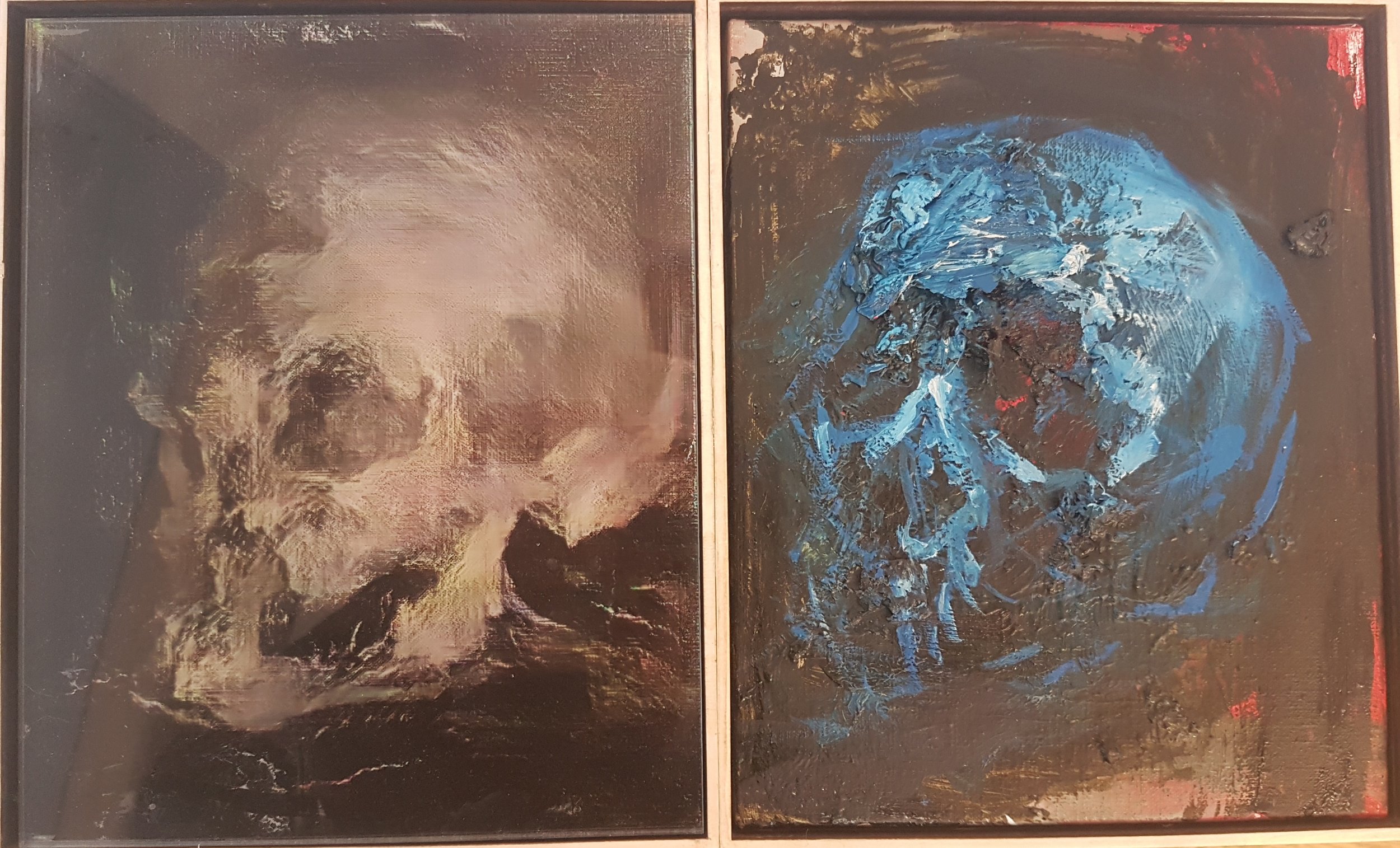







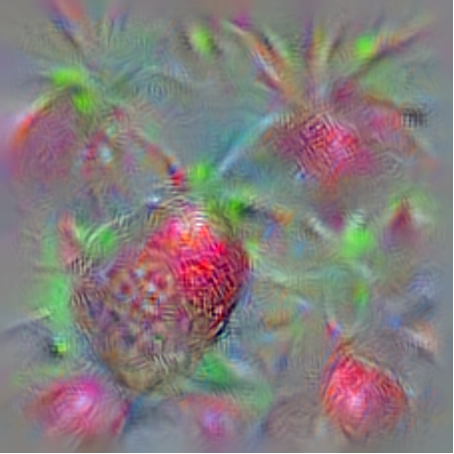










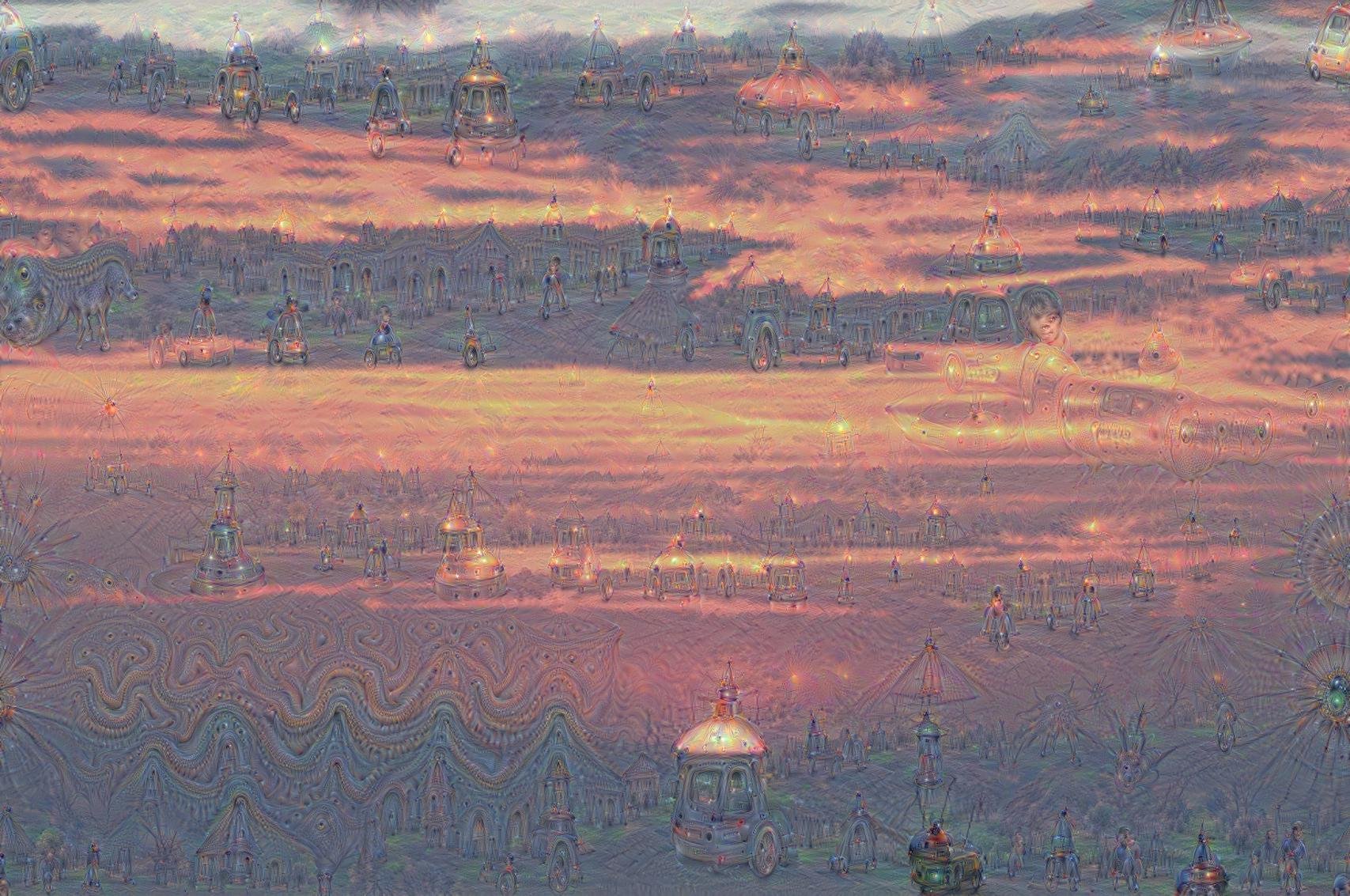






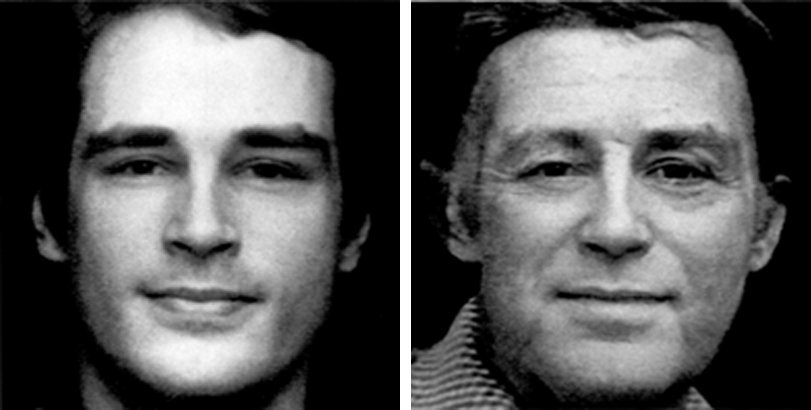


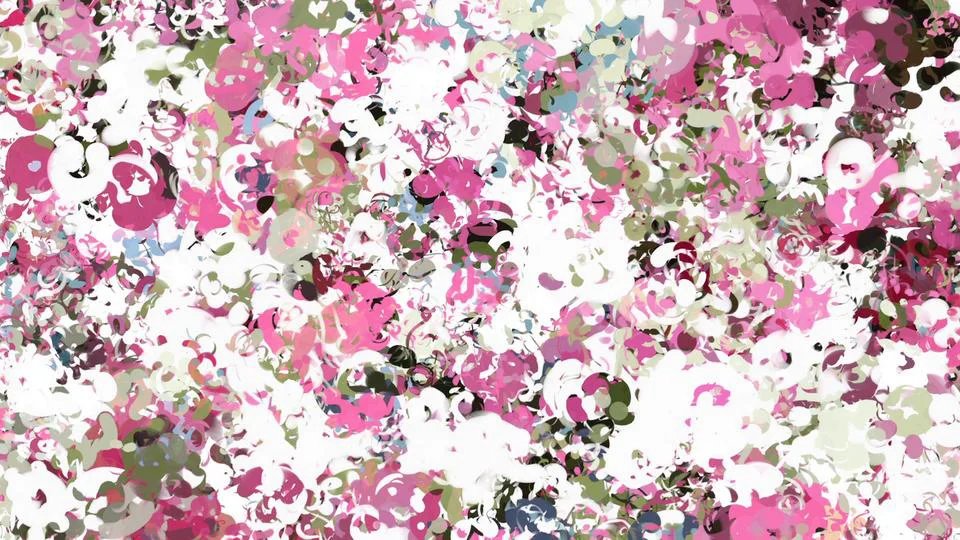






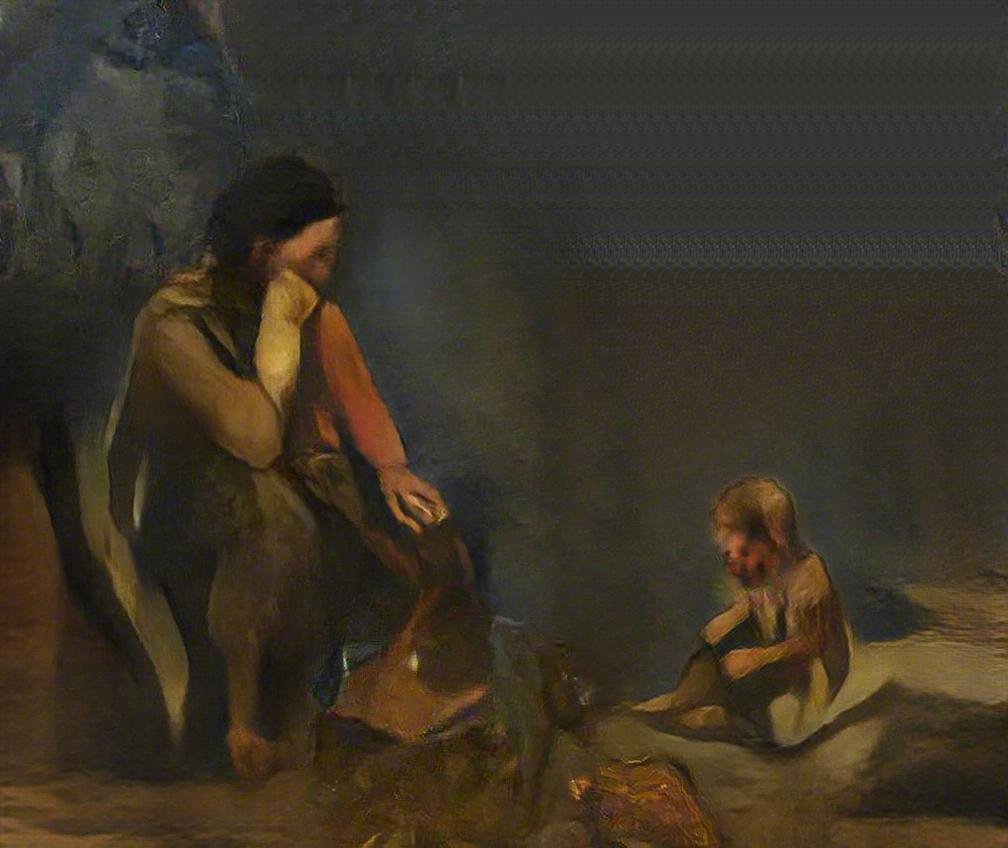


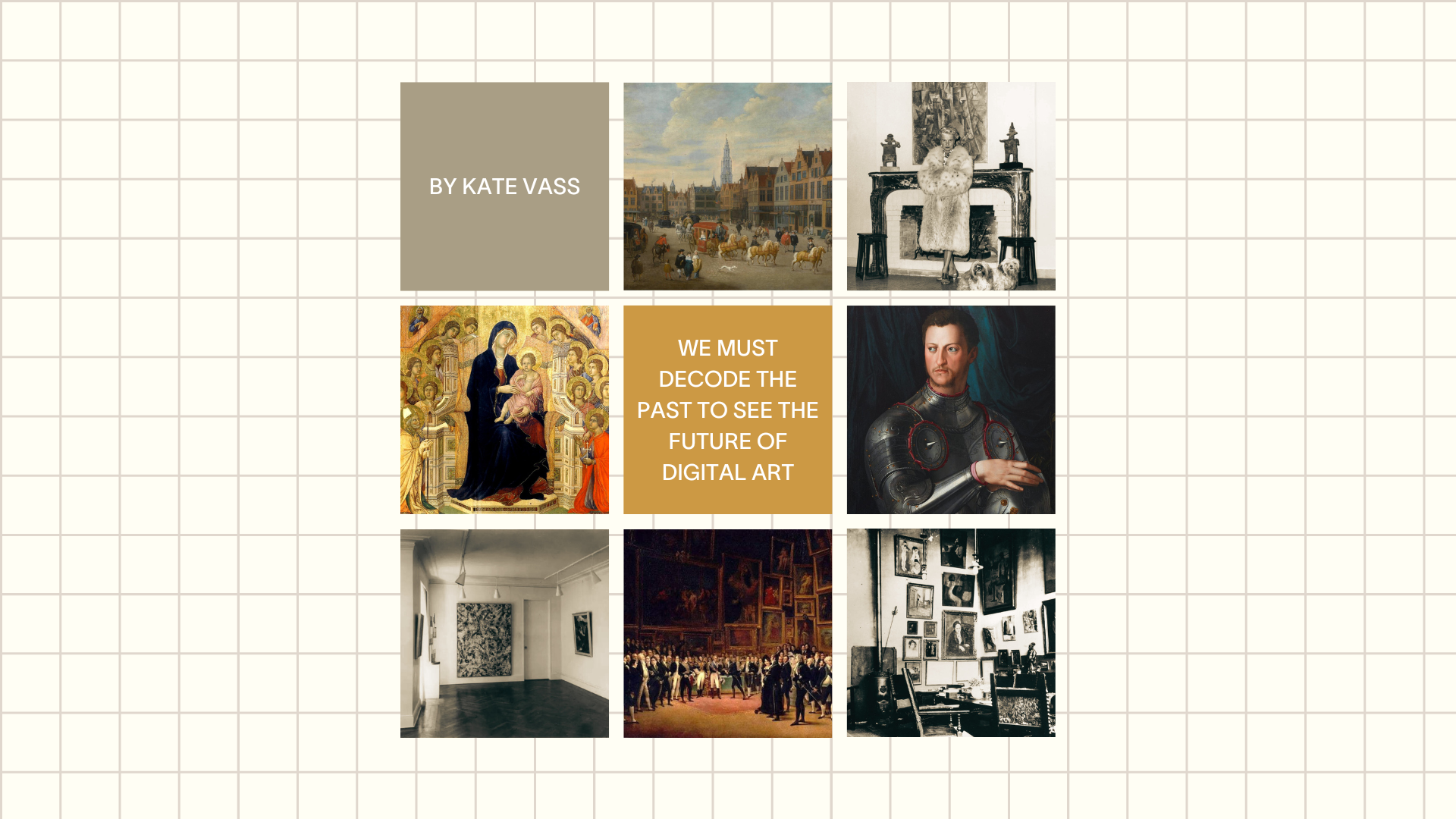






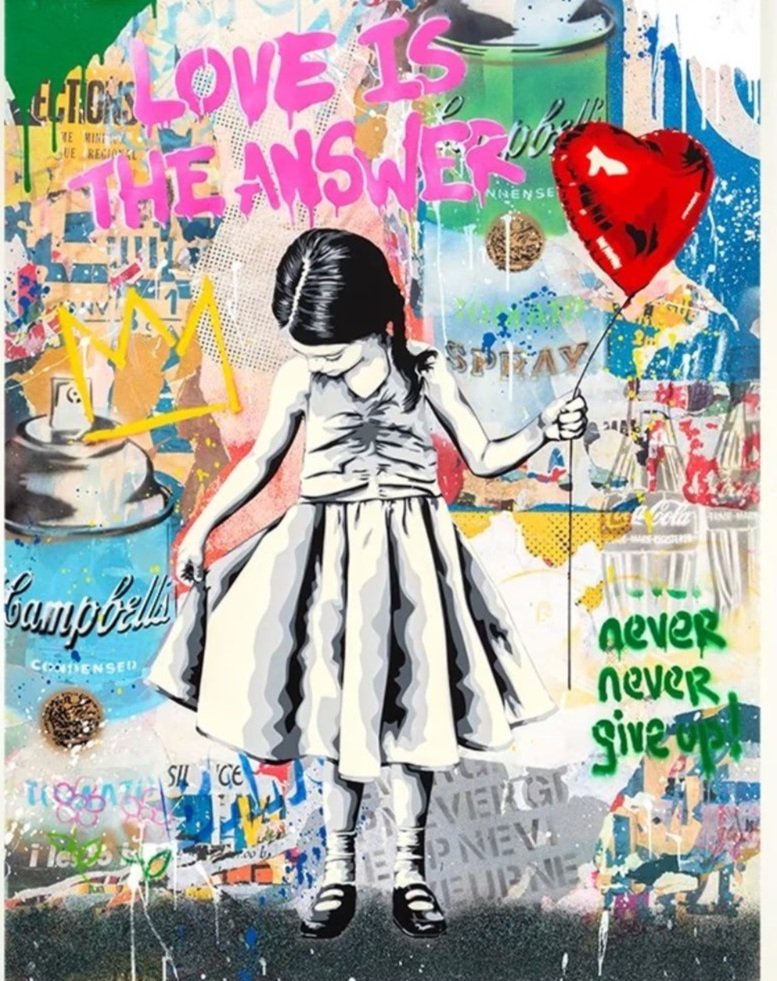



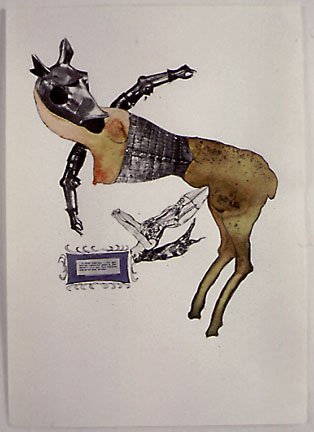





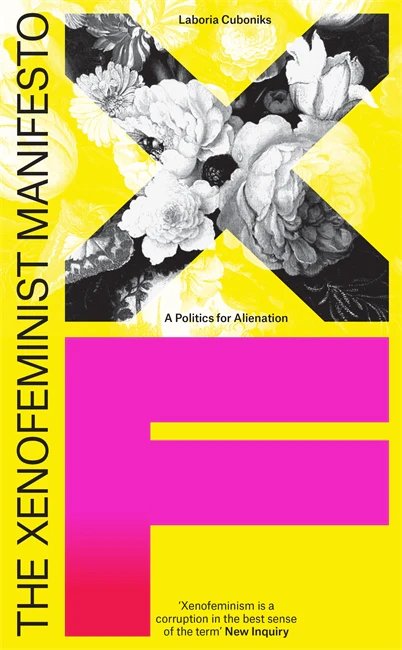















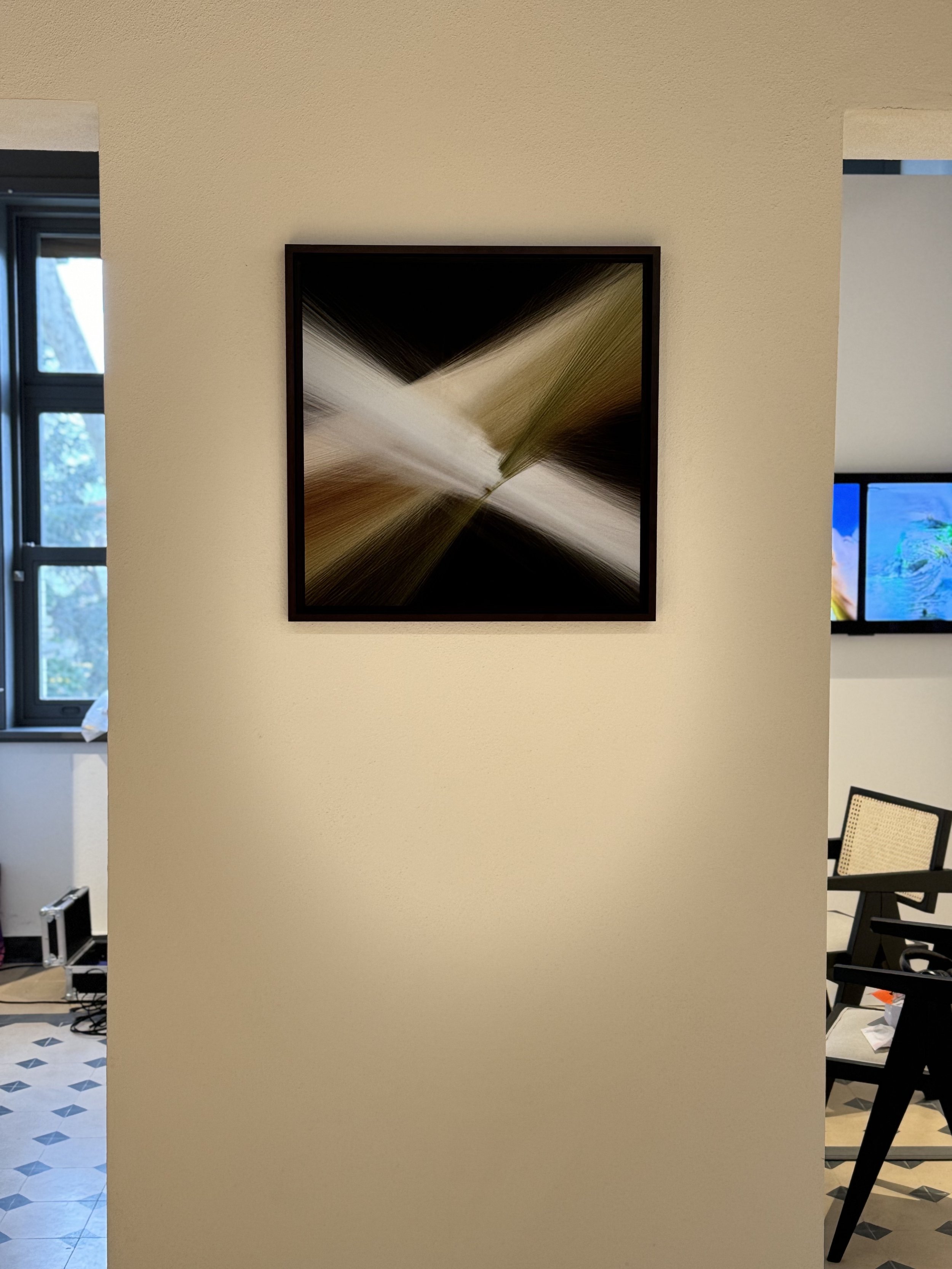




























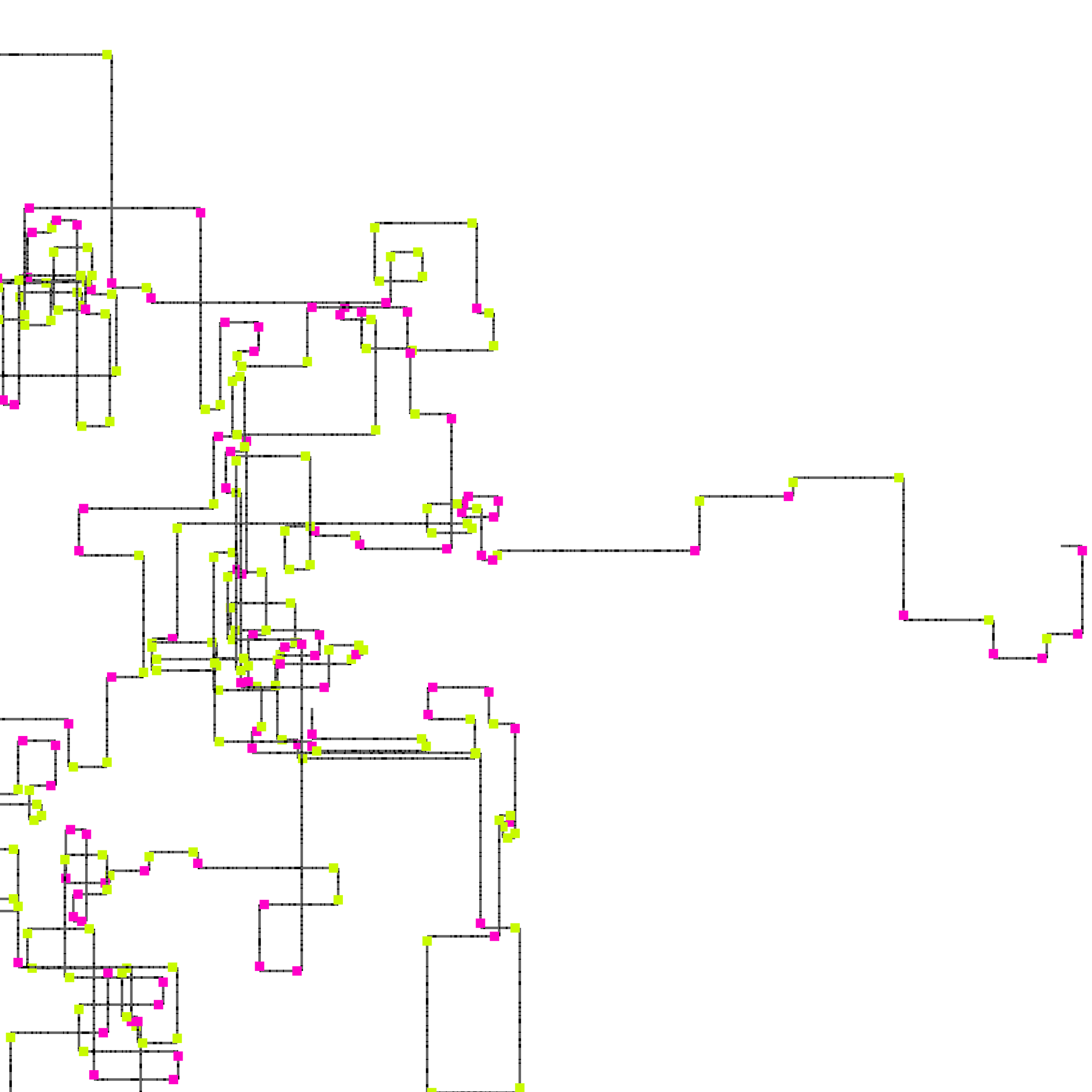

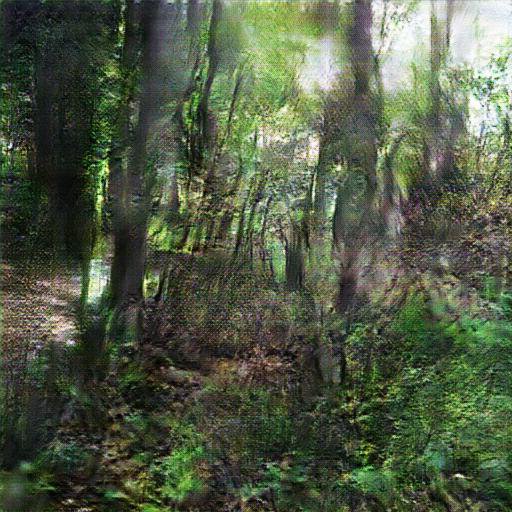





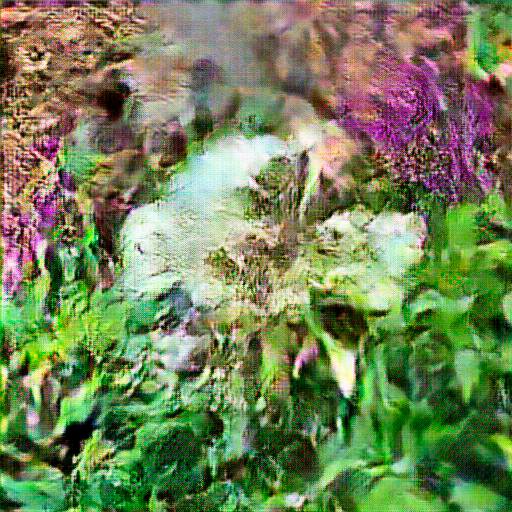







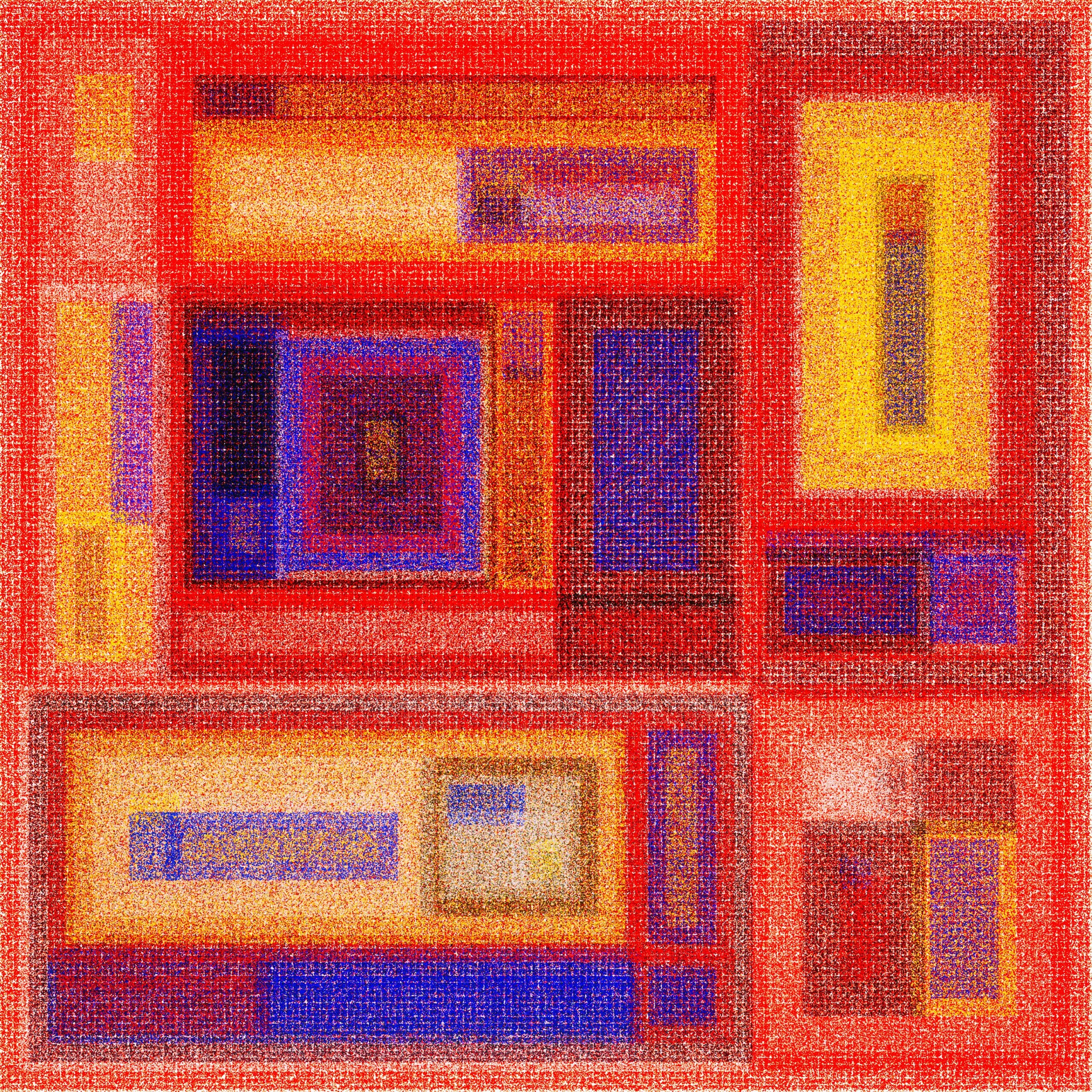



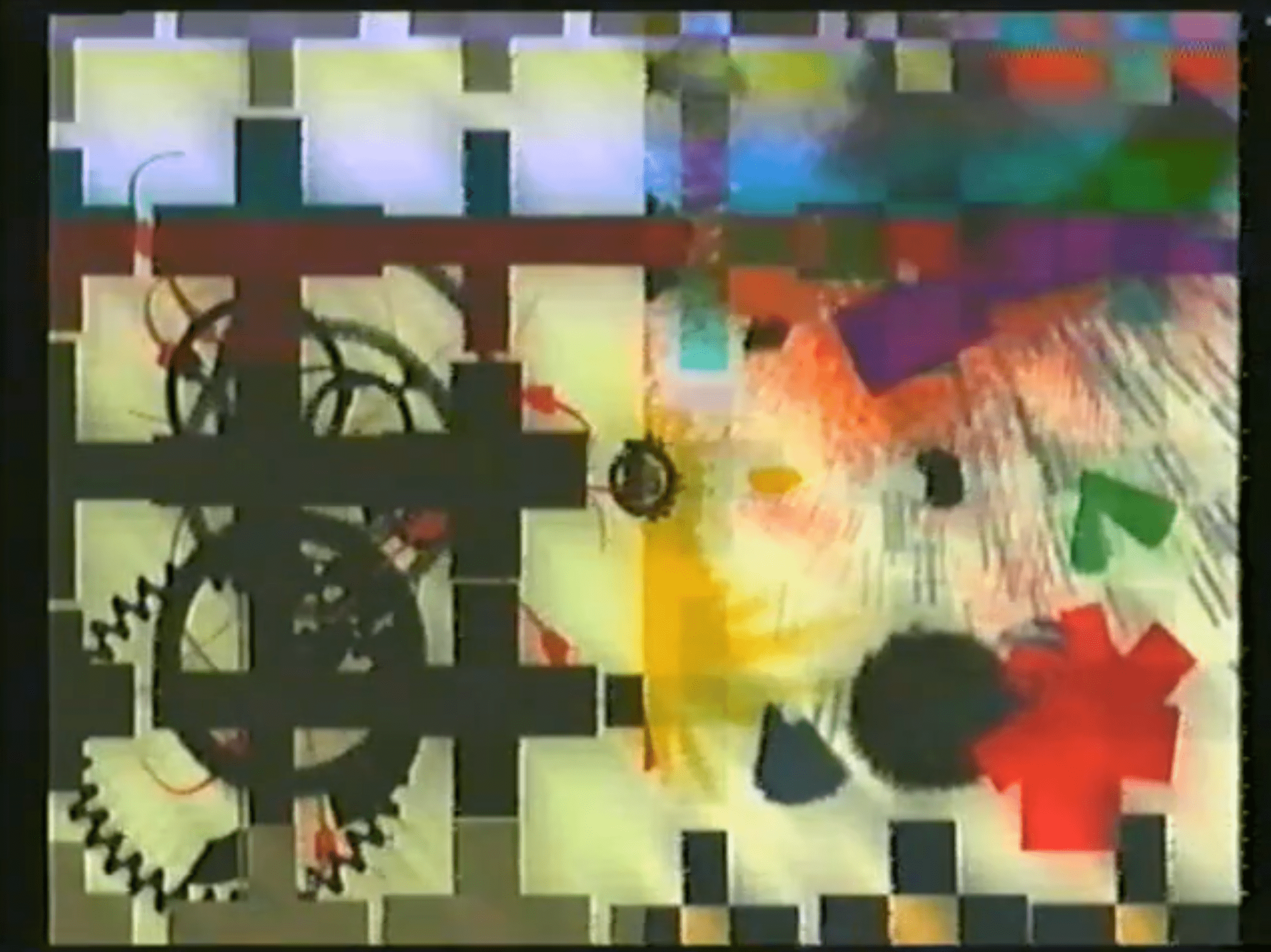

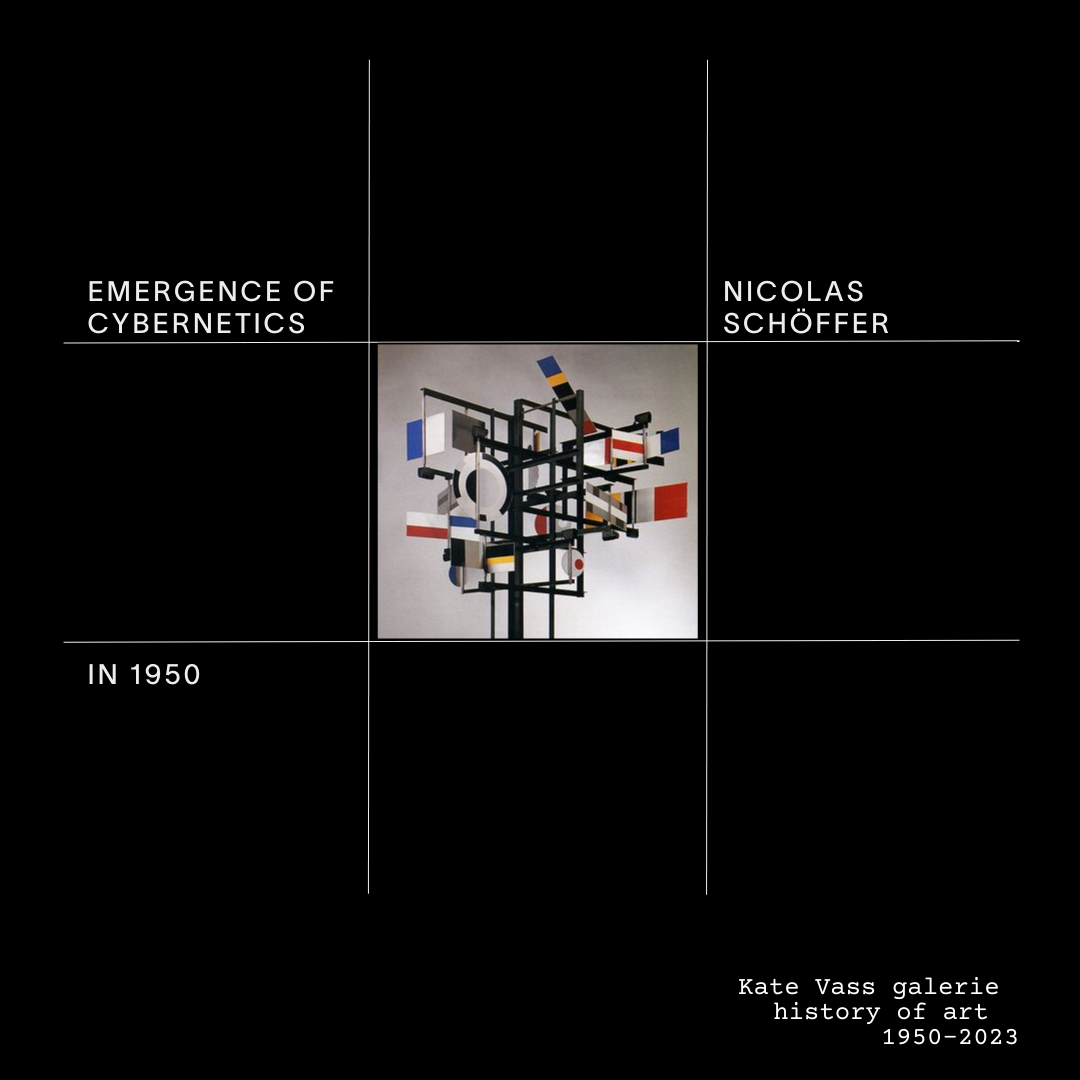

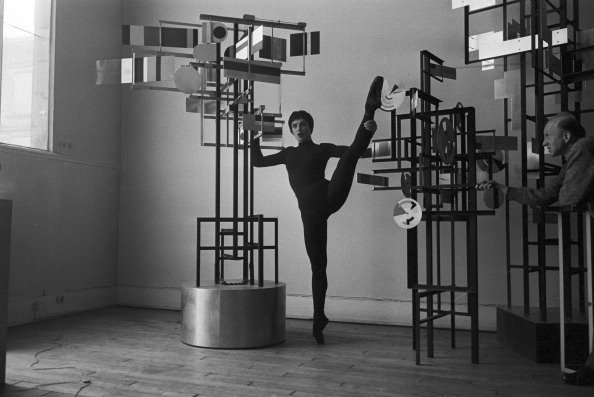
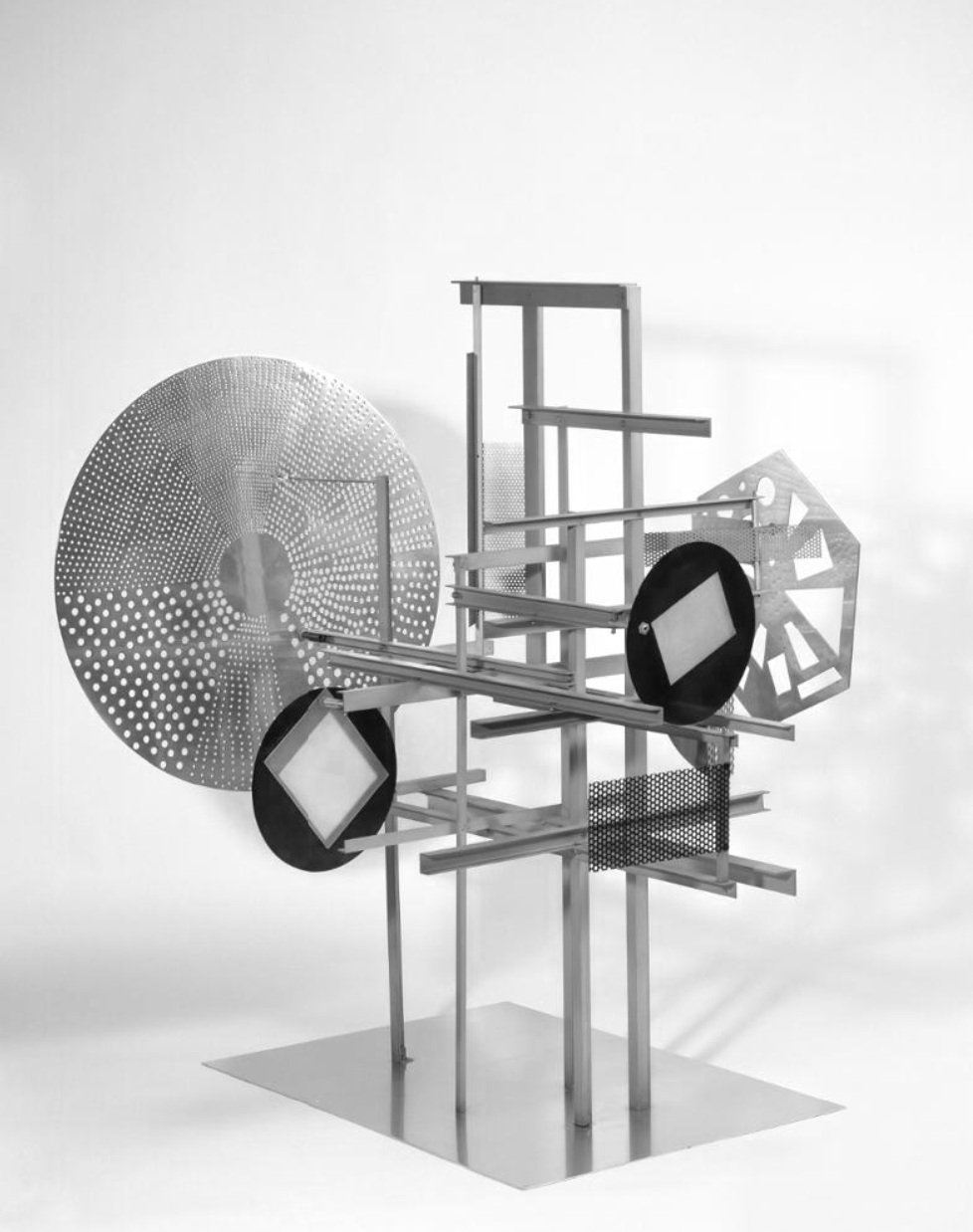
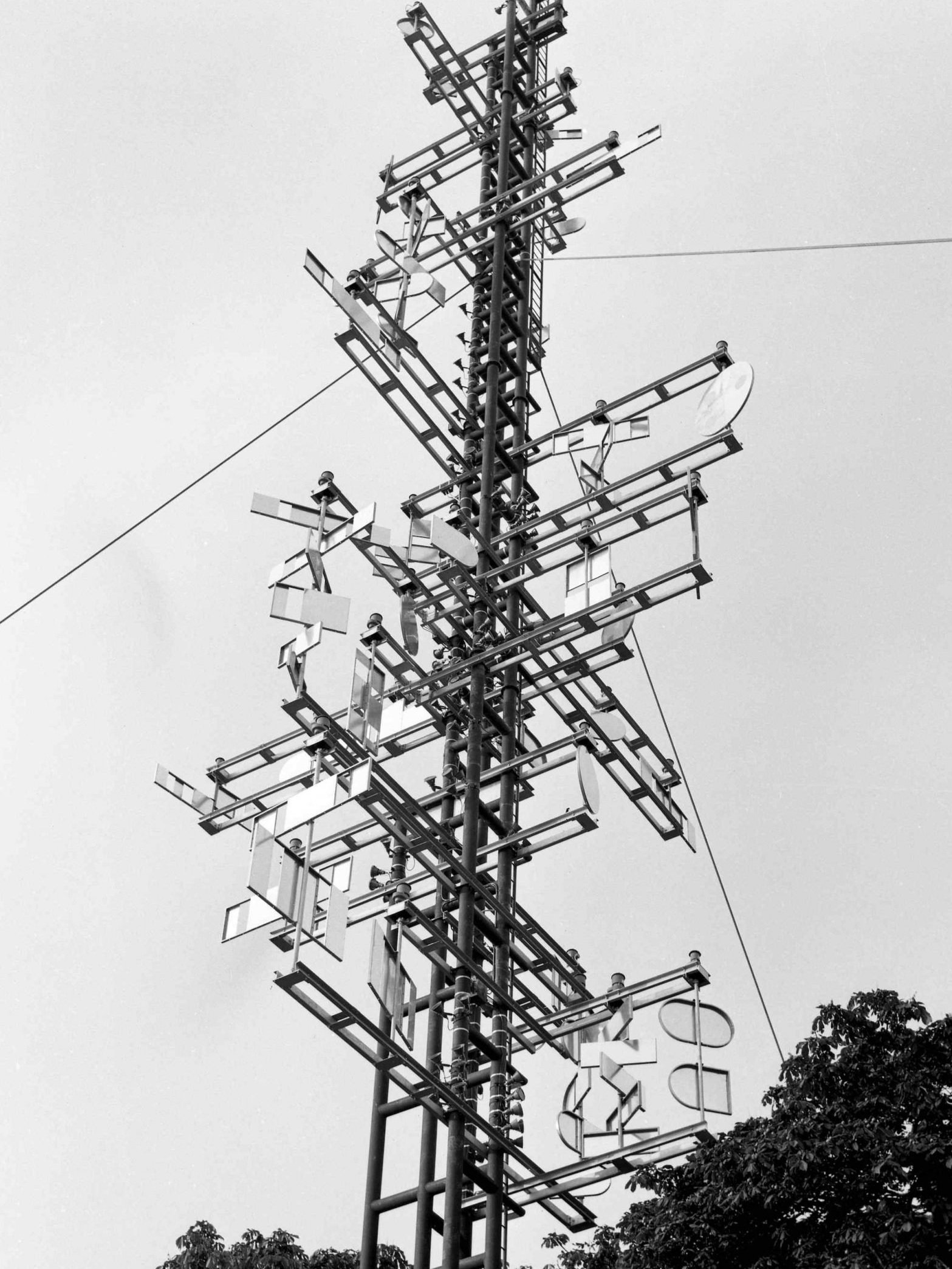
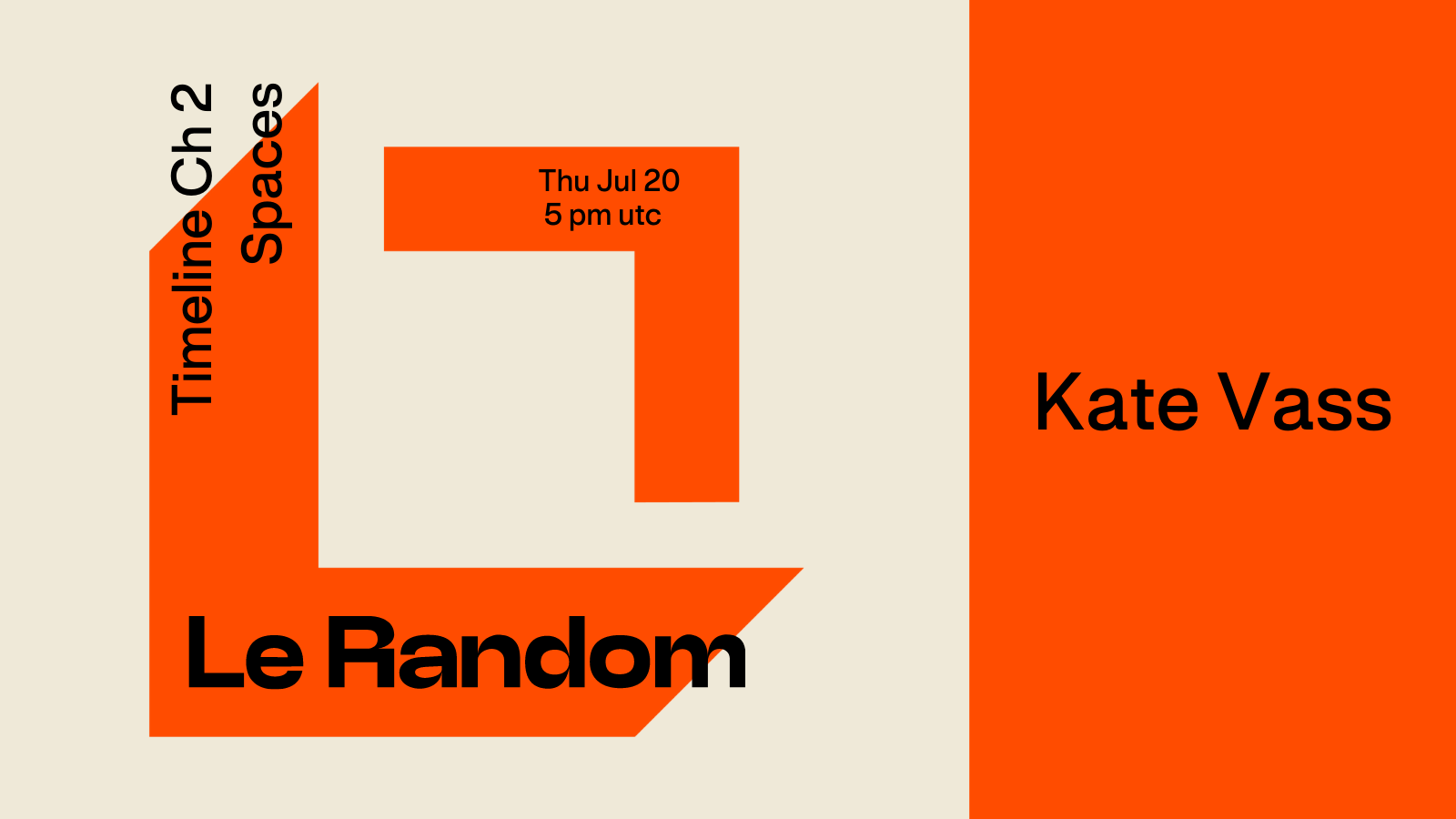


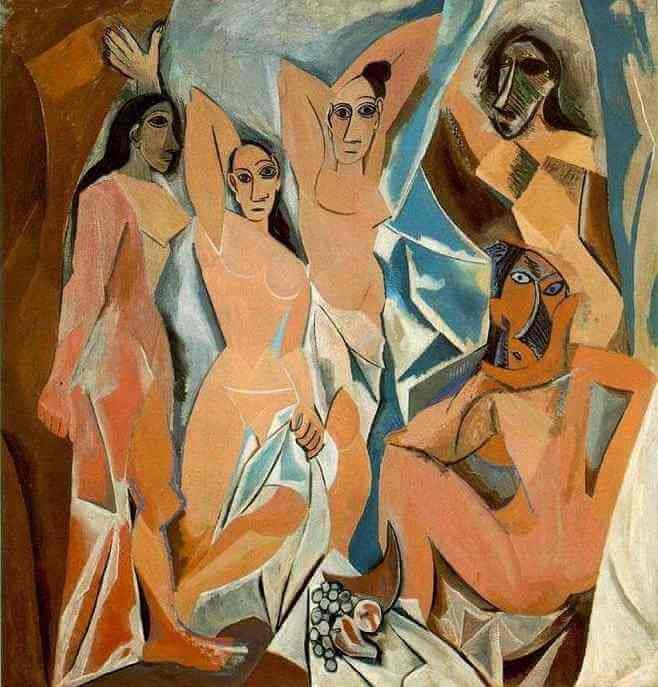



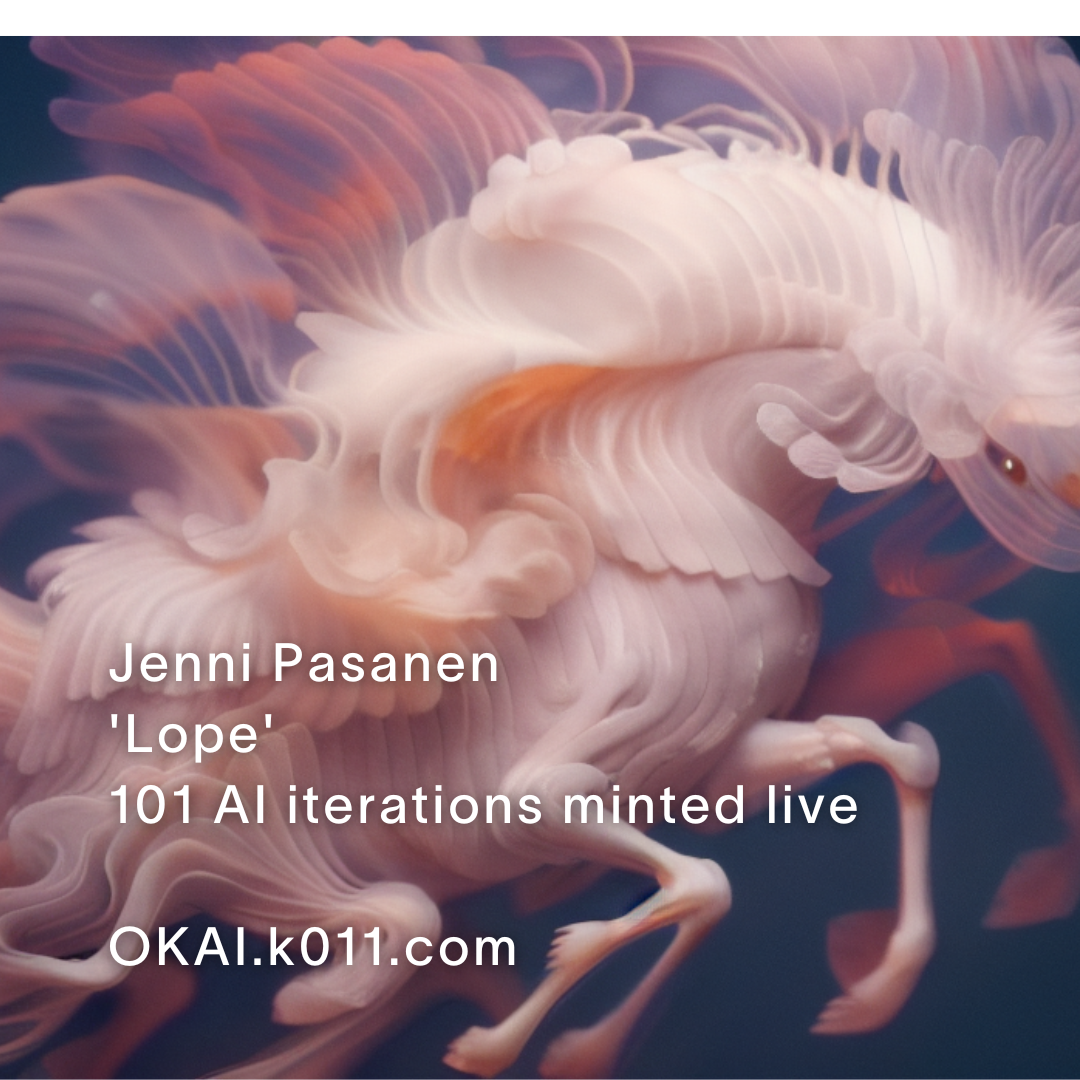


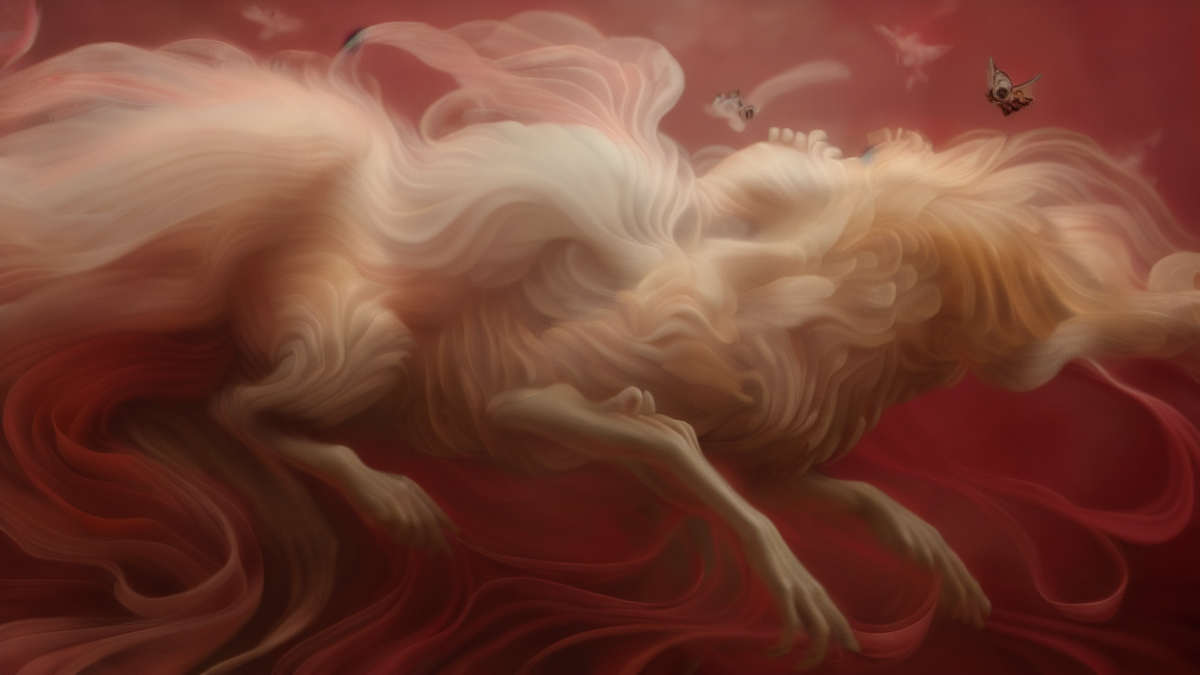


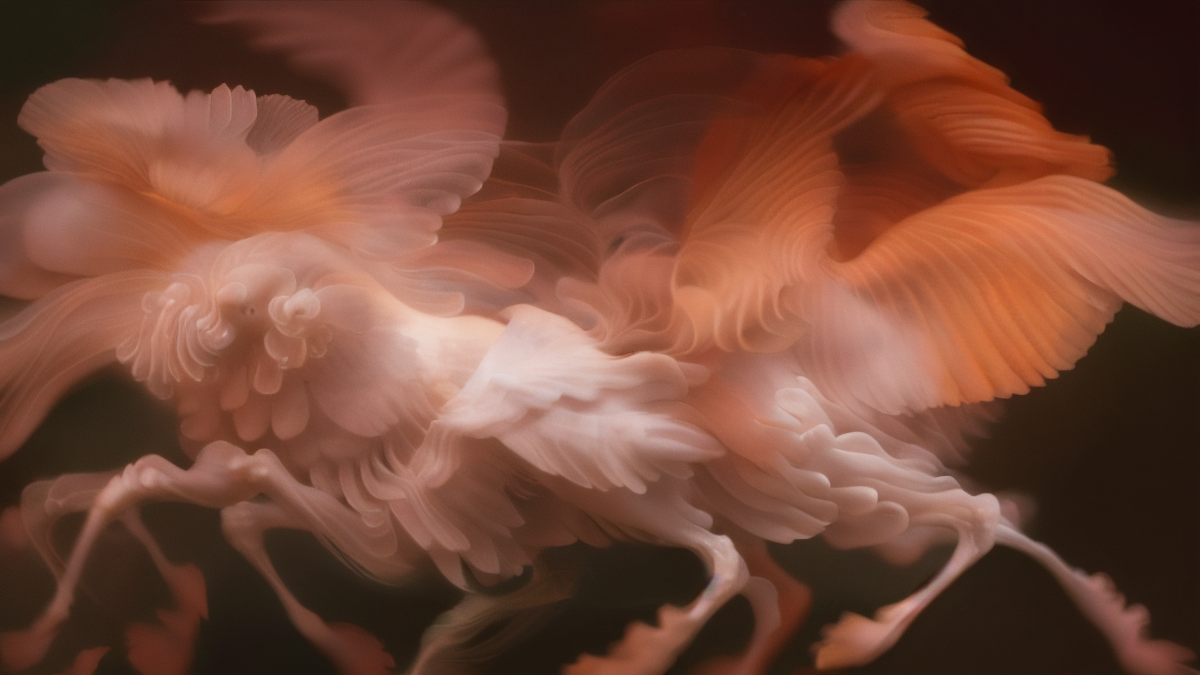
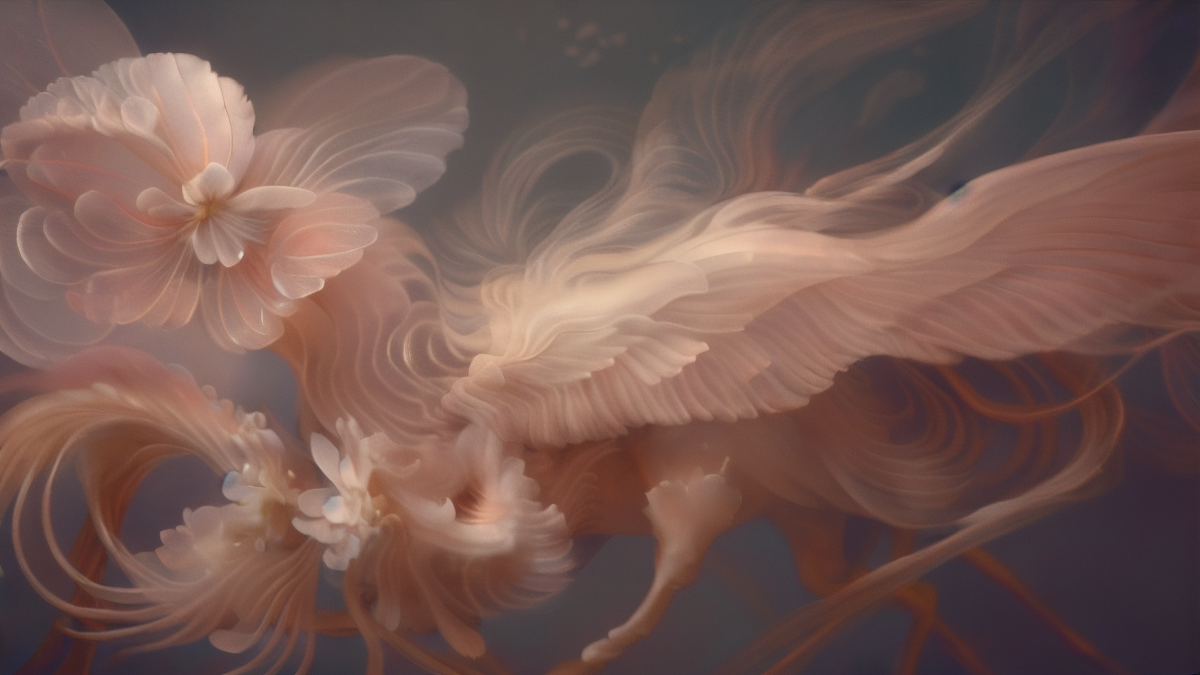
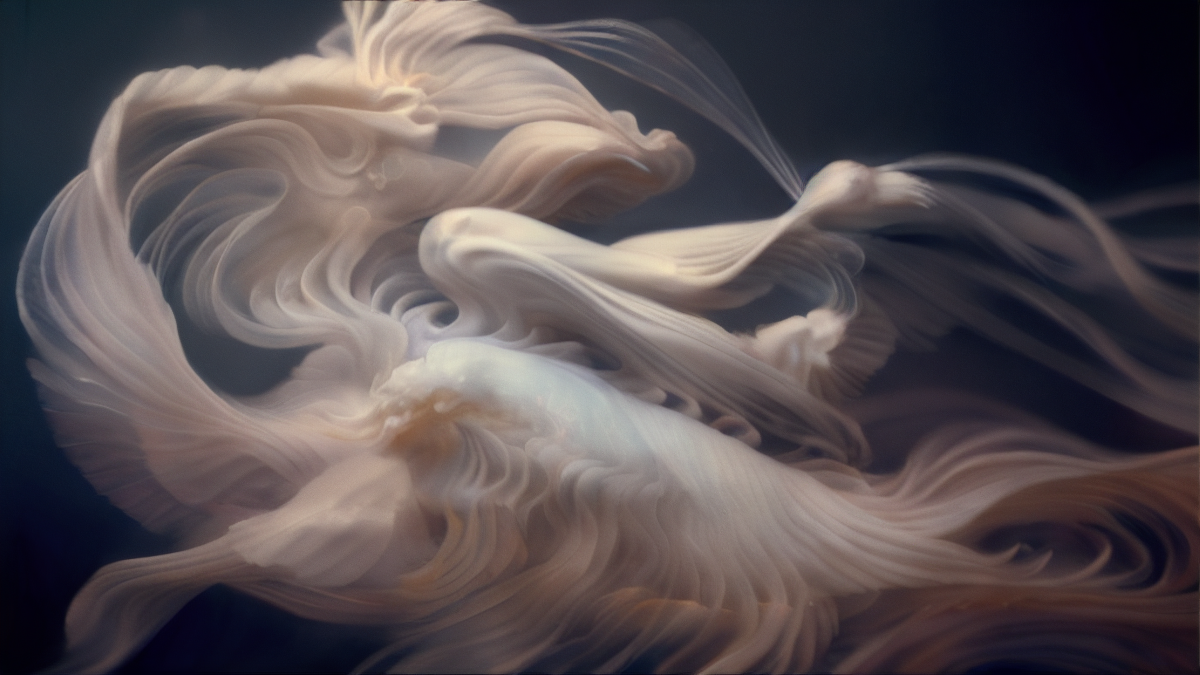
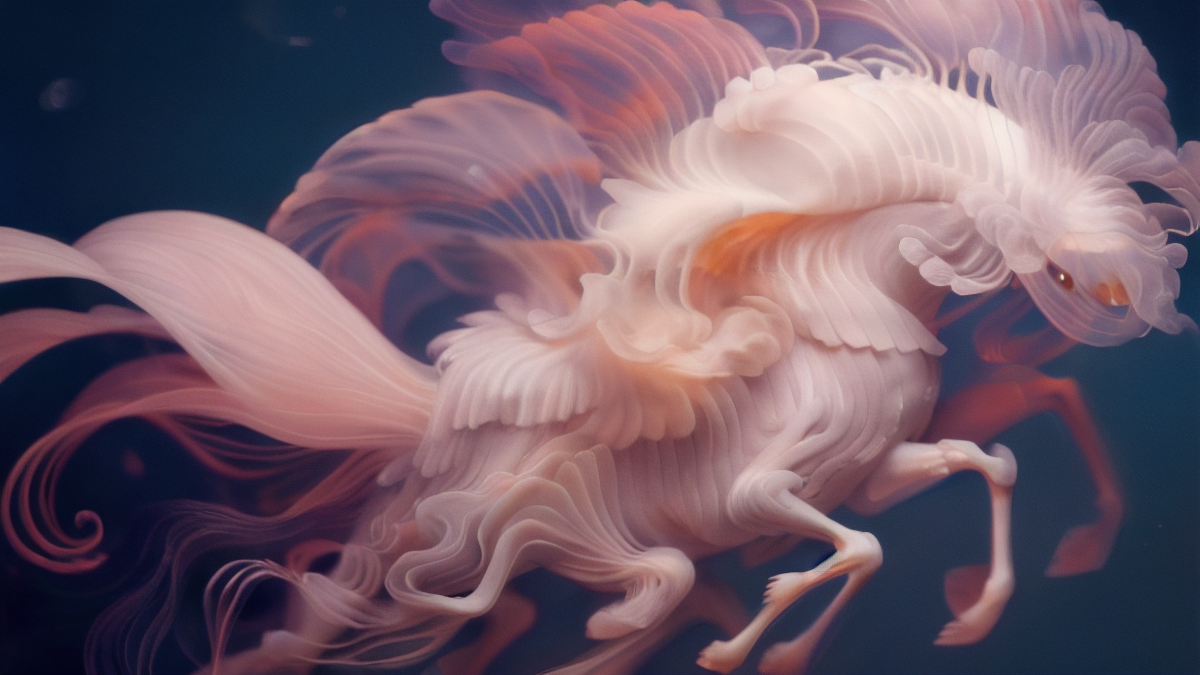

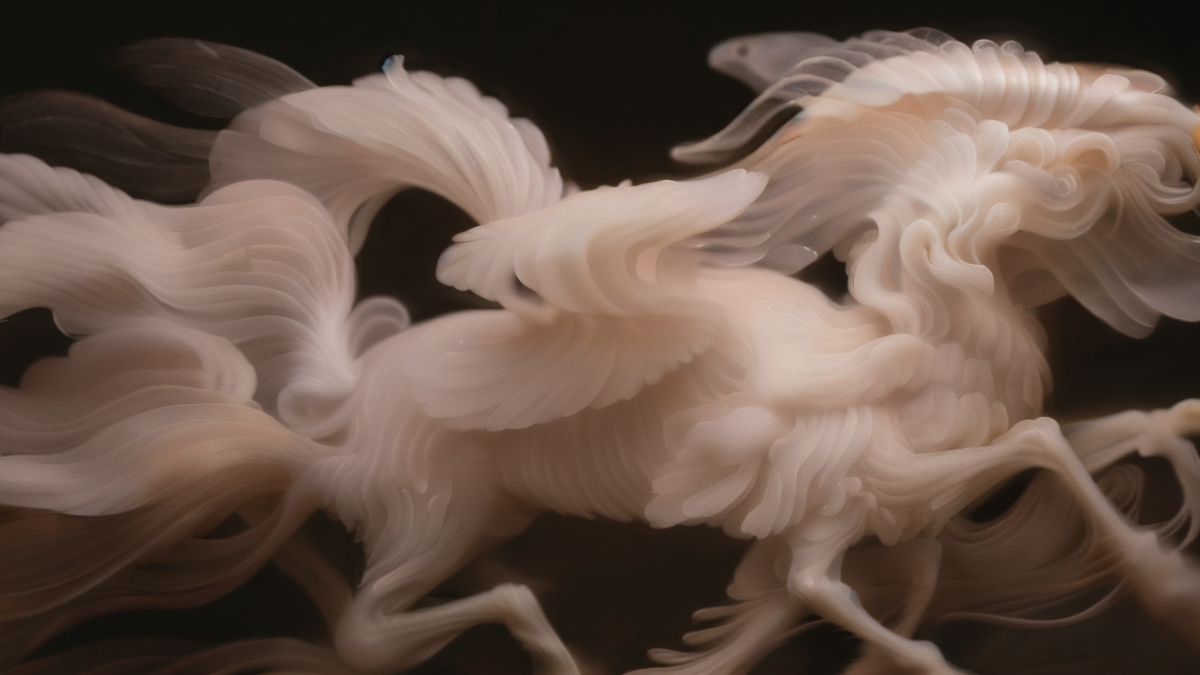




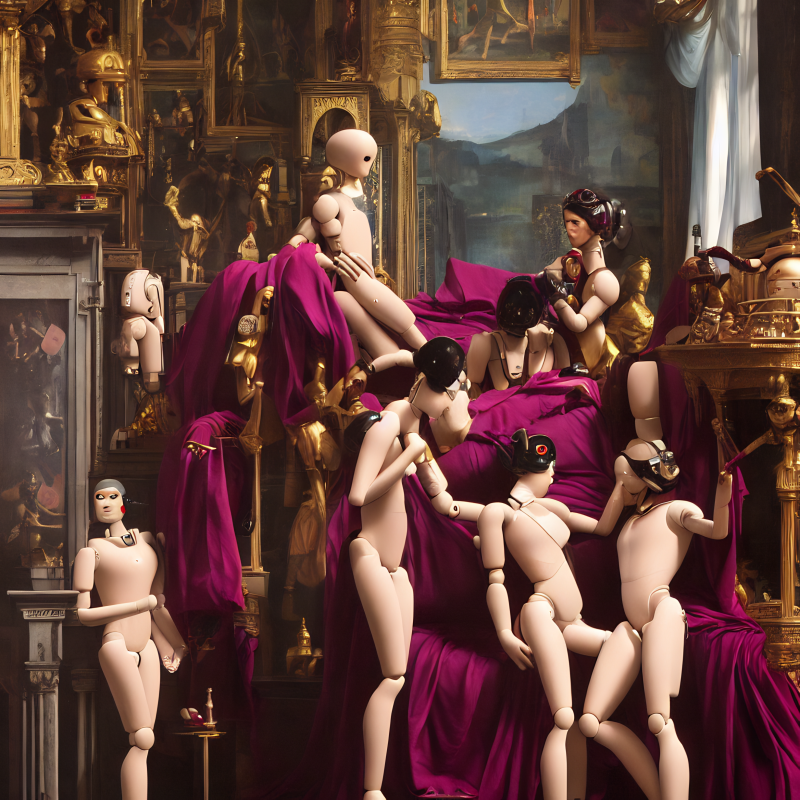


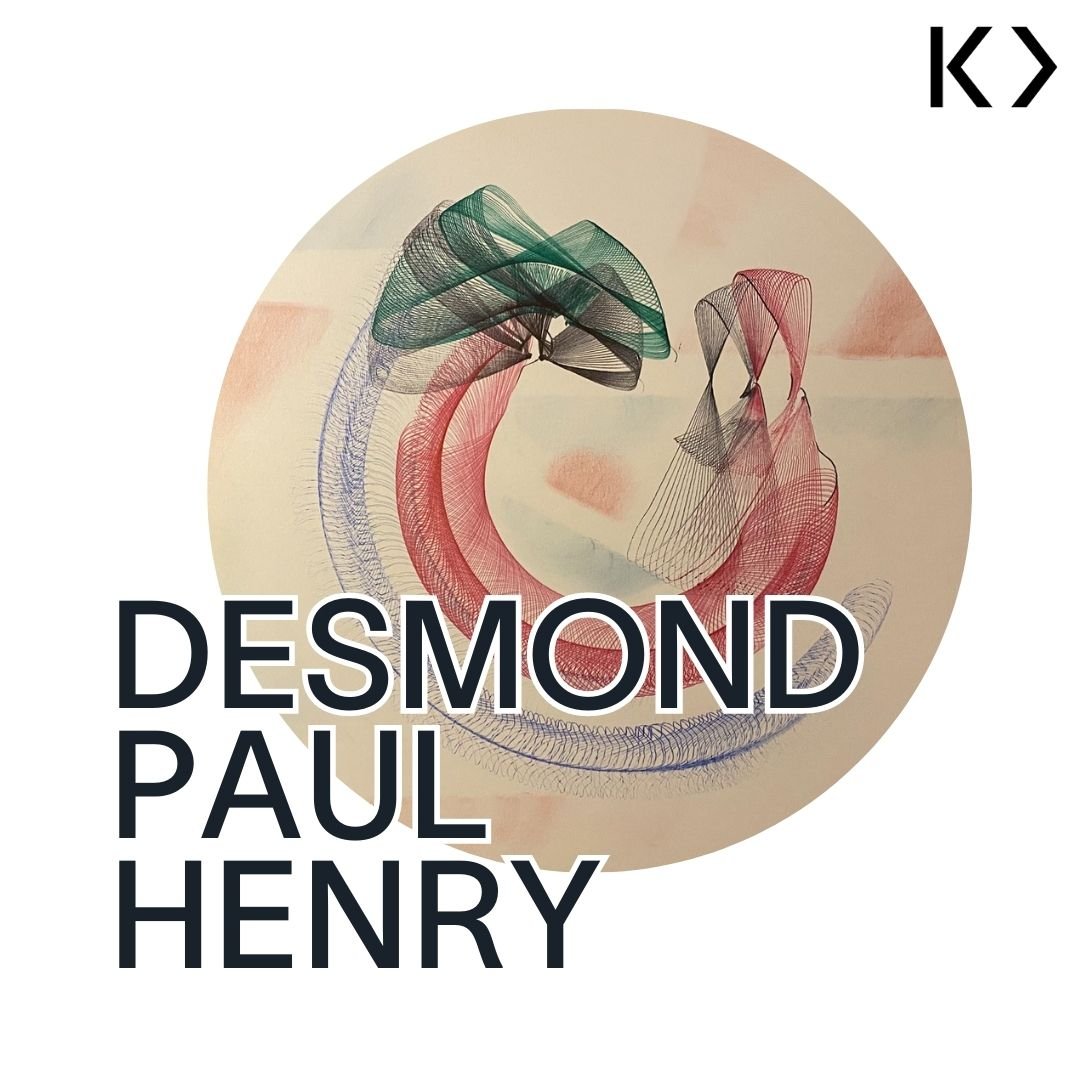

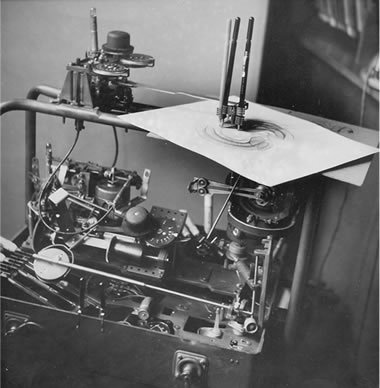











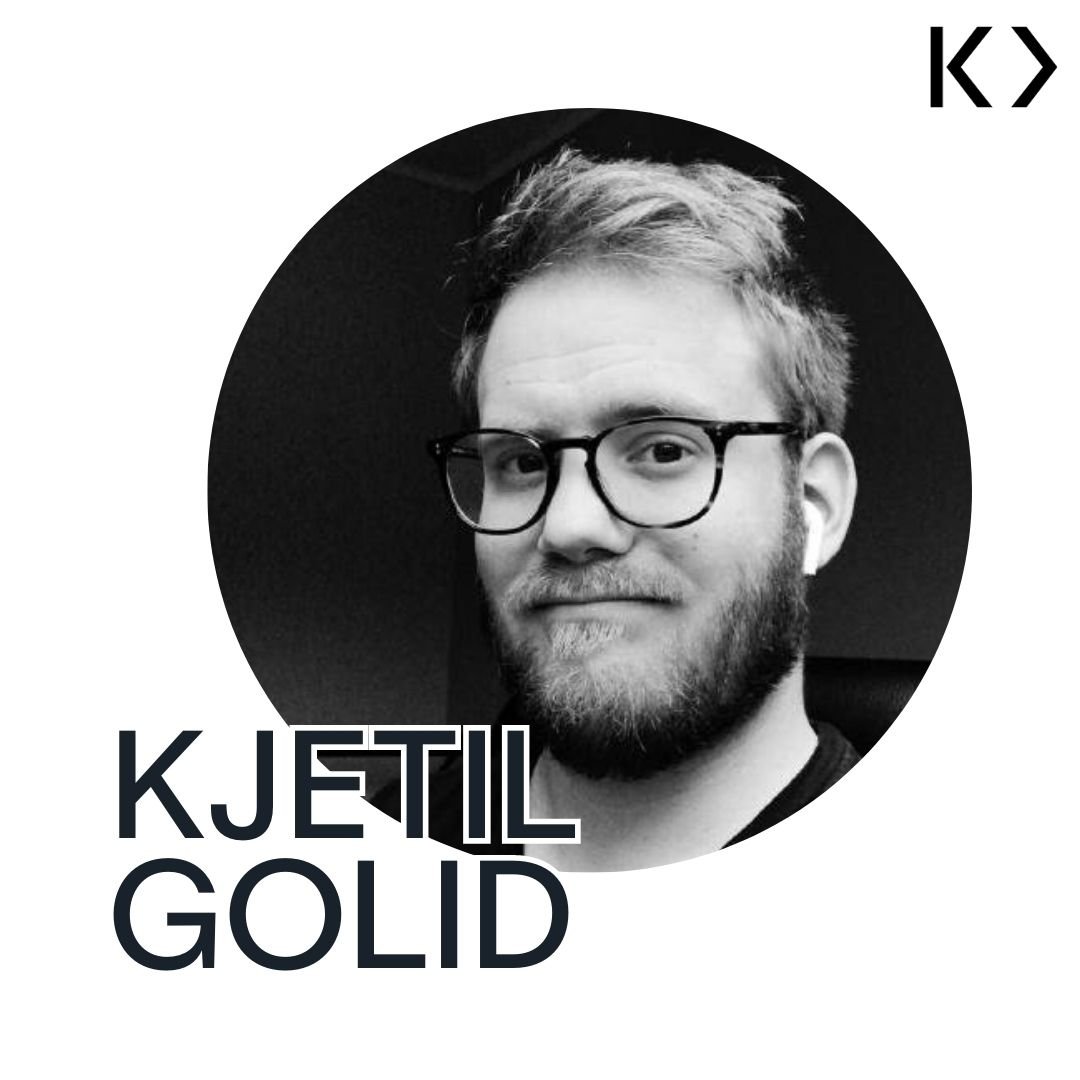




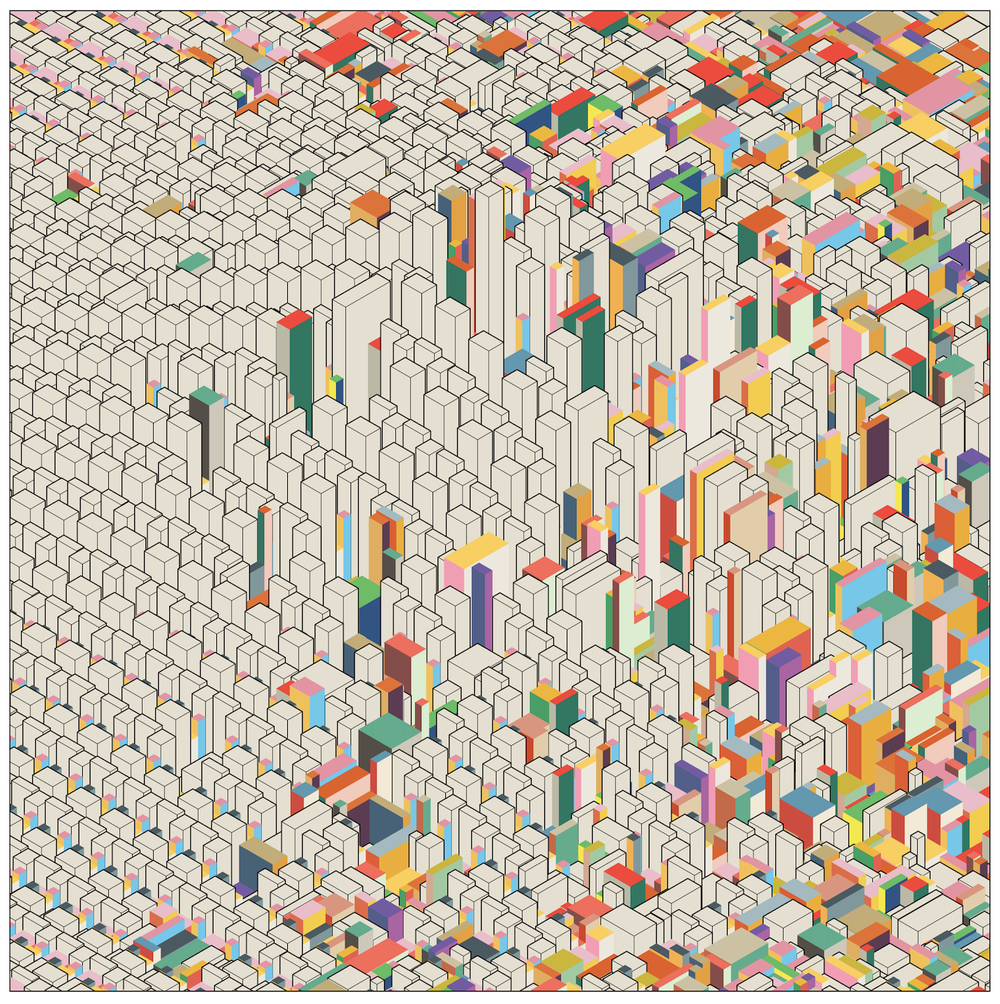


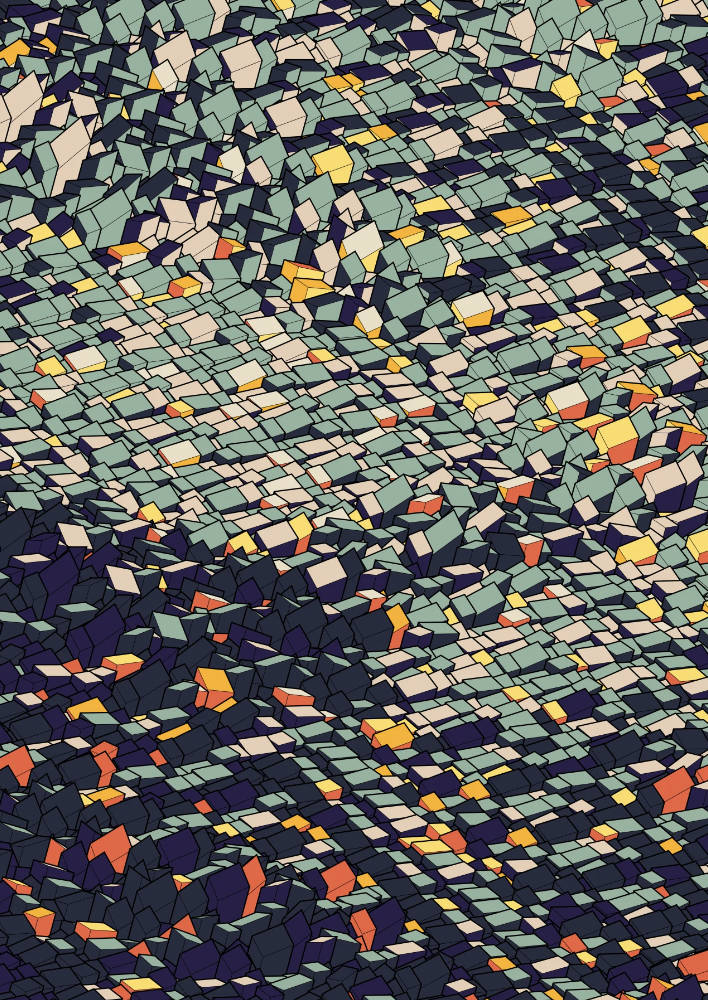
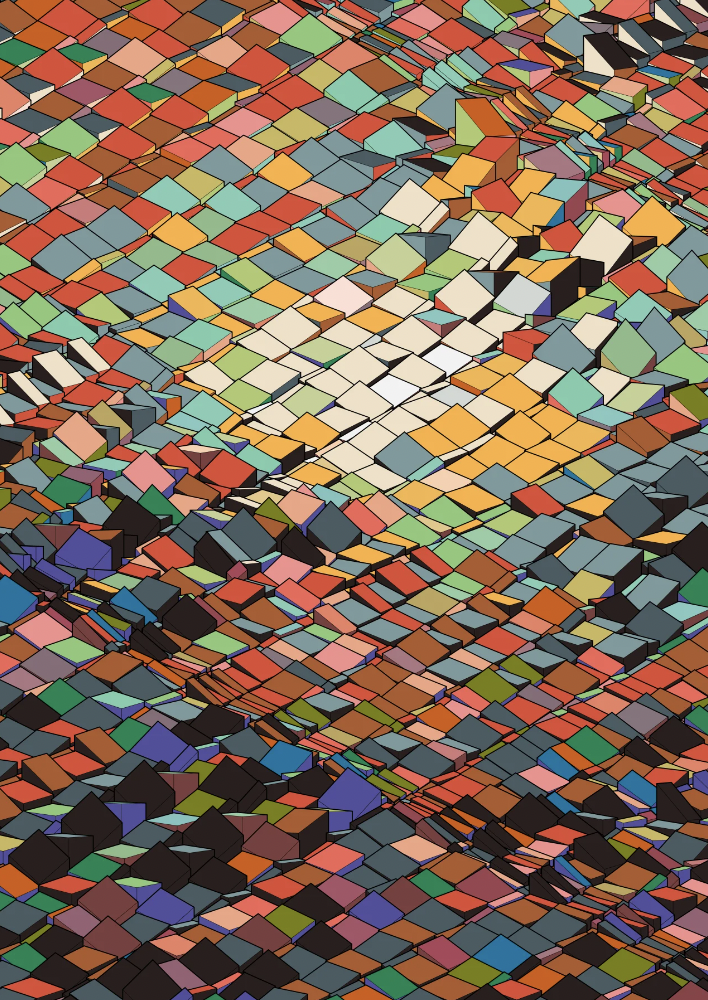







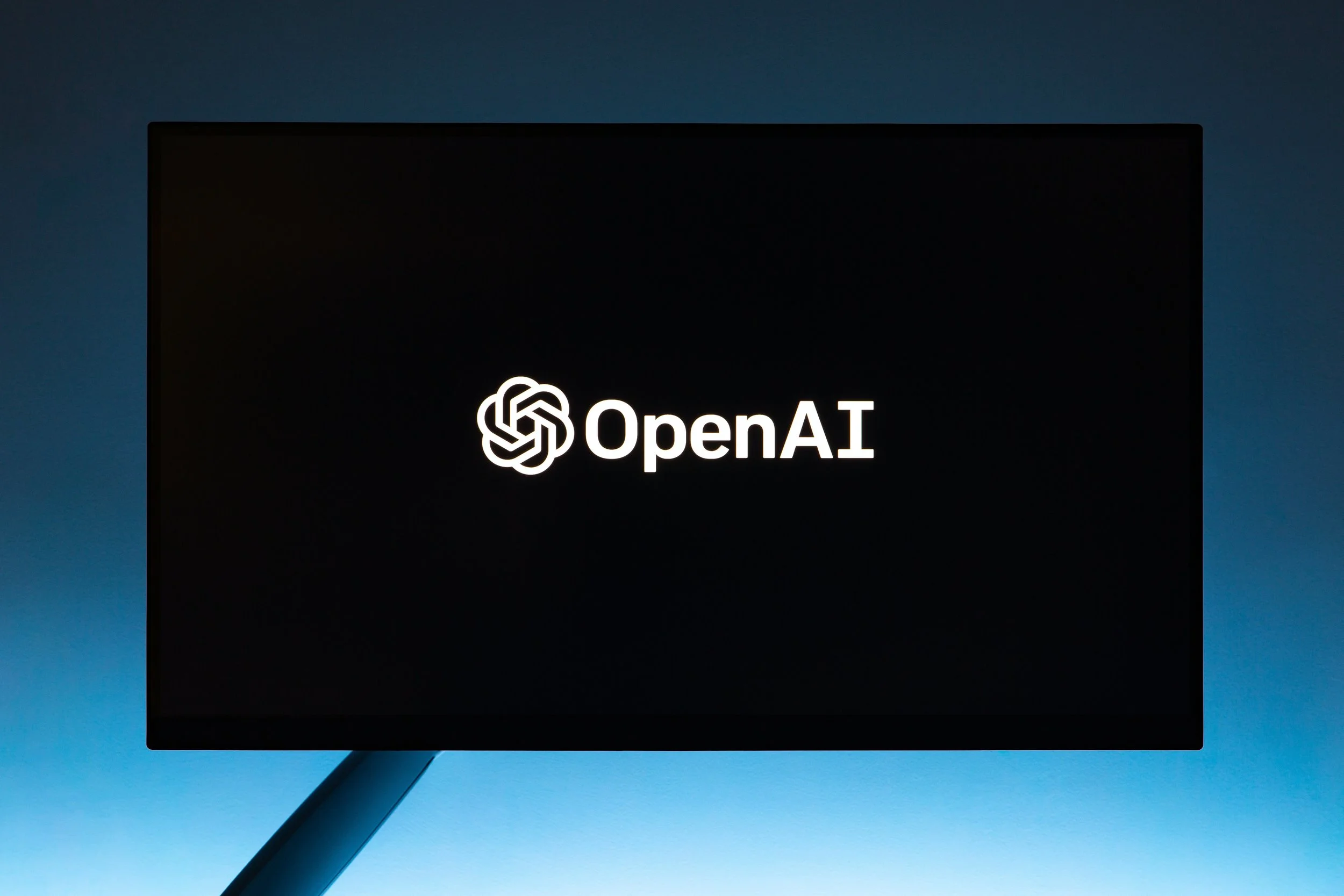



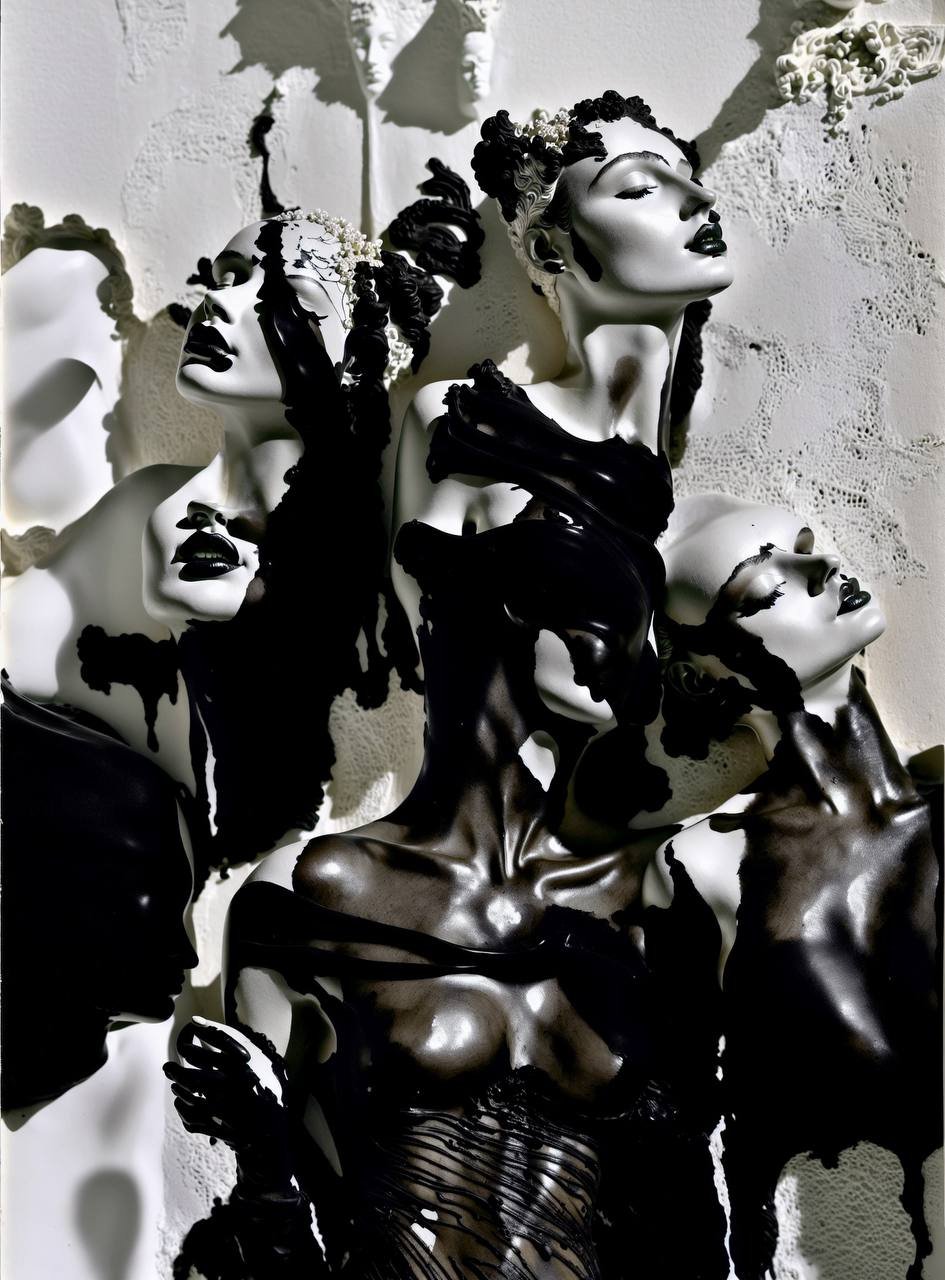



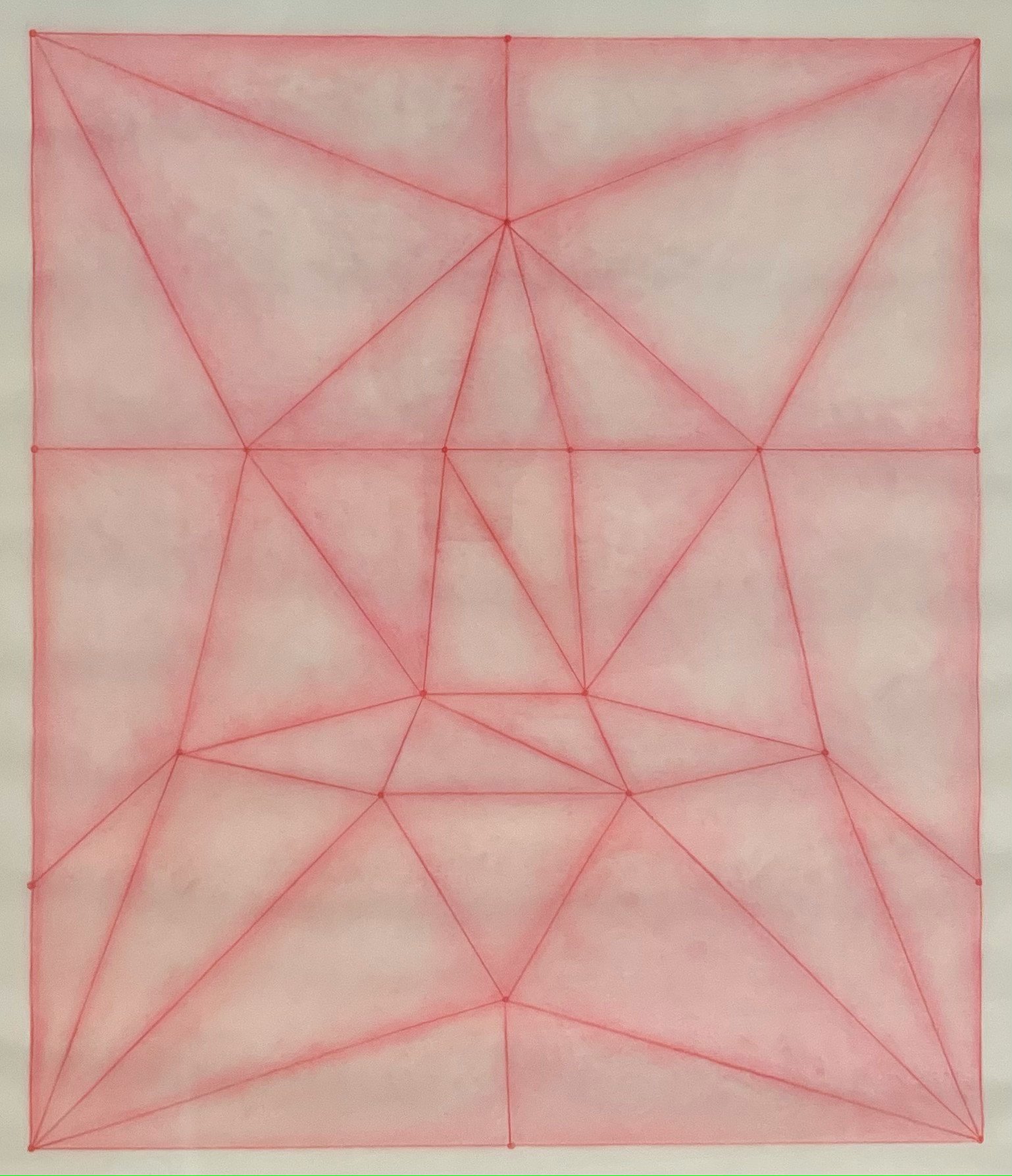


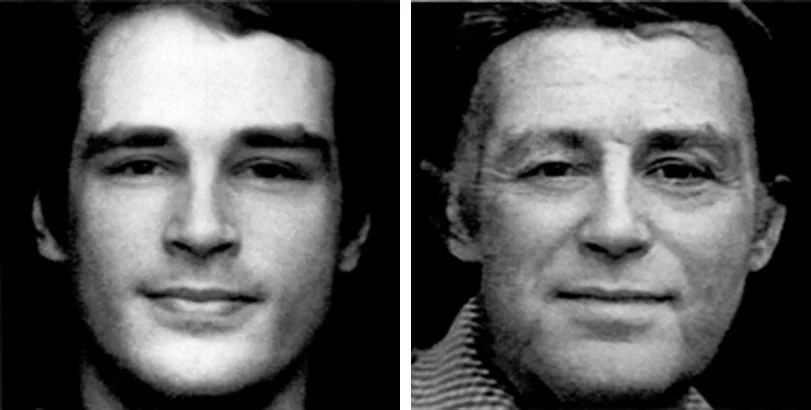

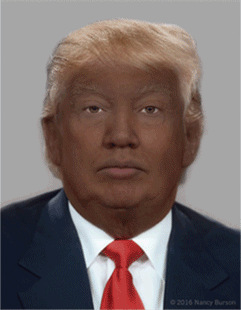

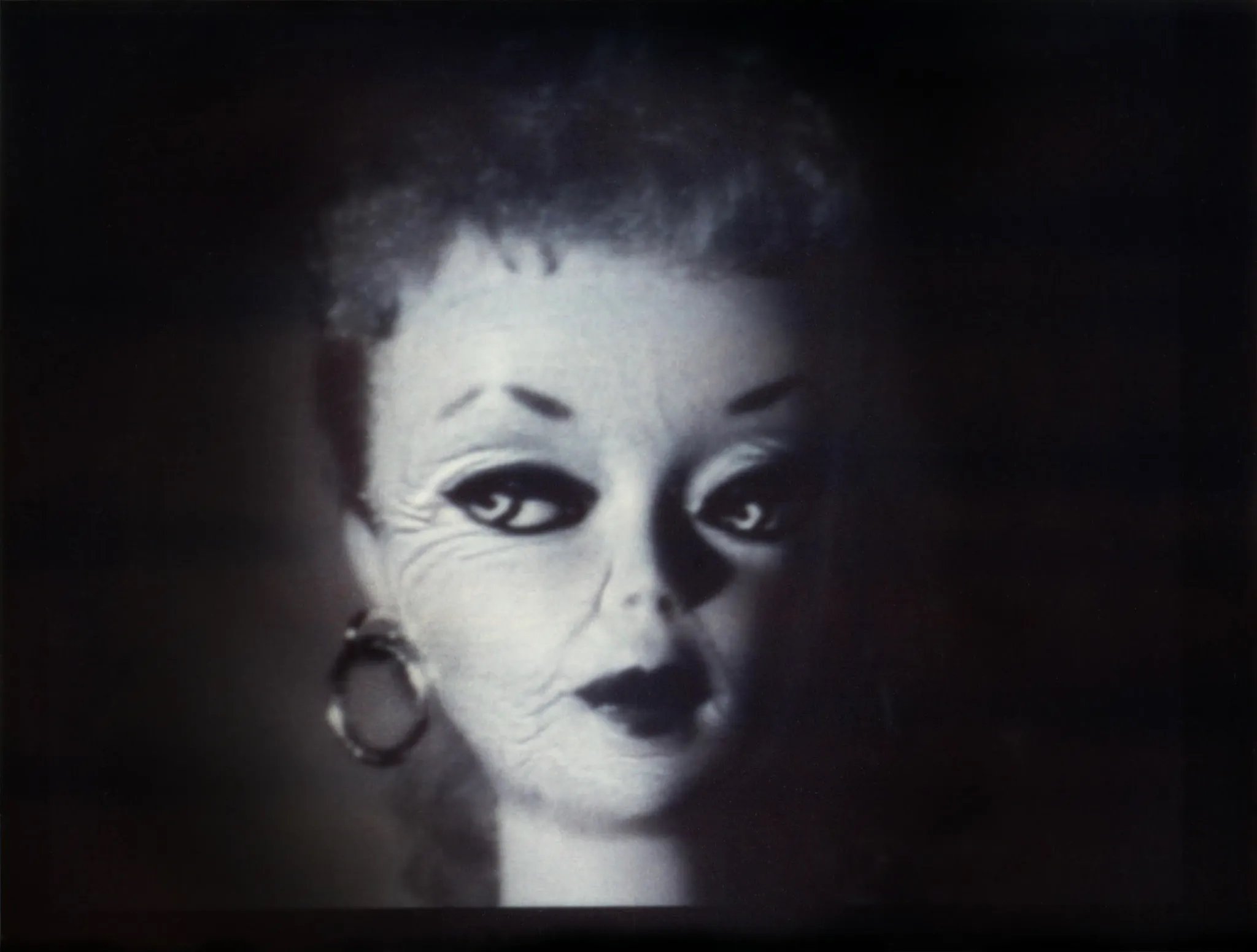
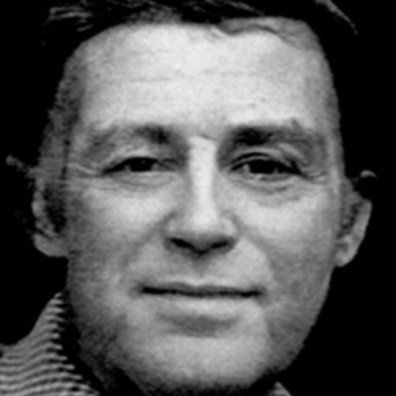










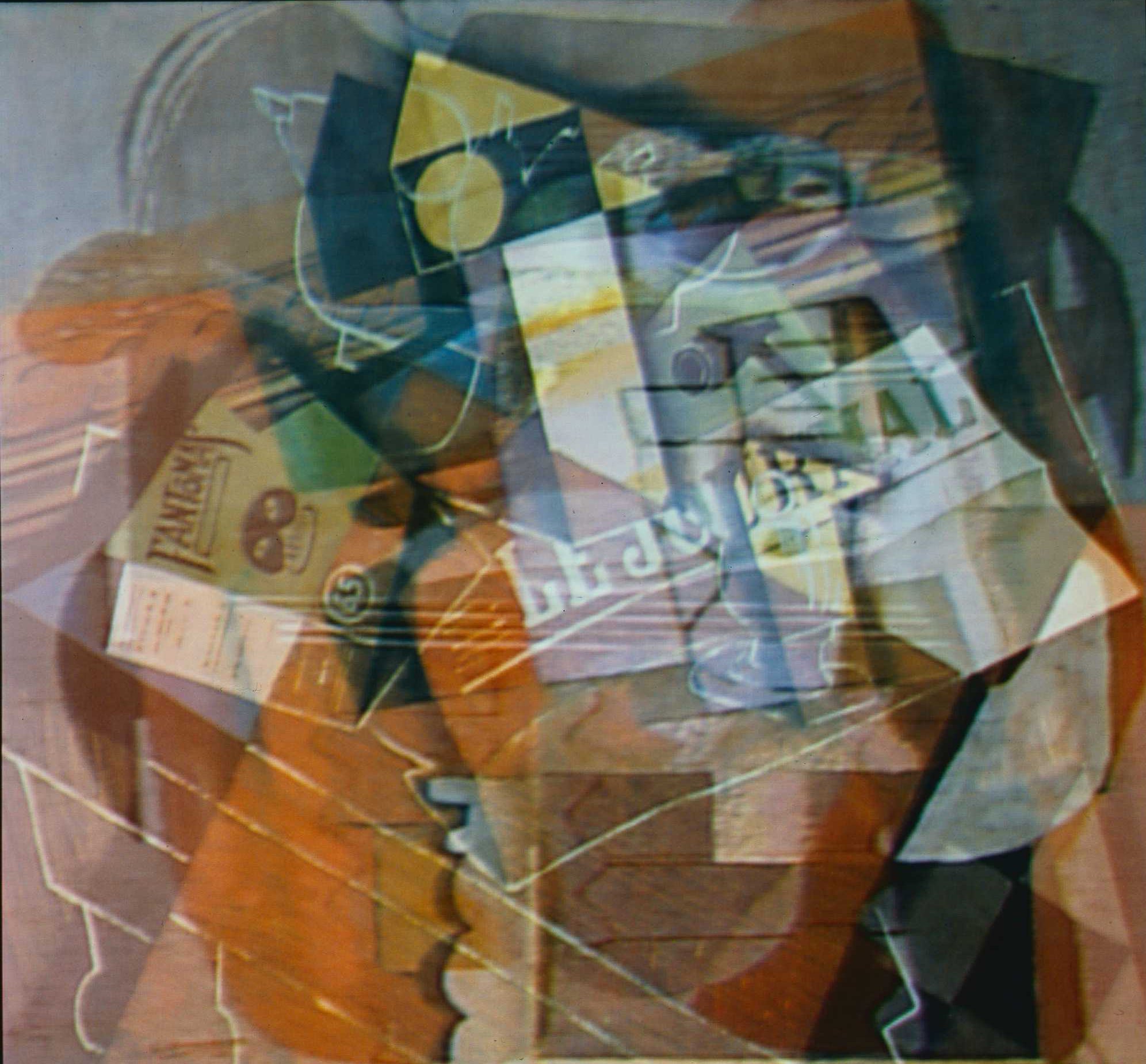
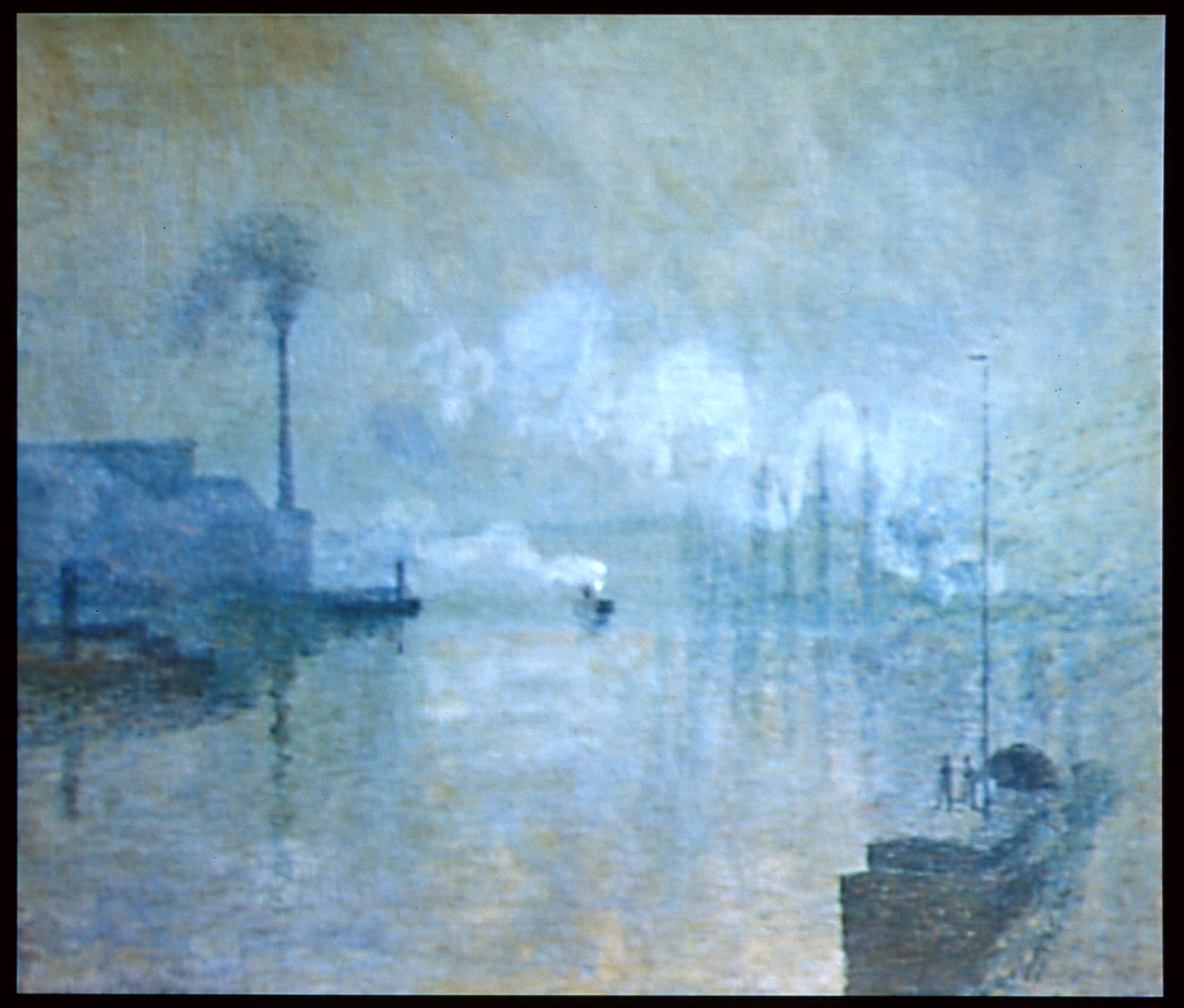
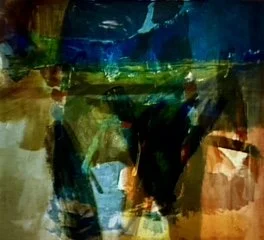






by Alexander Mordvintsev
SOLD OUT
Fine Art Print on paper
Size: 60 × 60 cm
The work is also available as a unique NFT (minted upon request) for 5 ETH
Description:
The Deep Dream algorithm was created in a series of experiments that led to the generation of psychedelic images full of intricate details that swept across the globe in the summer of 2015. Slides 4-8 show images that were created on the way to the final algorithm. Scientific progress is enabled by accumulation of ideas and building on the work of others. For example, p.4 “Just before DeepDream 1000 classes” shows a few images out of 1000 that were generated by the algorithm inspired by the paper . The network was also different: these images were produced by the AlexNet , created in 2012, which is often cited as one of the main triggering points of the Deep Learning revolution. These images lack the resolution and rich details, but already show promising capabilities of deep nets for image generation. The subsequent slides show steps that Alexander Mordivntsev took to improve the fidelity of the machine generations and finally giving the network more “creative freedom” by formulating the objective for amplification patterns already perceived by the network in a particular input image.
For more information please email us on info@katevassgalerie.com
Exhibited at Untitled Miami Art Fair, Miami, Kate Vass Galerie Booth A43, December 2024
Exhibited at Automat und Mensch 2.0, Kate Vass Galerie, May 2024